Abstract State
New York
Out Now!
Introducing ISSUE IV of Abstract State! Available now for purchase in both print and digital PDF formats.
Secure your copy today!
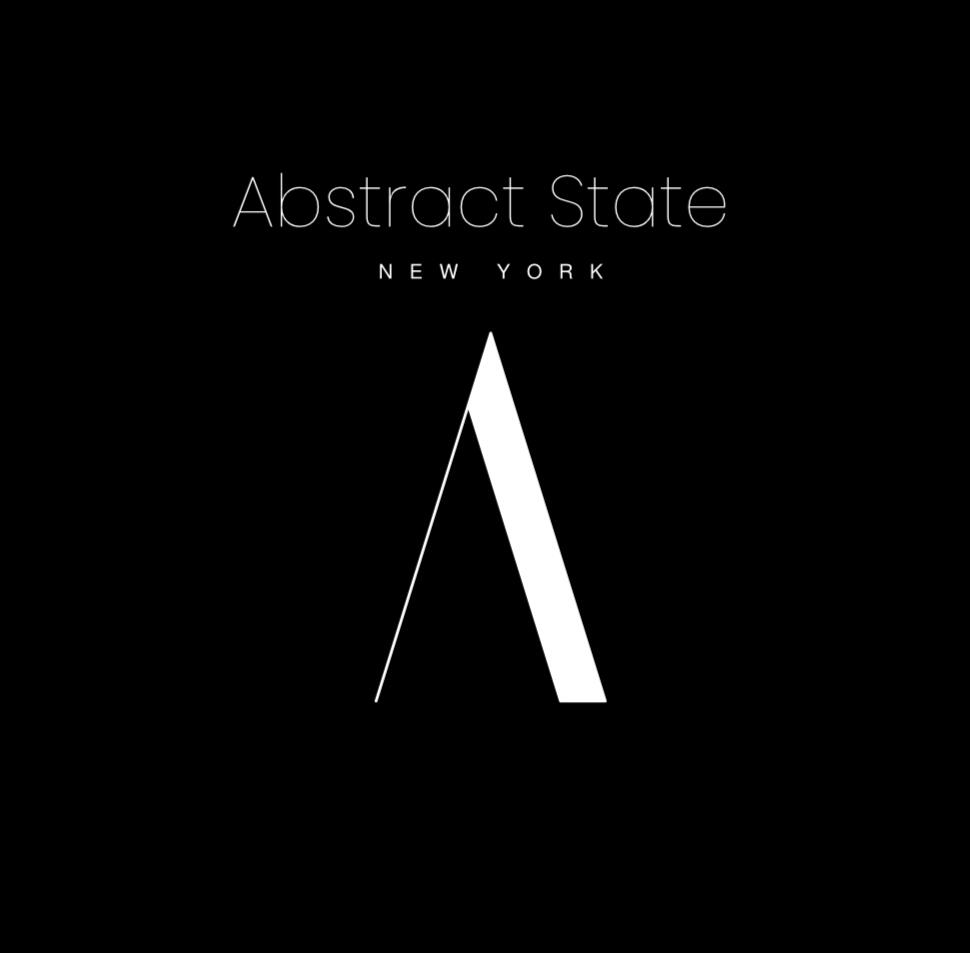
artists publication
Stories through art
contemporary art magazine
Sign up with your email address to receive news and updates.
Abstract State© 2023 - All rights served
Sign up with your email address to receive news and updates.
Abstract State© 2023 - All rights served
Support Us!
Become a Sponsor of Abstract StateWe believe in the power of contemporary art to inspire and create lasting connections. By becoming a sponsor, you’ll not only help us continue our mission of promoting emerging and established artists, but you’ll also gain visibility among our dedicated and growing audience. Your support helps us bring high-quality content to art lovers worldwide.Interested in partnering with us?
Contact us today at info@abstractstate.us to discuss sponsorship opportunities.Prefer to make a one-time donation?
Every contribution, no matter the size, helps sustain our magazine and its mission.
Sign up with your email address to receive news and updates.
Abstract State© 2023 - All rights served
CONTACT US
Abstract State Magazine is a beacon of artistic collaboration based in the vibrant heart of New York City. At Abstract State, we believe in the transformative power of art to inspire, connect, and elevate the human experience.Within the pages of our magazine, you'll discover a dynamic blend shaped by the hands of artists from around the world. Through stunning visuals, thought-provoking essays, and intimate interviews, we strive to illuminate the souls of creators and celebrate the diverse voices that shape our collective imagination.Our commitment to collaboration extends beyond the printed page. We actively engage with artists, curators, and enthusiasts to foster meaningful dialogue and forge lasting connections within the global art community. Through our ongoing series of interviews, we delve into the minds and processes of artists, uncovering the stories behind their work and inviting readers to journey deeper into the creative process.Abstract State Magazine is more than just a publication; it's a sanctuary where art finds its voice and where the boundaries of creativity are continuously challenged and redefined.Welcome to Abstract State Magazine, where the world of art comes alive.
Sign up with your email address to receive news and updates.
Abstract State© 2023 - All rights served
How to Apply?
SEND US AN EMAIL: info@abstractstate.us
Submission GuidelinesTo submit your artwork, please let us know if you are applying for an ''interview'' or ''publishing'' and follow these steps;1. Introduce Yourself: Provide a brief overview of your artistic journey, including a short bio/statement (under 300 words each).2. Artwork Submission: Attach up to three images of your artworks directly to your submission. Please do not send links to your artwork.3. Website/Social Media: Include your website and/or social media information so we can explore more of your work.Please note that image quality is not a requirement at this stage. If we confirm your participation, we will request high-quality images. Submission is free, but a small admission fee applies for selected artists.We look forward to your submission!
Sign up with your email address to receive news and updates.
Abstract State© 2023 - All rights served
SHOP
PRINT MAGAZINE


SHOP
DIGITAL PDF
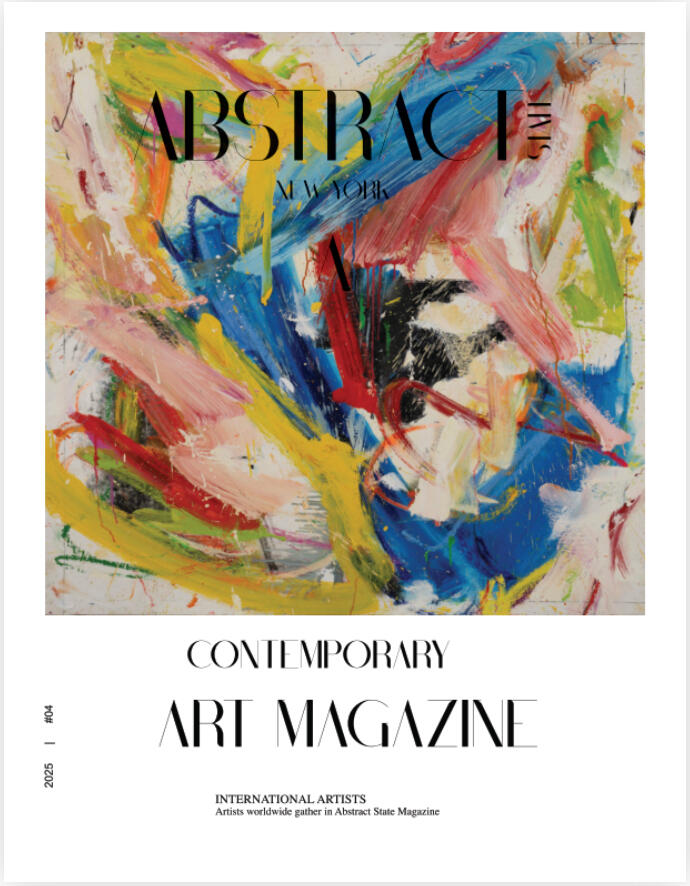
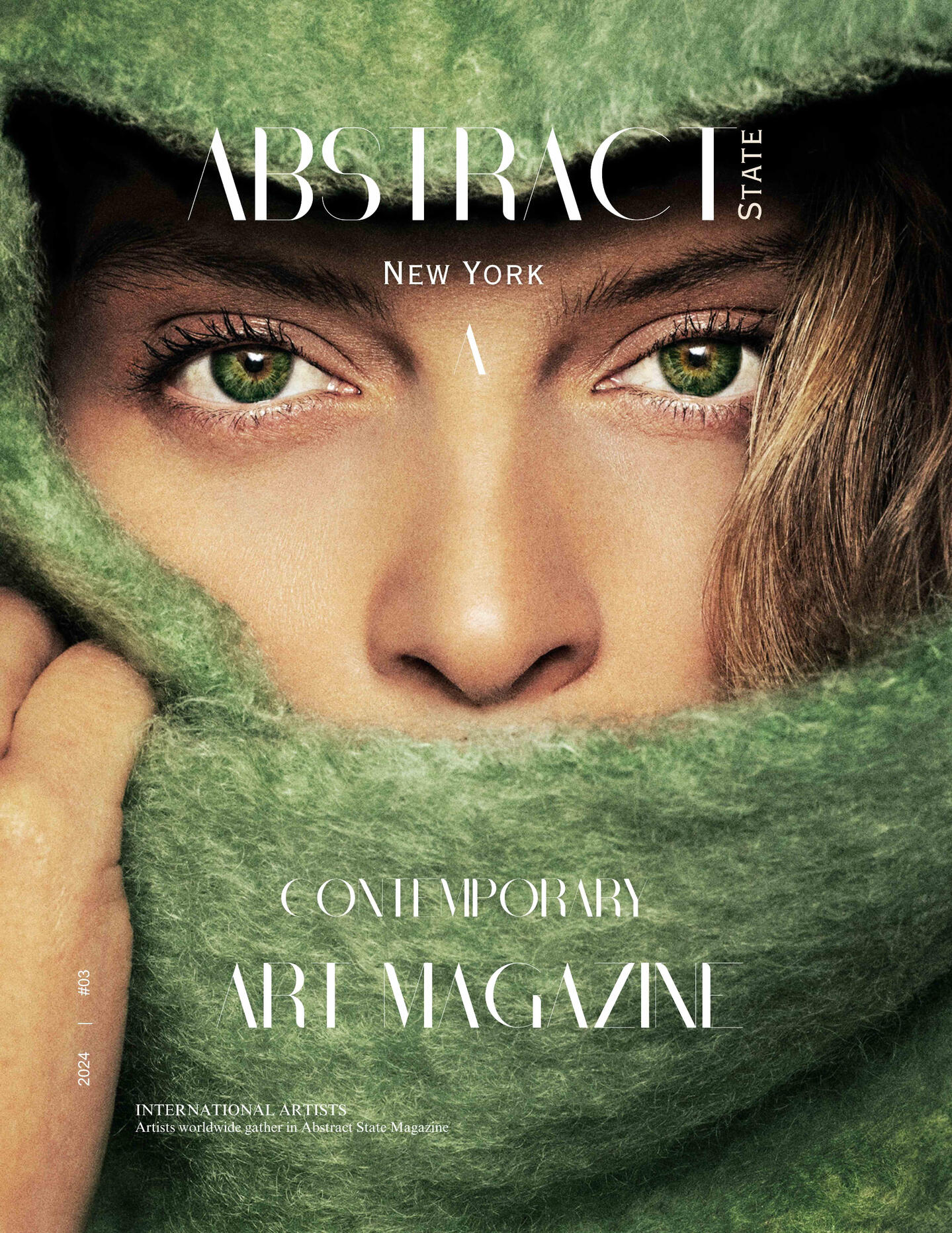
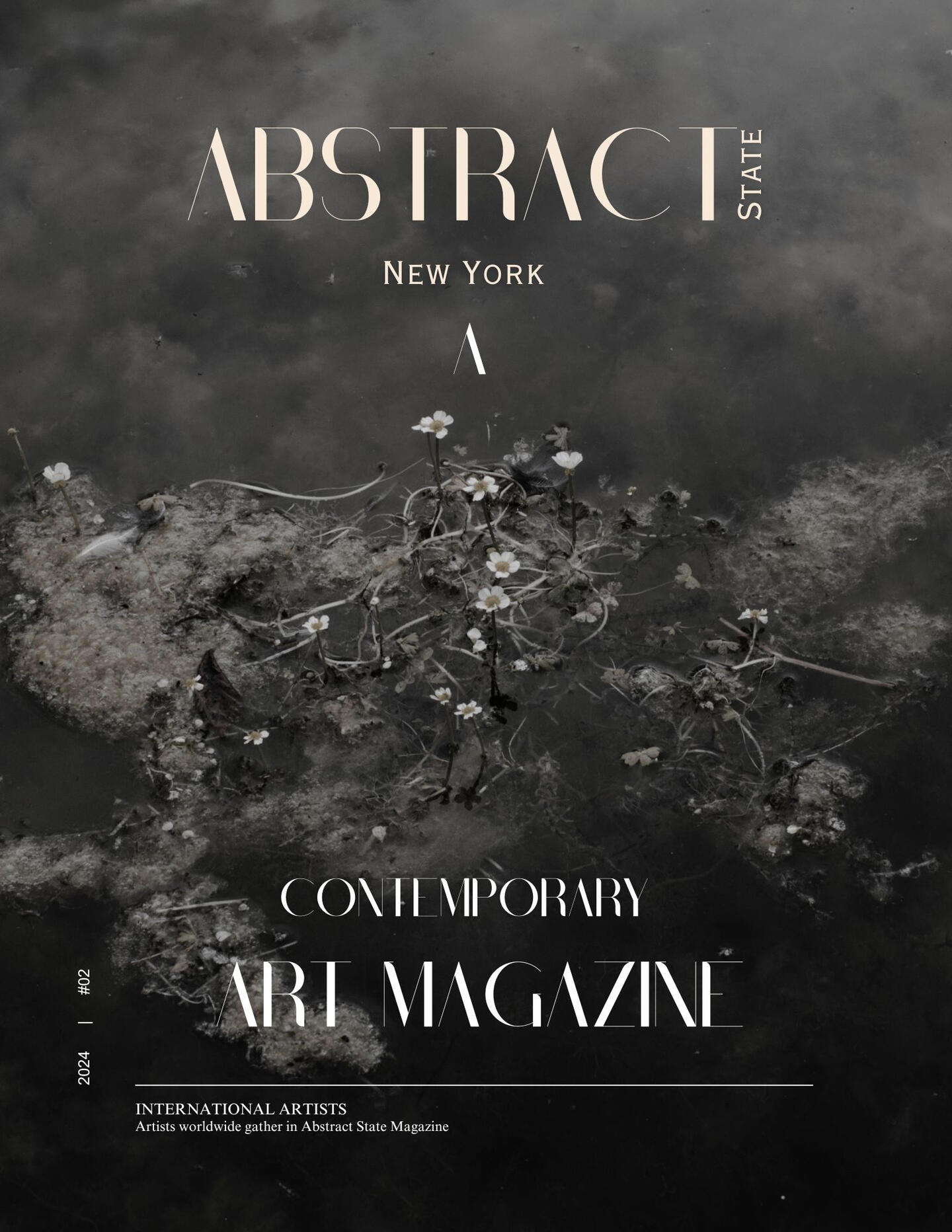

Sign up with your email address to receive news and updates.
Abstract State© 2023 - All rights served
Interview with
Courtney Colman
Courtney Colman is a respected art advisor and curator based in New York City. She is the founder of Colman Art Advisory, a firm specializing in guiding collectors through the contemporary art market with a focus on emerging artists. Colman holds a BA in Art History from Wellesley College and an MA in Art Market Practices from the Fashion Institute of Technology (FIT).Her career began at the Peggy Guggenheim Collection, where she developed a global perspective on the art world. From 2005 to 2013, she served as the Exhibitions Coordinator at Mixed Greens gallery in New York, a role that deepened her curatorial expertise.She has also been an adjunct instructor at FIT and a portfolio reviewer for institutions such as RISD, NURTUREArt, and the American Society of Media Photographers. Recognized for her contributions to the art community, the San Francisco Chronicle named her one of “S.F.’s New Art Guard: 5 Women Curating the City” in 2015. In both 2023 and 2024 she was named by ArtNews as one of the “Top Art World Professionals” in the area of art advising.

Photo by Coke O'Neal
How did your career in the art world begin and what is your education background?
My career began straight out of college. I was lucky enough to get a coveted spot as an intern at the Peggy Guggenheim Collection in Venice. From there I moved on to intern at the Guggenheim in New York in the curatorial department under Susan Davidson. At the same time I was pursuing my MA in Art Market (which was really an arts administration program) at FIT and beginning my internship at Mixed Greens Gallery (which eventually led to a full time job). Needless to say, it was a busy time!
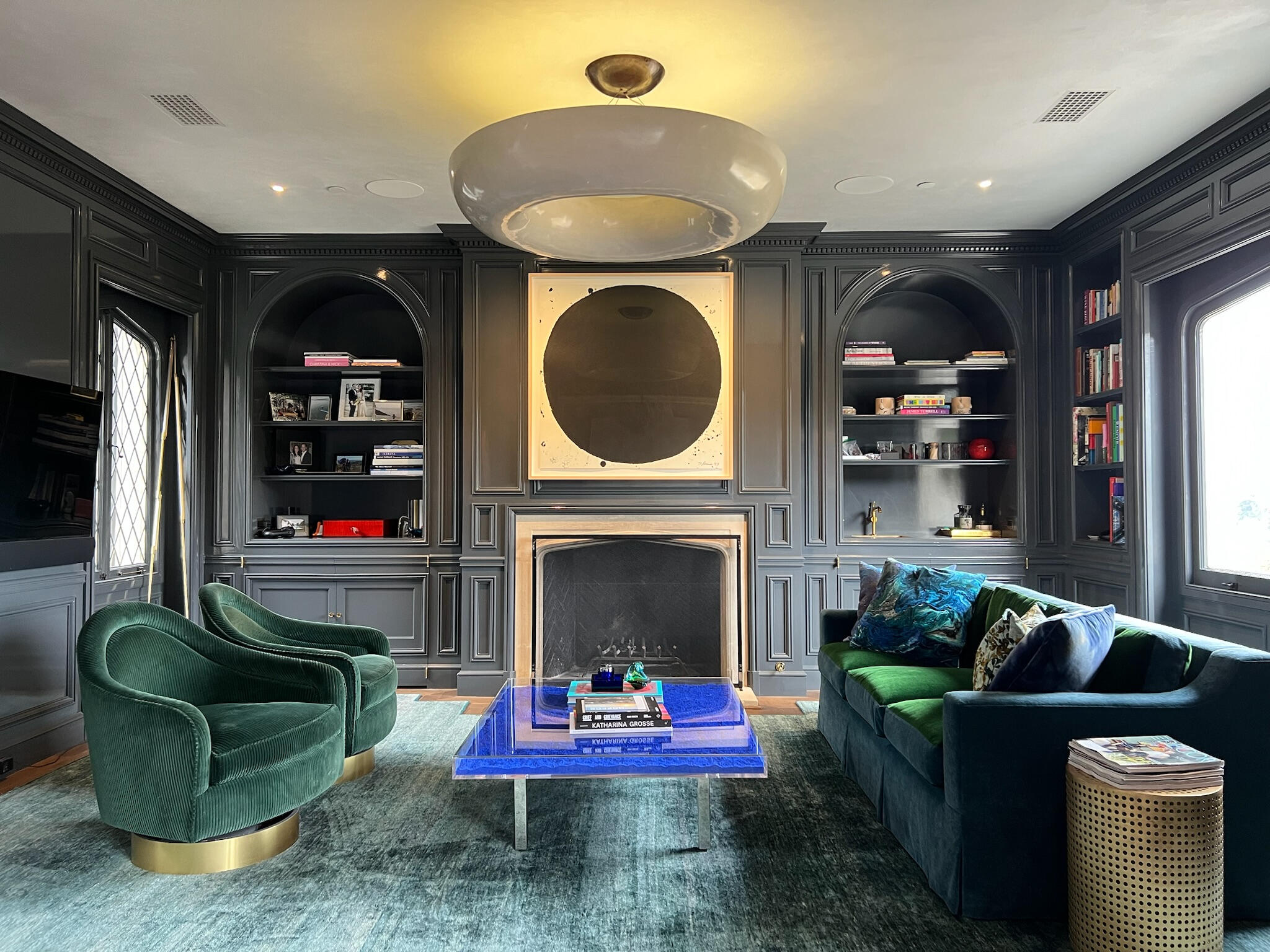
Private Collection, San Francisco
Having worked in both galleries and museums, what did you learn about curating, and how would you compare the experiences of working in each?
The most obvious difference to me was the pace with which you could plan and put on a show. Both museums and galleries line up their exhibition calendar years in advance, but the day to day pace of pulling together works for a show or getting a press release finalized is FAST in a gallery.The bureaucracy of a museum really slows everything down.Museums have additional worries to consider mostly appealing to sponsors, board members and the general public.I was lucky enough to work for a gallery that put on shows for the joy of putting on shows. It was our goal to fully support the artists’ intentions, whether that was a smart financial decision or not.
What motivated you to launch Colman Art Advisory, was it always a thing in your mind or did life shape you in that direction?
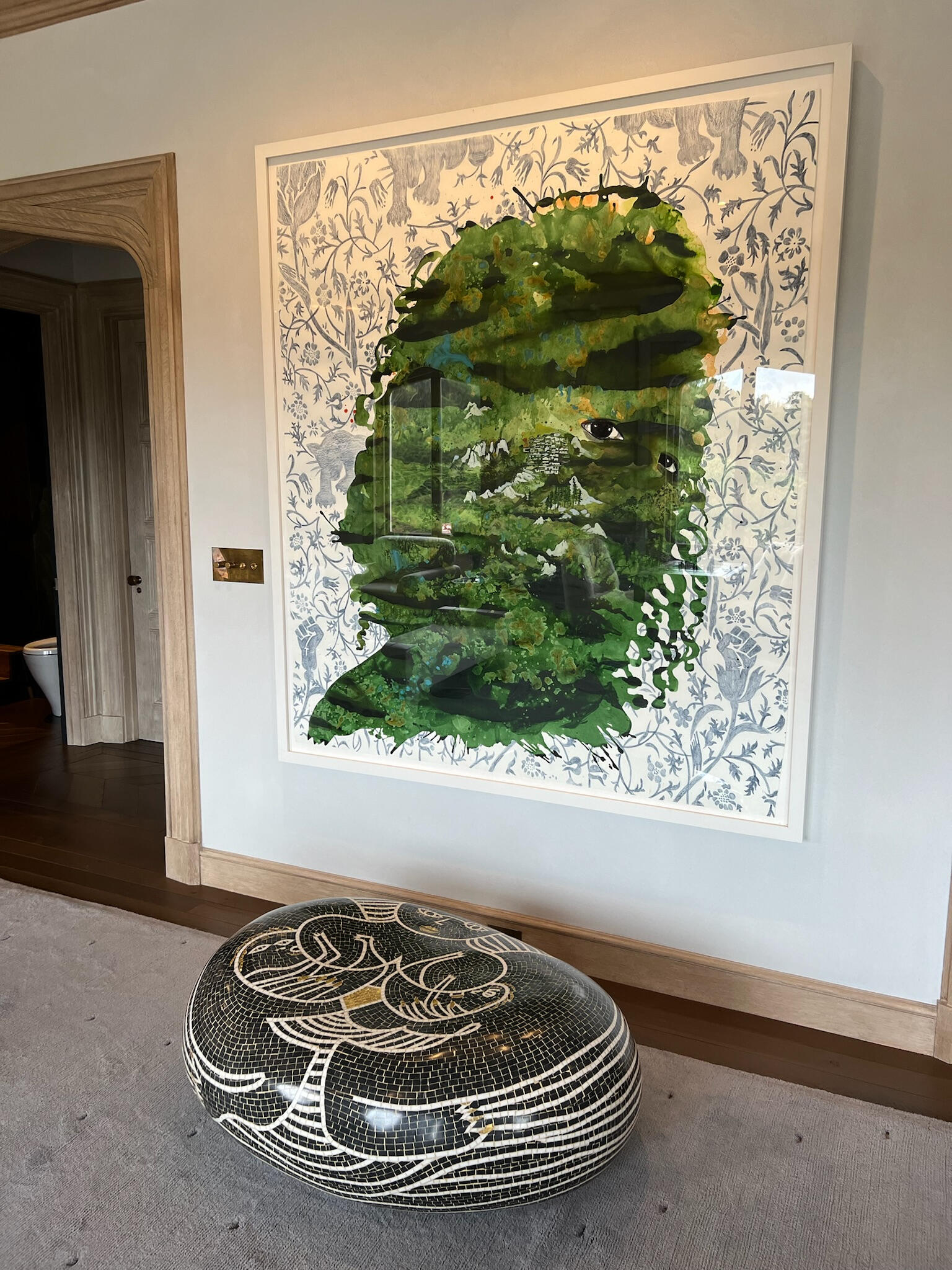
But life had other plans, and when I moved to San Francisco it became apparent that I the best way for me to bring art into people’s lives was not through curating another show, but by bringing collectors’ attentions to existing shows, local galleries, and emerging artists. I’ve now been an art advisor for 10 years and I’m happy to say that the flexibility of working for oneself is wonderful. I miss working directly with artists, but I do not miss working in an art fair booth!
How has your academic background shaped your understanding of the art market and your approach to advising?
My college degree was actually concentrated in Greek and Roman Art. If anything, I think this background has allowed me to view market with a longer historical lens. Trends come and go, but what ultimately remains is the art that speaks to the human condition.
Do you primarily engage with artists directly, or do you find yourself working more often with galleries?
I nearly always work directly with galleries. This is because most of the artists my clients are collecting are a bit further along in their careers and have representation. That being said, I’m always keeping my eyes open. I love going to Open Studios. I enjoy falling down the Instagram rabbit hole. Whatever I can do to keep seeing new artists, I do it.
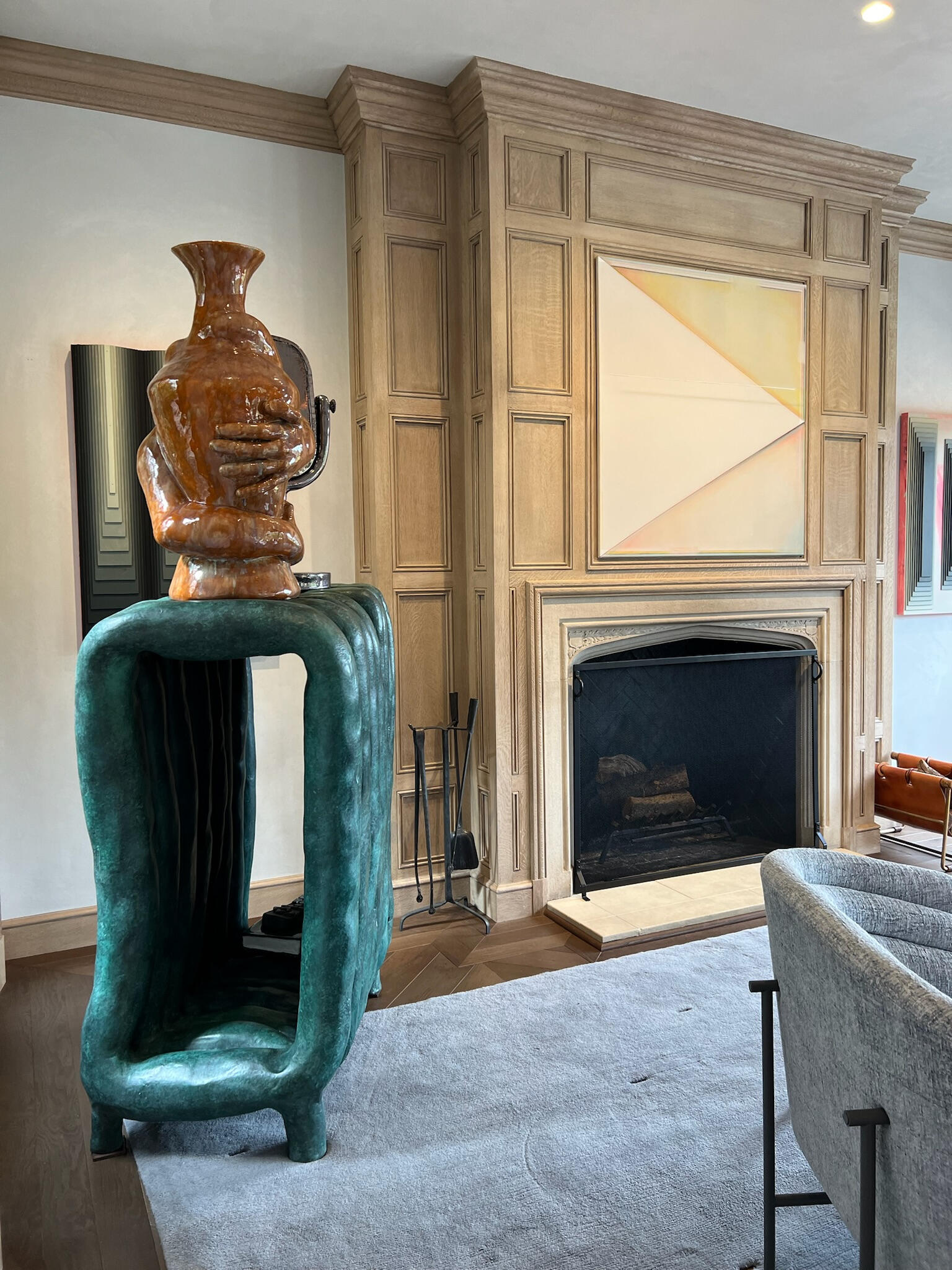
When I worked at Mixed Greens we famously accepted artist submissions. Every year we went through hundreds (if not more?) of these submissions, and I was flooded with a rolodex of new artists’ names to follow. I miss those times.
What qualities or criteria do you look for when selecting an artist or gallery to partner with?
Strong roster and great people. I look for galleries who are building solid careers for their artists, and who are trying to have an inclusive roster. I think it helps to work with people who are fun, engaging, and are understanding of your time. I have two young children so I don’t always have time to make it to evening events. I really appreciate the gallerists that go out of their way to send me previews or meet earlier hours.
You've been named to the Top 50 Art Advisors list twice. What advice would you offer to other strong women like yourself in the field?
These two little mantras help me the most: 1. Trust your gut. 2. It’s ok to say no. As women we are constantly pulled in a million directions. I think it’s important to know your goals. Are you aiming to expand? To build a bigger business? Or are you more focused on live/work balance? So that’s probably #3. Know your goals. I’ve found this to be especially helpful.
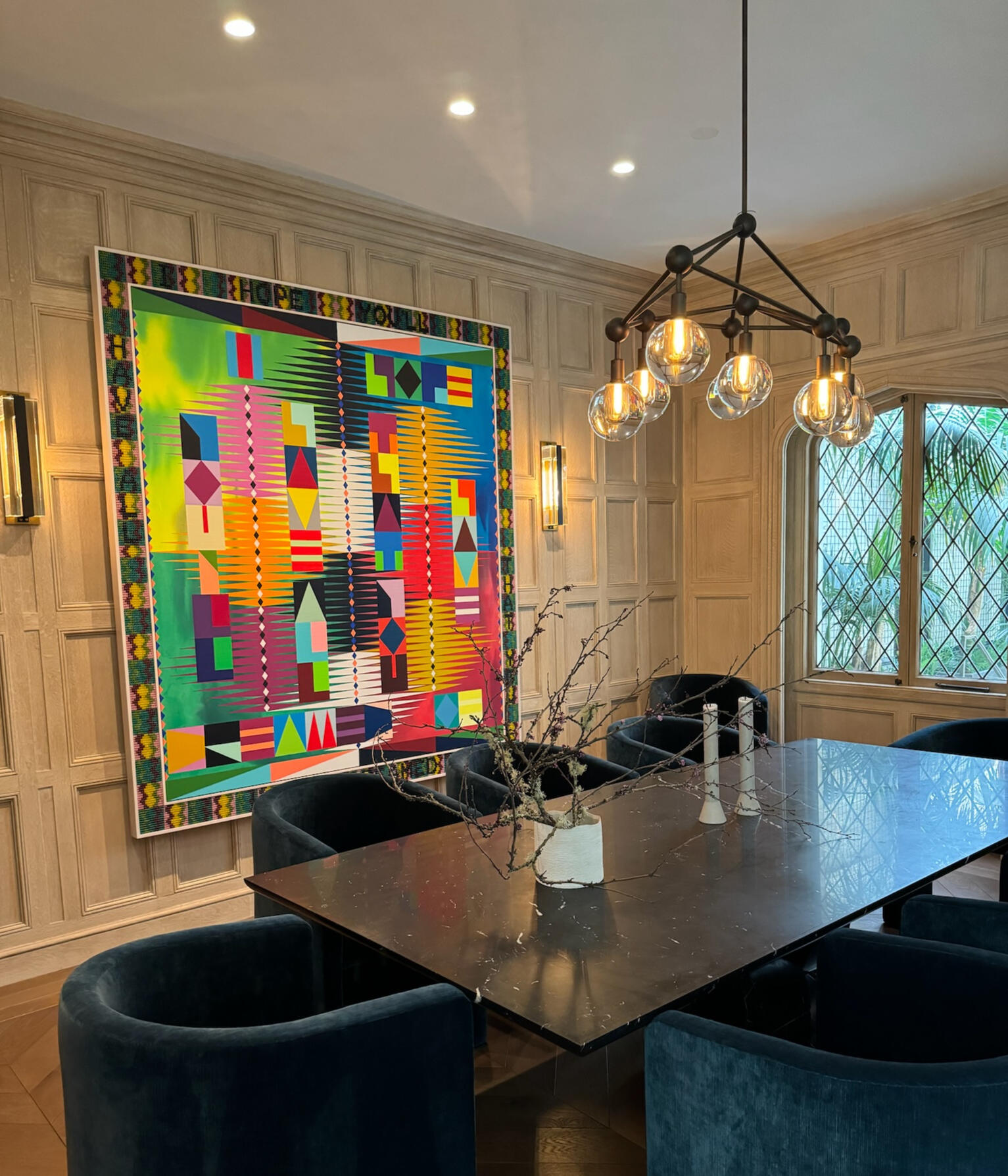
How do you choose the artworks for the space when a client comes to you? Do you prioritize the client or the space?
This is a tricky question to answer. There is a happy balance that exists this is what I’m always driving towards. I work with a lot of new collectors and it takes a lot of time, sometimes years, to feel like I know exactly what they will connect with. Until we find that perfect balance, I try to provide focused selections of artists/artworks that I know will work in their space. Once a collector really connects with art, space becomes a non-issue. I would hang art inside my kitchen cabinets if I had to, because I need it in my life that much. Years and years ago I remember someone in Chelsea was curating shows of tiny art in their desk drawer. This really spoke to my soul. This is what collecting is truly about.
Find out more
Sign up with your email address to receive news and updates.
Abstract State© 2023 - All rights served
Interview with
Carolina coto
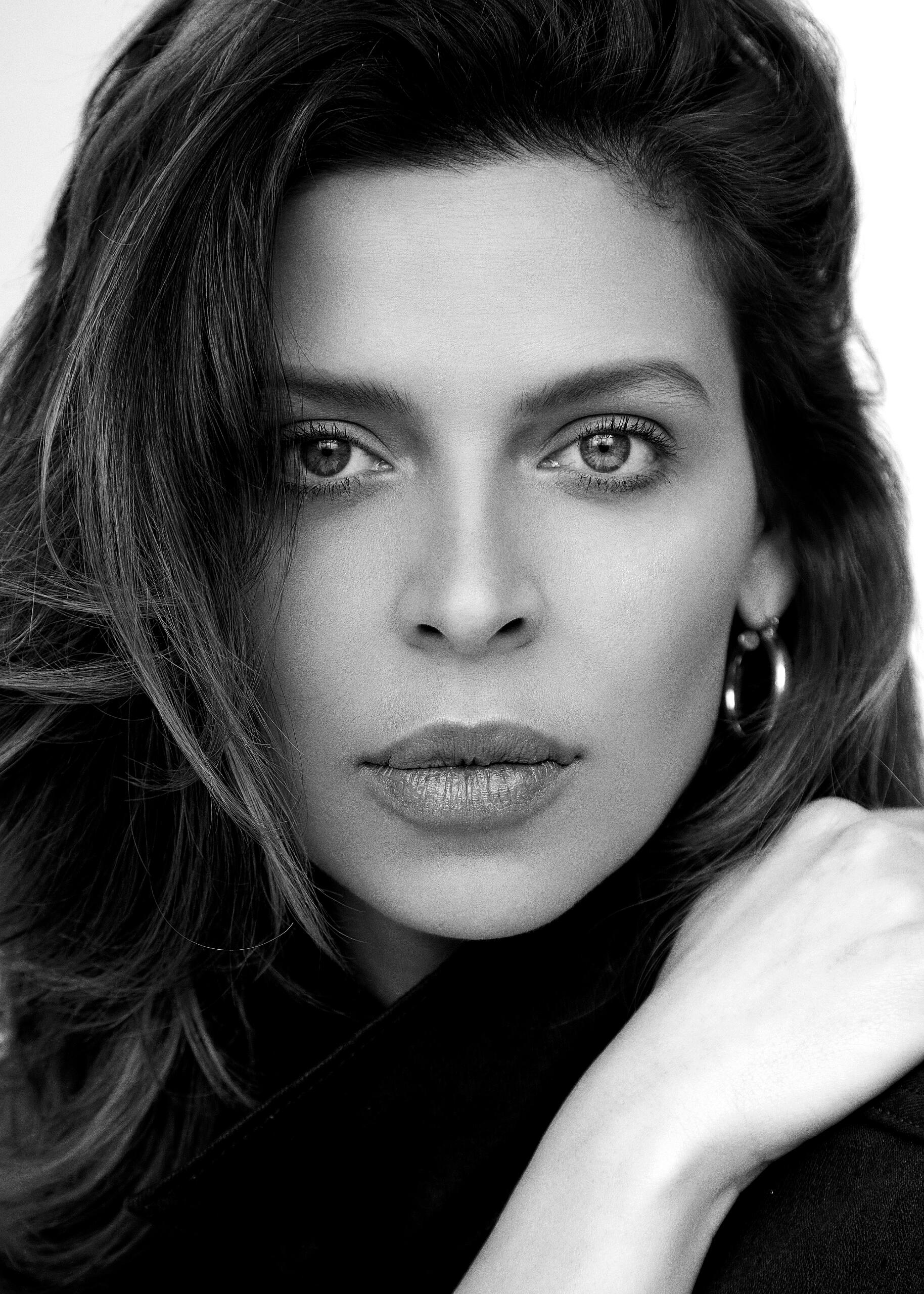
Carolina Coto is a multifaceted artist, model, actor, yogi, and founder of OMBRUJA, bridging art, well-being, and technology. As the Brand Ambassador of Costa Rica, Carolina has been featured in campaigns for global brands such as Nike and Water.org.She has appeared in notable publications, including the covers of Runner’s World and Health & Fitness Magazine. A former athlete, she is an award-winning performer with achievements spanning international film festivals, TV commercials, magazine covers and digital art collections.
Carolina is also an accomplished speaker and host, leading panels with industry pioneers and curating immersive art experiences, including exhibitions in New York, Costa Rica, and Art Basel.An active fellow of the Internet Society and former Vice President of its New York chapter, Carolina is often called a unicorn for her unique ability to excel across diverse fields, from magazine covers and internet expertise to the arts and modeling. An active fellow of the Internet Society and former Vice President of its New York chapter, Carolina is often called a unicorn for her unique ability to excel across diverse fields, from magazine covers and internet expertise to the arts and modeling.
You’ve lived in England and now reside in New York. What inspired your move, and how has it influenced your career?
I moved to England after becoming the face of the global campaign “Buy a Lady a Drink” by Stella Artois and Water.org, photographed in London by Nadav Kander. I loved my time there! So many dreams came true, including working with Nike on global projects and landing my first international magazine cover for Runner’s World. The perspective of creative talent in London is wholesome, integral, and showcases advanced storytelling. Later, I moved to New York, driven by my passion for technology and the arts, as well as to be closer to my family while continuing my modeling career. In New York, I founded OMBRUJA and discovered a profound connection to the global internet community.
Carolina, you have a diverse background ranging from modeling and fitness to artistic activism. How has this varied journey shaped your identity as an artist?
The author of “Atomic Habits,” James Clear, says it best: “Entrepreneur's mind. Athlete's body. Artist's soul.” This quote resonates deeply with my lifestyle and profile. Modeling has been a journey of self-discovery for me, while fitness empowers my lifestyle. Well-being has always been at the core of my work, which is why activism feels like a natural response to exploring concepts of self and identity.
MadonnaReinterpretation of the classic image of the Madonna, representing the mother and initiator, embodying hope and serving as the patroness of the arts. She symbolizes not just the nurturing force of creation, but also the timeless protector of artistic expression.
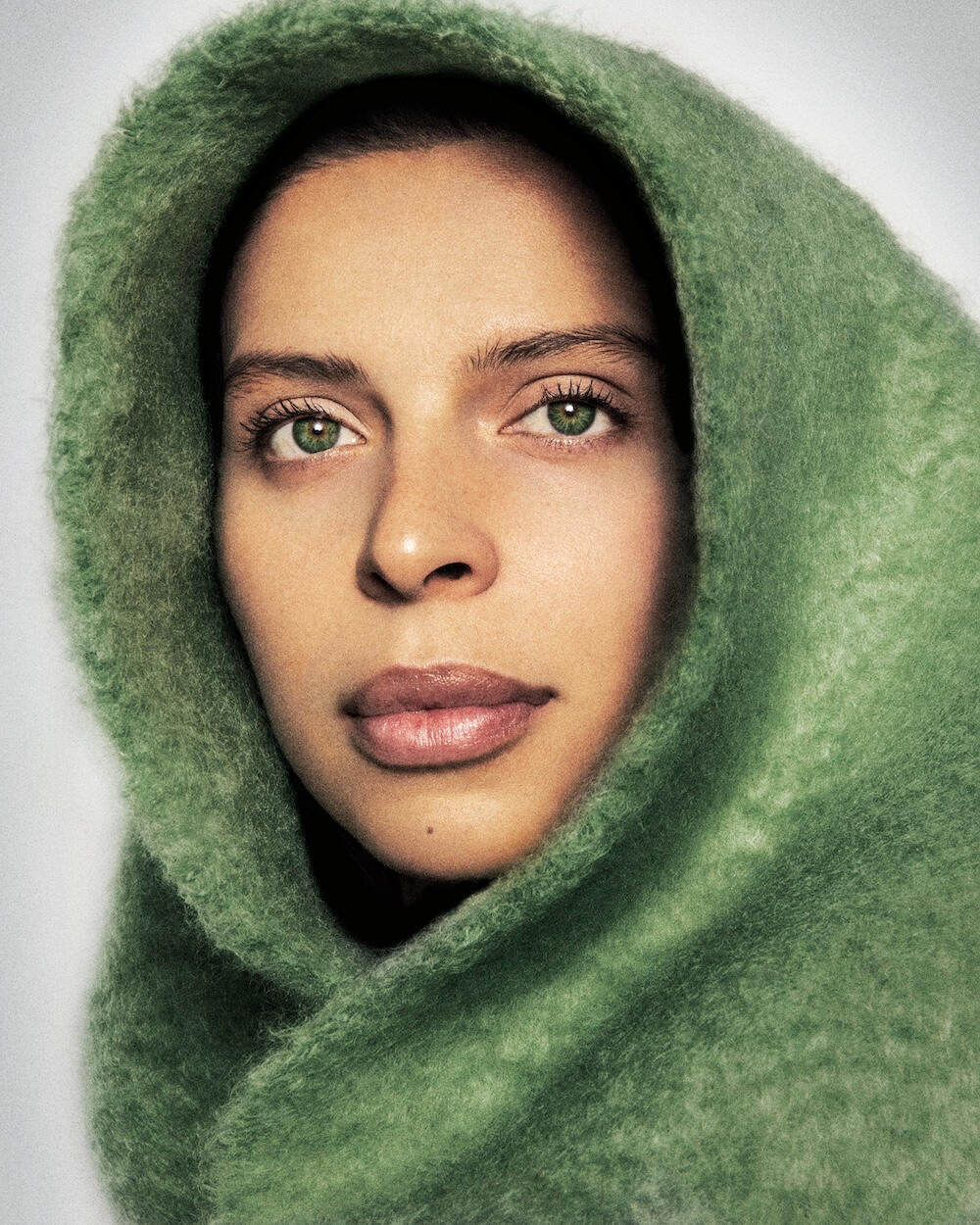
The Human Value project, which seeks to explore how art can impact societal values. What drew you to this initiative, and how do you see art as a vehicle for social change?
My first on-chain collection in 2021, “Digitals,” became a manifesto of self and identity. The third piece I intended to mint, titled “Human Value,” felt like it needed more time to evolve and fully understand. Three years after launching the manifesto, I realized there is no standard for recognizing the provenance of the subject in photography or modeling. This realization led me to reflect deeply: who else is not being credited for their contributions, their work, or simply for their existence? Why is the technical name of the camera used to take the photo often included, but not the name of the subject? Is the camera more valuable than the person in the image? This question became central to my exploration: What, then, is Human Value?
Tell us about the Human Value project and how the idea came out?
Over the past three years, as I’ve explored the question, What is Human Value? and much has changed in our world. We stand on the brink of a technological revolution and many things are evolving rapidly money and information are now decentralized, allowing anyone, anywhere, to create and share them. As we transition into an onchain world in the era of Artificial Intelligence this question becomes central to every challenge we will face. In the past year, war has been broadcast to our phones and social media like never before in history, normalizing the consumption of horrendous images and videos. The question of which ones are real and which ones are fake is significant, but to me, the question that truly matters remains: What is Human Value?

Window to the SoulHuman value begins in the eyes, as they are the window to the soul. Looking into someone's eyes completes the self. There is no self without the other.
The project features the series "Window to the Soul." What inspired you to create this series, and tell us why you are the subject?
I am the subject of “Window to the Soul”, as the collection was inspired by the manifesto “Digitals.” and it was the first photographer to open the collection. It includes three more: “Faith,” and “Madonna.” These photos were shot in 2023 by Cory Vanderploeg, a photographer who collaborates with Plato, but the series wasn’t completed until 2024During the summer shutdown of Columbia University, I met Jake Borden, an anthropology student and photographer and asked him the same question, What is Human Value to you?His response led to a piece that gave direction to the series. This became my first guest contribution with this photograph “Amal,” a refugee from Lebanon, which we included as “exhibit only.” Later in the year, I met Claudia Rosel, a photojournalism student at Columbia University. We connected over shared themes of visual ethics and empowering the subject. Her work completed the collection, and she became my second curated guest in the series.
As a Costa Rican artist, how do your cultural roots influence your art? Do you see specific cultural values or experiences reflected in the work you create?
I am part of one of the few generations in the world to grow up in a country without an army. In Costa Rica, it was abolished in 1948, and the resources were redirected toward healthcare and education. You’d be amazed at what an educated, happy, and safe community can make you feel like. This is one of the reasons people love visiting Costa Rica. It’s also because we prioritize protecting our environment, and natural intelligence is deeply embedded in our essence and identity.
FaithBeyond religion or spirituality, having faith in something greater than ourselves-a force or belief that transcends the individual and connects us to a broader purpose.
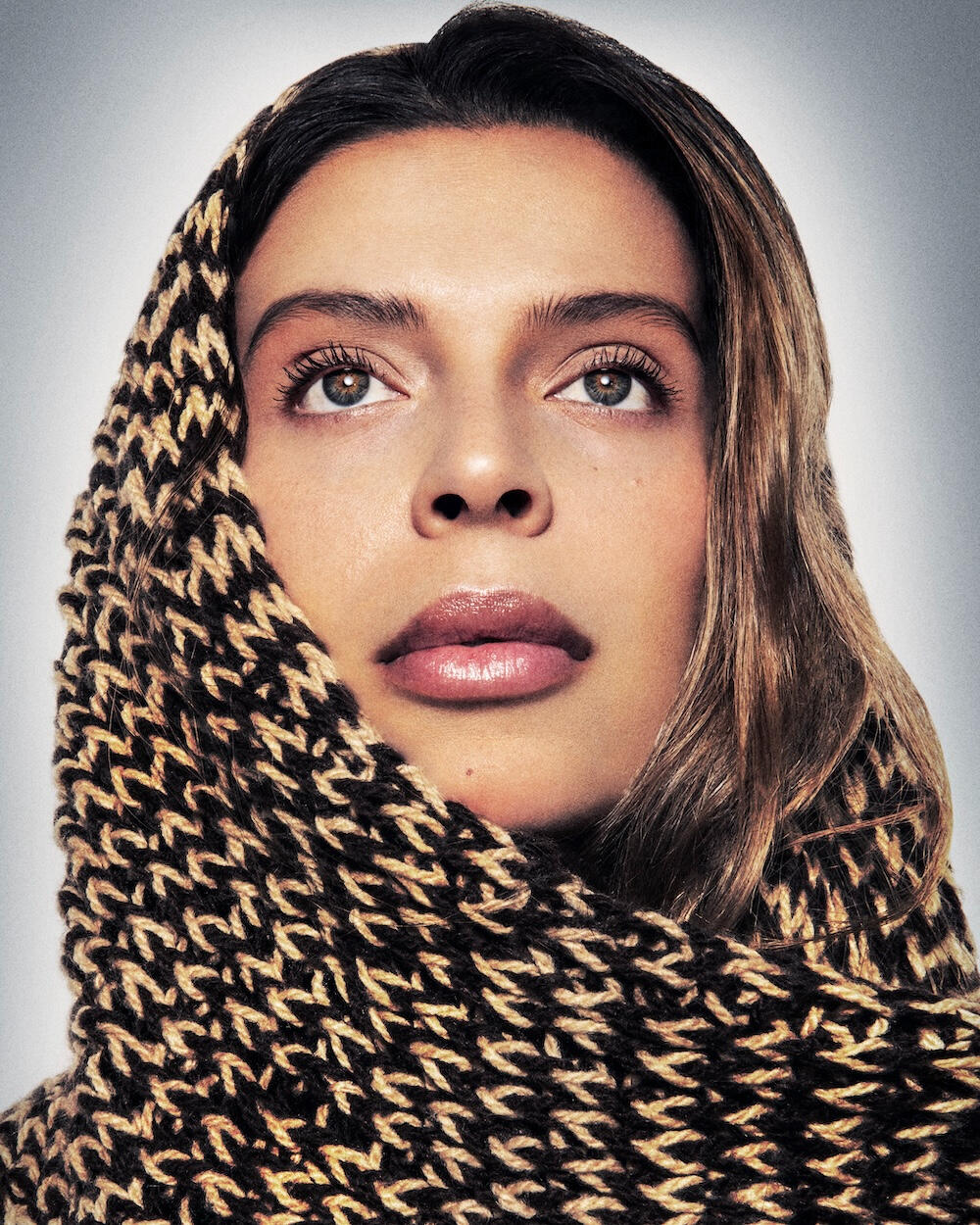
Your background in fitness and wellness is also an important part of your identity. Do you see a connection between your wellness work and your artistic practice? How do they complement each other?
Wellness is at the forefront of my work, from physical to mental fitness, our mind and body are deeply interconnected. Energy flows through movement, which is why I love dancing, yoga, and modeling! Emotions are energy in motion. The creative process can sometimes feel overwhelming and chaotic, and during those moments, I move to transform that energy and often listen to music while working, though there are times when I need complete silence. I like creating from a place of well-being, and it’s always a balancing act and it’s never over or perfect. Sometimes it is about drinking more water, moving or calling a friend. Wellness is a wheel, and it is not static! My intention is to create from source energy, clarity and purpose since it impacts how I influence the world. My practice often includes visualization, journaling, and meditation
For artists who want to use their work to create change or address social issues, what advice would you give? What do you think is the most powerful way to communicate a message through art?
In social-emotional learning, we understand that the creative process begins with ourselves. By understanding the self, we can build better relationships with others which in turn create stronger communities. Finding quiet time to truly listen to and connect with your inner voice will always guide you toward something greater than yourself, and that is how we impact the world. Practice allows you to co-create with the universe and sharpen your intuition. Trust the process and keep going.
Sign up with your email address to receive news and updates.
Abstract State© 2023 - All rights served
Interview with
Joan Pañell
Joan Pañell Fernández de Liencres is a self-taught artist from Barcelona, Spain, known for his vibrant and expressive mixed technique abstract paintings. Born in 1998, he has been painting since 2020. His art is characterized by the use of bright colors and dynamic brushstrokes, often combining abstract forms to convey deep emotions and personal experiences.
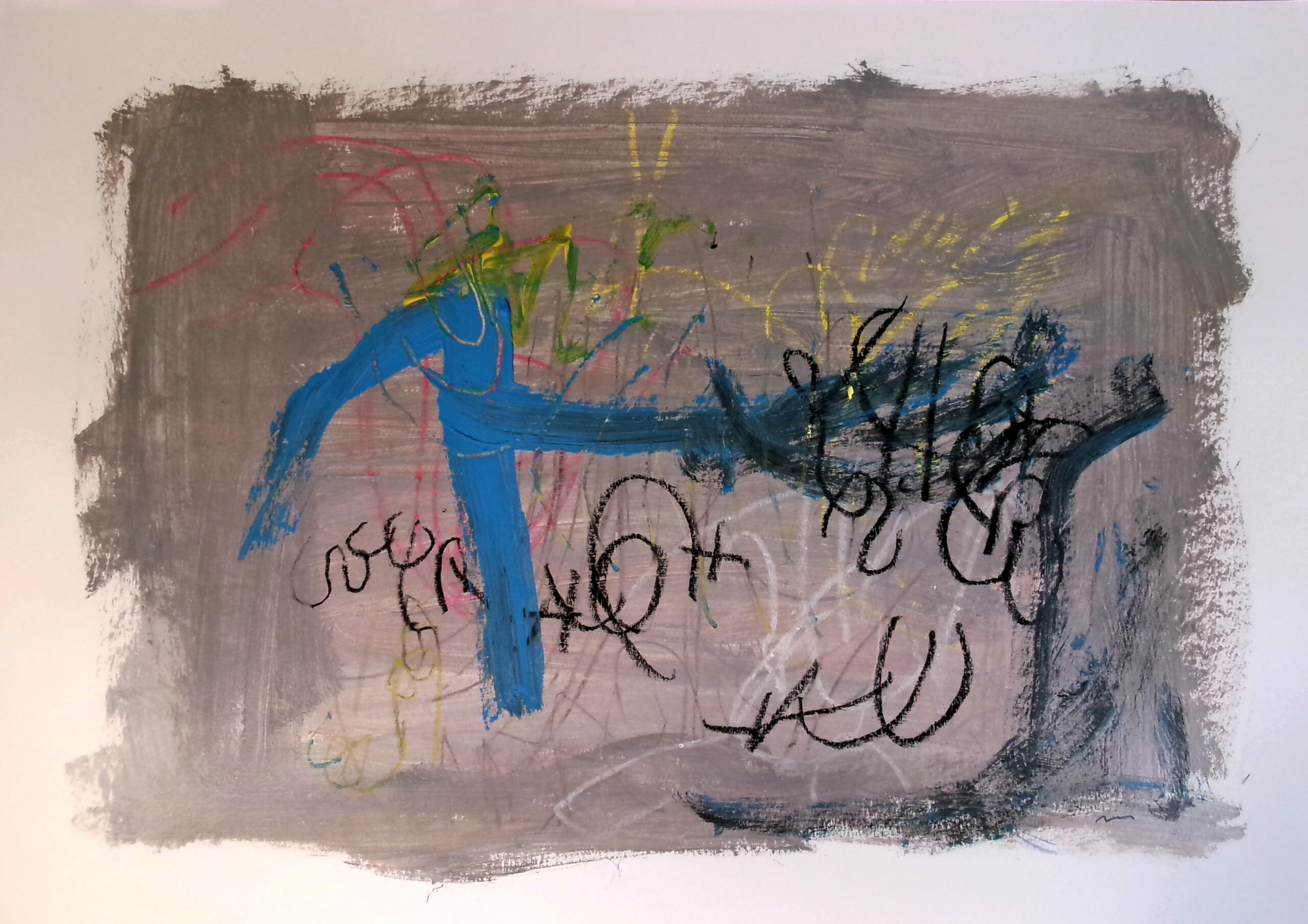
Joan's work reflects a fusion of intuition and technique, often beginning with an emotional spark or thought and evolving through multiple layers. His inspirations include everyday life, emotions, and the interconnectedness of existence, alongside influences from artists like Cy Twombly.
Joan Pañell Fernández de Liencres explores the intersection of emotion, memory, and the subconscious through the use of color, form, and texture. Fascinated by the way non-representational art allows viewers to project their own emotions and stories onto the work, he approaches painting with an intuitive and experimental process. Through layered compositions and dynamic brushstrokes, Joan seeks to evoke movement and transformation, capturing the fluid and ever-changing nature of personal experience and perception. Each piece becomes an invitation for reflection and emotional resonance.
Tell us about your journey; as an artist it began in 2020. What inspired you to start painting, and how has your practice evolved since then?
After a rough patch in my life, I turned to painting as a form of refuge. I have always been good at art from a young age, so it felt natural to return to painting to reconnect with my roots and stabilize my life and mind. I discovered that it was a wonderful tool for self-expression, and I now use painting as a form of therapy. It fulfills the need to create that I feel within me. I started painting figuratively, and after a couple of years, I transitioned to abstract painting following an abstract painting commission. I instantly connected with abstraction. It showed me the path I want to follow and pursue as an artist. I paint as much as I can, and in the future, I would like to create larger works.
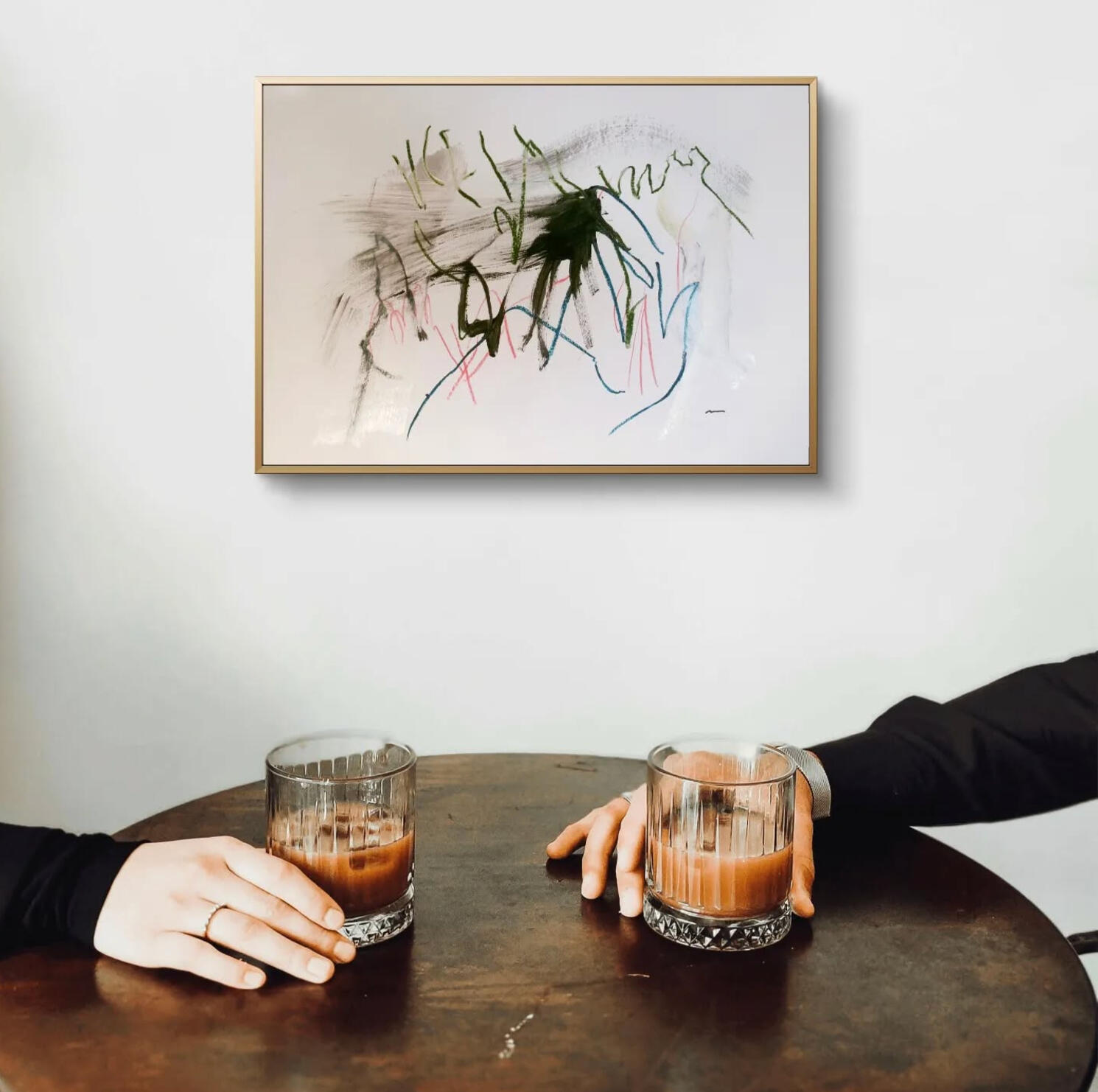
Your art reflects a blend of emotional depth and technical precision. Can you walk us through the stages of your creative process, from concept to completion?
My creative process is deeply instinctual, guided by an emotional spark that draws me to the canvas. I begin with unrestrained gestures and marks, allowing myself to flow. From there, I follow the direction the piece takes, layering textures, colors, and forms in an intuitive dialogue. Each stroke responds to the one before it, a spontaneous exploration of contrasts and harmonies. The painting is complete when it feels alive, as if it has spoken back to me, signaling that it’s ready to exist on its own.
Your use of bright colors and lively brushwork is distinctive. How do you decide on your palette, and how does it help you communicate the emotions behind your art?
My palette is deeply tied to the emotions I’m expressing, with each color acting as a vessel for feeling. Bright, saturated hues allow me to amplify energy and intensity, while softer tones bring balance or introspection. When I begin a piece, I choose colors that resonate with the emotion I’m channeling—vivid reds for passion, bold yellows for hope, or deep blues for melancholy. As the work evolves, the way the colors interact becomes a dialogue, layering and shifting to create emotional depth. Through these choices, I aim to translate intangible feelings into a visual language that speaks directly to the viewer.
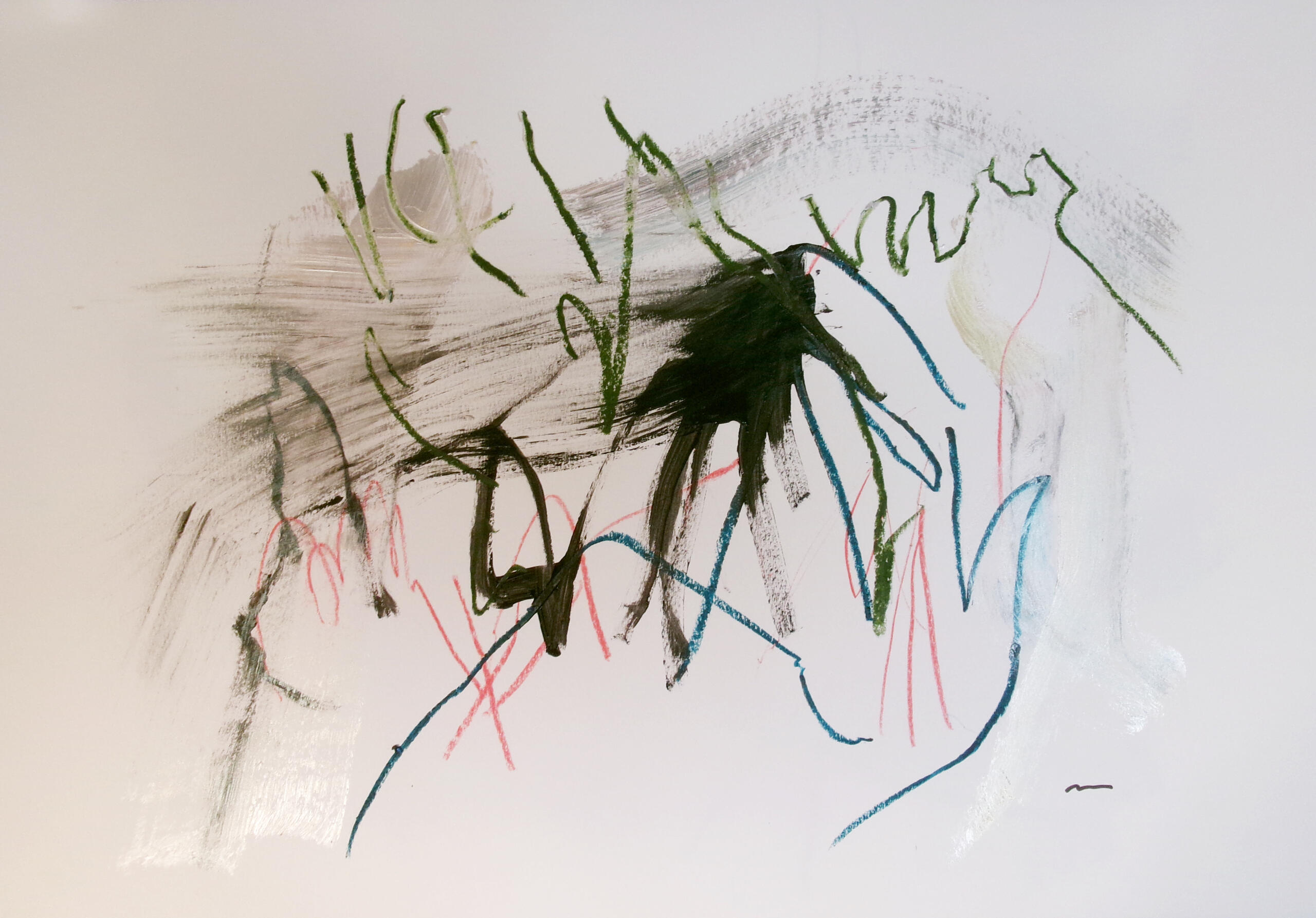
With everyday life and Cy Twombly as sources of inspiration, how do these factors influence the way you approach abstraction in your art?
Everyday life and the work of Cy Twombly are essential to my approach to abstraction, influencing both my process and the emotional depth of my pieces. Life’s rhythms,its chaos, its small, quiet moments, serve as a constant source of inspiration. I draw from the spontaneity of fleeting interactions, gestures, and thoughts that come and go, much like Twombly’s raw, gestural marks that capture the essence of human experience. His ability to blend simplicity with complexity in abstract forms encourages me to approach my own work with a sense of freedom and urgency, allowing the canvas to evolve without overthinking. My abstractions, like the world around me, are full of movement, energy, and unpredictability, reflecting the beauty and mess of life itself. Through these influences, I embrace the idea that abstraction doesn’t need to be ordered or controlled; it’s about creating a visual language that mirrors the fluid, ever-changing nature of experience.
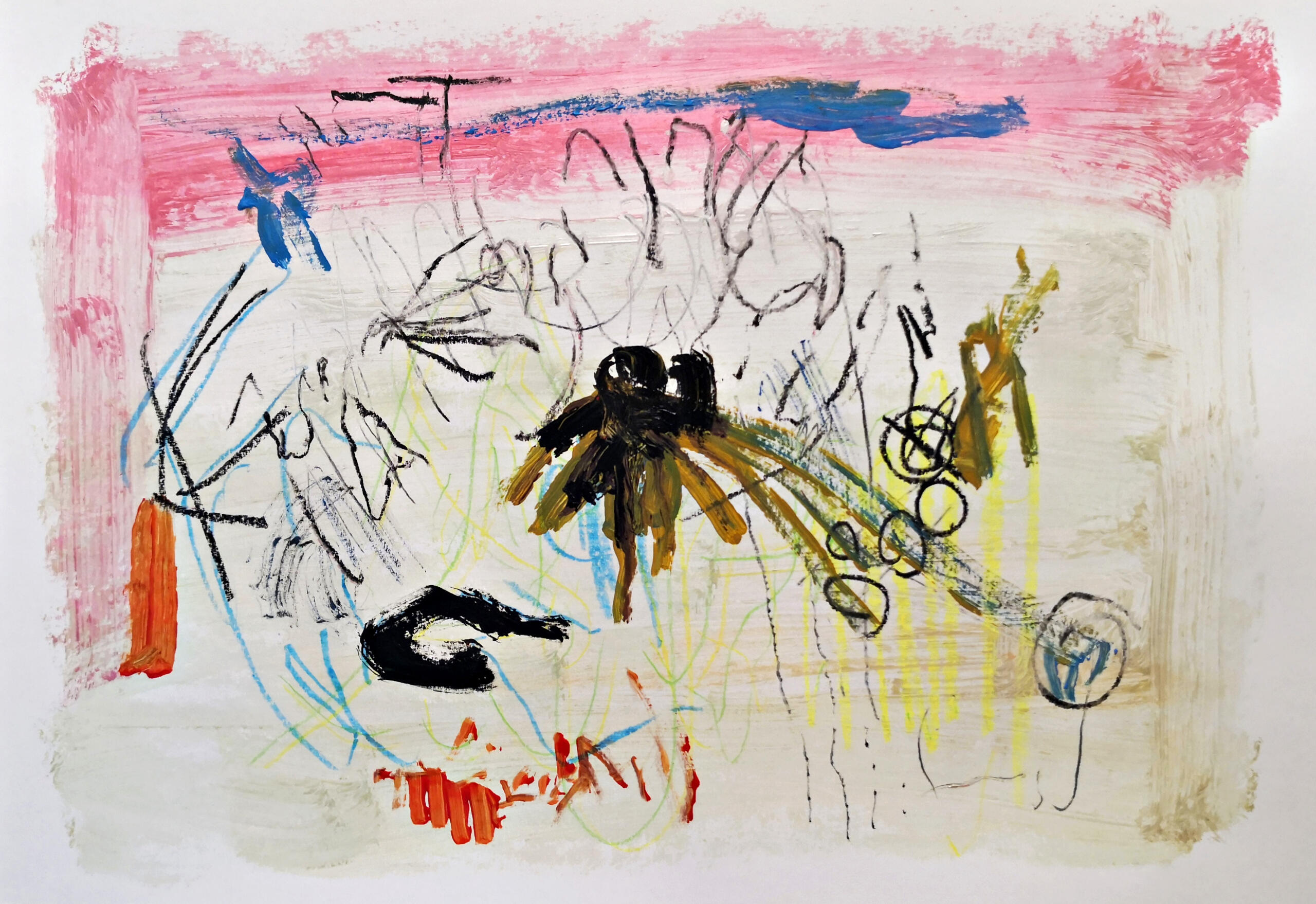
By its nature, non-representational art invites diverse interpretations. How do you blend your personal narrative with the openness you provide for your viewers?
In non-representational art, the beauty lies in its ability to evoke different interpretations, and I embrace that openness while weaving my own personal narrative into the work. My approach is to channel my emotions, thoughts, and experiences through color, texture, and form, creating a foundation of personal meaning. However, I purposely leave space for ambiguity, nothing is overly defined or fixed. I want viewers to feel like they can step into the painting and bring their own stories, feelings, and associations. The abstract nature of my work invites them to fill in the gaps, allowing each piece to become a shared experience, both personal and universal. My narrative is present in the energy, the tension, and the mood, but I believe the true power of abstraction lies in its ability to transcend individuality and connect with a broader, collective emotional landscape.
In your work, movement and transformation are vividly expressed. How do you overcome the static nature of painting to convey such dynamic energy?
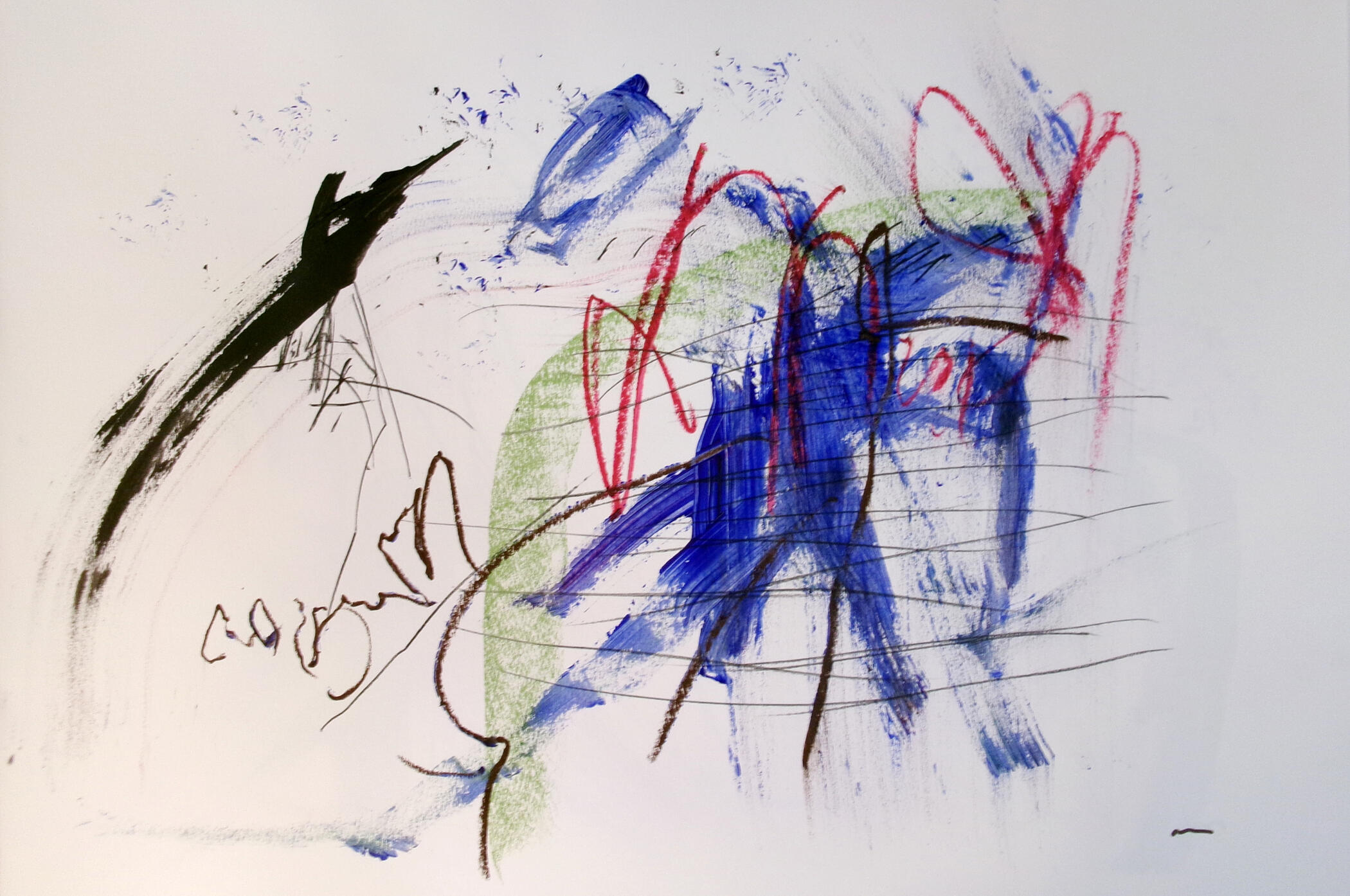
I focus on embracing movement within every stroke, layer, and gesture. I use fluid, sweeping motions and bold, expressive marks to suggest motion like capturing a moment in time just before it changes. The act of painting itself becomes part of the energy, with each layer building upon the last, creating a sense of transformation. I often use the contrast between thick, textured areas and delicate, lighter brushwork to create visual tension, suggesting forces at play. The colors, too, play a role they vibrate and shift as they interact with one another, heightening the sense of movement.
Even in the stillness of a painting, I aim to evoke the feeling that the work is in flux, as if it could shift or evolve at any moment. By embracing spontaneity and allowing the painting to "live" on the canvas, I strive to invite viewers into that energy, making the still image feel like a pulse frozen in time.
As a self-taught artist, what challenges have you faced in developing your style, and how have you embraced them to create your unique artistic voice?
As a self-taught artist, the challenges have been both formative and liberating. Without a formal structure, I initially struggled with finding a clear direction, there were no rules to follow, no established path. I faced moments of doubt, unsure if my approach was "valid" or too unconventional. But over time, I realized that these uncertainties were key to developing my unique voice. Instead of adhering to traditional techniques or expectations, I allowed myself to experiment, make mistakes, and explore without boundaries. The freedom to fail and learn from those failures has been essential in shaping my style. I embraced the idea that my imperfections were not hindrances, but expressions of my individuality. Through trial and error, I’ve learned to trust my instincts more, and the absence of formal training has actually become a strength, allowing me to develop an authentic, personal approach to abstraction. Each challenge became an opportunity to push past limitations and redefine what my art could be.
Find out more
Sign up with your email address to receive news and updates.
Abstract State© 2023 - All rights served
Interview with
Hollis Taggart

Attended Washington & Lee University, Lexington, Virginia, from 1967-1971. Majored in Business Commerce; minor in art history.Graduated from Tulane University School of Law in 1974; receiving the award of Order of the Coif for being in the top 10% of graduating class.Practiced law in New Orleans for 2 years. Joined Kurt E Schon Gallery in 1977. Started own gallery in 1979.
Can you share some insights on how your education in business commerce and art history at Washington & Lee University, followed by your law degree from Tulane University, influenced your decision to move into the art gallery business?
When I was at Washington & Lee, and also at law school at Tulane, I had no sense of being an art dealer…I simply liked art and was starting to collect (modestly) at that time. Mostly prints and British watercolors. My studies in business and art history ended up being useful, as well as my law background, in my eventual decision to enter the art business. I use all 3 disciplines in the business!
What motivated you to leave your law practice and join Kurt E Schon Gallery in 1977, and how did this experience shape your approach to running your own gallery?
When I worked at Kurt E Schon Gallery in New Orleans, I was somewhat experimenting, and was not 100% certain that I would stay in the art business or return to the law practice. But after a short time, maybe 6 months, I knew I wanted to give the art dealing business a serious try. I know it is a blessing to love what you do in any profession…Even after 45 years, I love the art business and look forward to what each day may bring. It is never boring!
What were some of the challenges and milestones in establishing your first gallery, Taggart & Jorgensen, in Los Angeles, and later moving to Georgetown, Washington, D.C.?
When I decided to go out on my own, and opened my first gallery in the Summer of 1979, I did so because I had several clients from Los Angeles who encouraged me to come to L.A. There were few galleries in L.A. at that time, and a “field of all possibilities”, so I went there. It was a challenge because at that time I was dealing primarily in 19th century traditional European art. L.A. was not the place for that type of art, as I found out. There was more interest in American art, so I slowly began to pivot to American art, and away from European. I was not “at home” in L.A., and realized that I belonged back on the East coast, and I chose Georgetown in Washington, D.C, because I went to boarding school there, and college nearby. I felt totally at home there right away, and we started specializing in 19th and early 20th century American art, and met with success right away.
Can you discuss the factors that led to the expansion of your gallery, including the acquisition of a second space in Georgetown and the subsequent consolidation of operations in Manhattan?
In Georgetown, we established closed relationships with the National Gallery of Art, as well as the Corcoran and the Phillips museums. As we continued to grow, we decided to open a contemporary realism division, and we eventually acquired a townhouse 2 doors down from my main gallery, where we focused on contemporary art. The main gallery focused on 19th and early 20th century American art, especially Hudson River and American Impressionism.
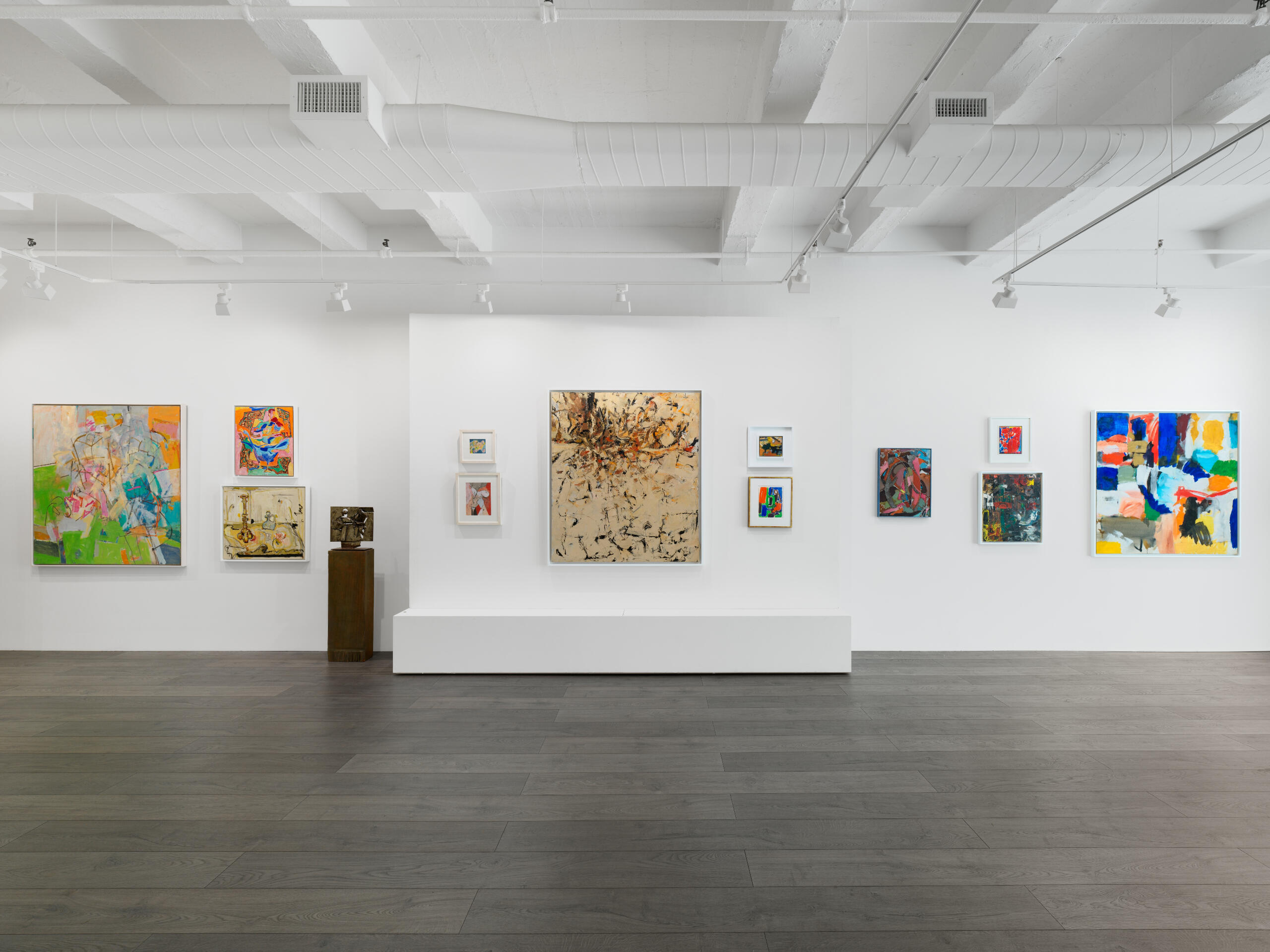
What drove the shift in your gallery's focus from 19th and early 20th century American art to specializing in American Abstract Expressionism, and how has this specialization impacted your gallery's reputation and success?
In the later half of 1990, there was a major recession that kicked in, and the stock market crashed, along with the real estate market and the art market as well. Business in D.C. was drying up. I was at a crossroads: if we didn’t make a change, we felt there was no way to continue in D.C. I was already making regular trips it NYC for auctions, so I decided to make a major gamble, and open a second gallery in NYC, in hopes that business would be better there than in D.C. In 1994, we took a space on the upper East side, and sure enough, the recession ended soon thereafter, and we found good success in Manhattan. By 1996, I no longer felt the need to keep the Georgetown spaces, so we sold those spaces and consolidated in Manhattan. Once we were in Manhattan, we began to push forward chronologically with our focus and mounted shows of American Modernism, (works from 1905-1930), which was well received. Over the course of 3-4 more years in Manhattan, we started showing early abstract expressionist works (mainly works from 1940-1950), and we mounted several scholarly shows analyzing how American modernism evolved into abstract expressionism. This period of the gallery led to reviews in the NY Times and the gallery’s reputation for scholarship rose.
Your gallery is known for mounting numerous exhibitions and publishing significant catalogues. Can you talk about the importance of these activities for your gallery and some of the most memorable exhibitions and publications you've been involved with?
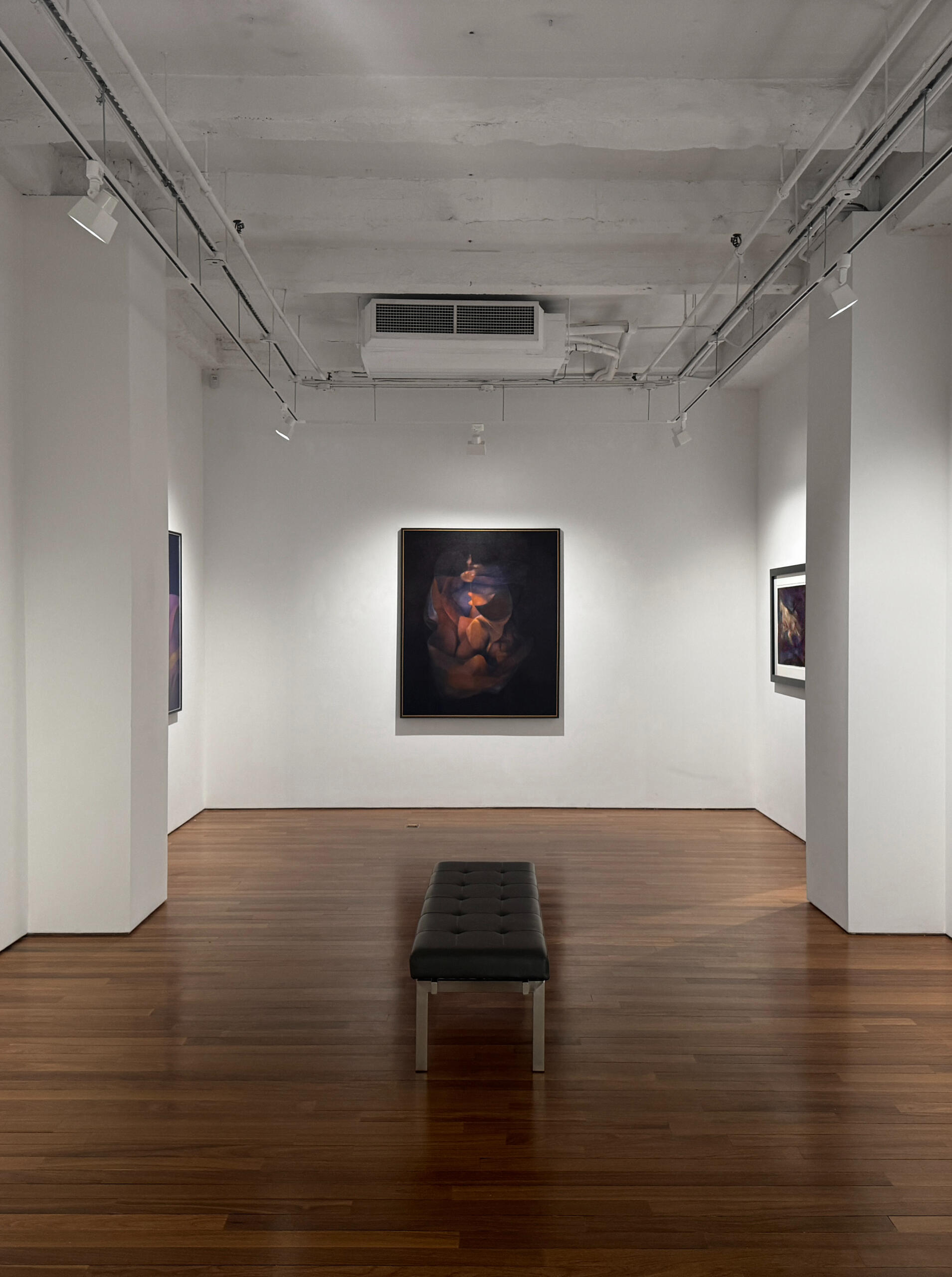
From this time, from roughly 1999 to 2010, we embarked on more and more scholarly exhibitions, and began collaborating with museums. Several of our gallery shows were accompanied by extensive catalogues, and traveled to museums. Our gallery was always motivated to collaborate with scholars and museums in examining areas of American art history that had not been previously covered in any depth. We mounted a show called “The Color of Modernism”, which was an examination of how the French Fauve movement influenced American Modernist painters, and how color was used to prove emotional responses. We also mounted a show called “Pathways and Parallels” which examined the bridges that led to early Abstract Expressionism, how it evolved from American Modernism. We uncovered certain aspects of art history that few people had known about before our show. So we were always motivated by contributing to art history, and some of these major exhibition catalogues have been used in Colleges.
You’ve had successful collaborations with museums in the past. Can you elaborate on the benefits and challenges of these partnerships, and share details about the upcoming solo museum show for Audrey Flack and the exhibition of Sheila Isham’s work?
Back in these earlier days, collaborating with museums was quite accepted and provided mutual benefit. We were able to mount boutique focused exhibitions that were of museum quality, and were shared with museums in some cases, filling a need for the museums, without them having to do the work. Later on, starting around 2010, there was a shift in museum policies and a more restrictive environment came bout for collaborations between commercial galleries and museums. This was unfortunate, and continues to this day. There is still collaboration, but in a more restrictive way than before when it was more acceptable and more fluid. We are currently involved in a couple of museum events, including helping mount a retrospective of works by Audrey Falck (who recently passed away) at the Parrish Art Museum in Long Island; and another show at the American University (Katzen Arts Center) in the Fall of 2025 for artist Sheila Isham.
Your gallery participates in numerous art fairs, such as Art Miami, Art Expo Chicago, and the Armory Show. How do you navigate the dynamics of the art fair circuit, and what trends do you currently see shaping the art market?
Art fairs have become a significant part of the art business. We participate in 5 art fairs each year. The foot traffic in the physical galleries, especially since Covid, has decreased, so art fairs have become an efficient way to meet many people, and for art collectors to see a lot of art under one roof, vs trying to see dozens of galleries in person. I think with increasing overhead and competition in the art world, there may be some consolidation in the galleries, more galleries sharing artists and working together, and continuing to use art fairs to compete. The art market is soft currently, I think due to high interest rates and so much uncertainty about elections and the world events (wars) and political shifts occurring globally. I anticipate an improved art market environment in the Fall after the election.
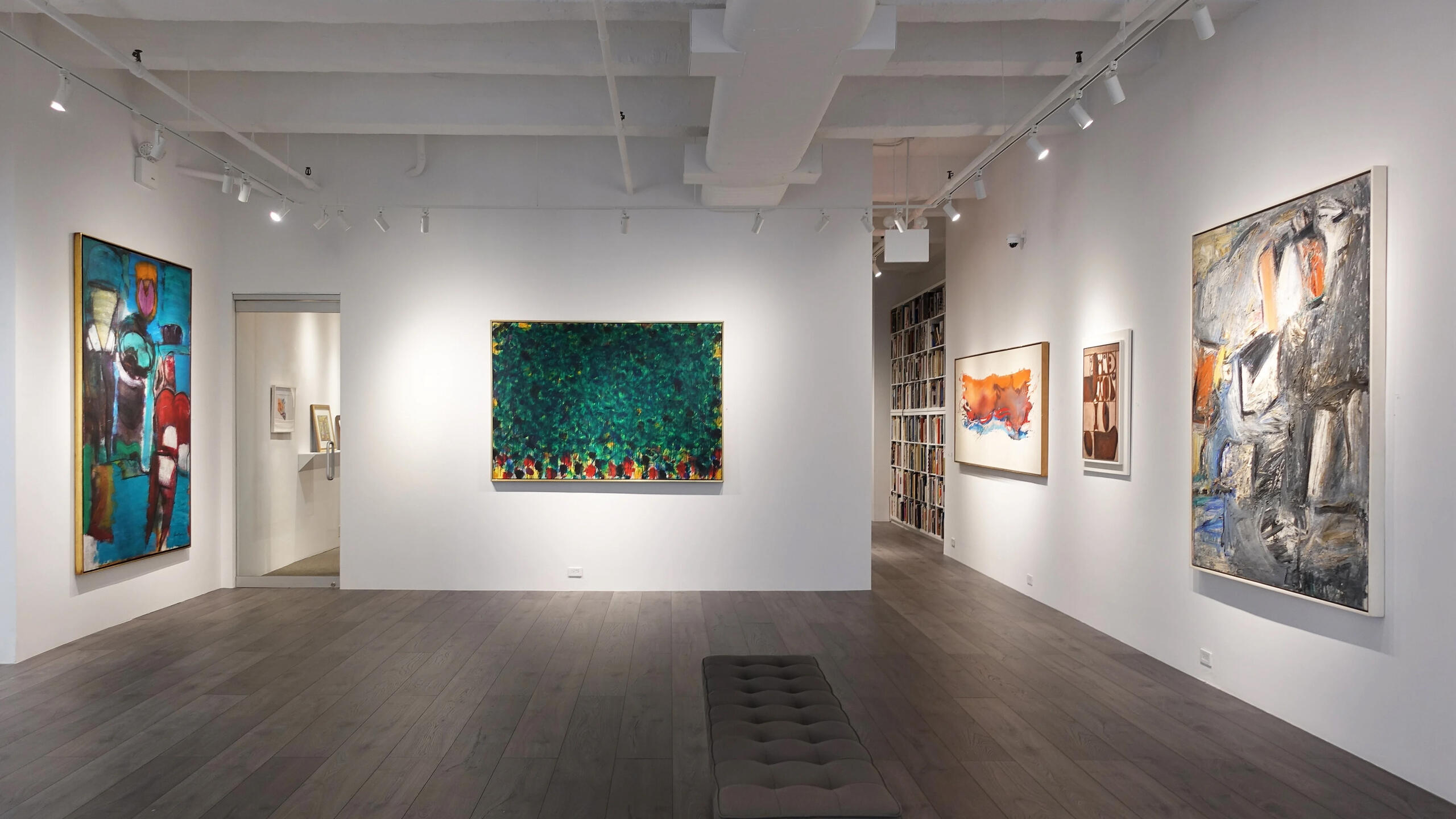
More About the Hollis Taggart Gallery
The gallery was originally created in the Summer of 1979, under the name Taggart & Jorgensen. We were located on La Cienega Blvd., in Los Angeles. We moved the gallery to Georgetown, Washington, D.C. in the Spring of 1983. We bought a 2nd gallery space on the same street (P Street) in 1990…the former Adams Davidson Gallery building. We had a contemporary realism division and an historical division while in Georgetown. In 1993, I bought out my partner Carl Jorgensen, and created Hollis Taggart Galleries, inc., which name has remained until today. In Jan., 1994, I opened a gallery in Manhattan on 48 E. 73rd Street, and had locations in both Georgetown and Manhattan. In 1996, I closed the galleries in Georgetown and consolidated all gallery operations in Manhattan. In 2005, we moved Manhattan locations to 958 Madison Avenue (Vance Jordan’s former gallery space) and in 2015, we relocated to our current Chelsea location. We also had a 2nd gallery from 2003-2010 in Chicago, also called Hollis Taggart Galleries, inc. We closed that space in 2010, and have remained in New York City exclusively since that time.We have 2 divisions currently: a contemporary art division and an historical division. We currently specialize in American Abstract Expressionism, after having dealt in 19th and early 20th century American art in prior years.We mount exhibitions in the gallery, both contemporary and historical, on a regular basis; averaging 12 shows a year. You will see the shows and publications from Kara Spellman next week. We have published 2 catalog raisonne’s (Danial Garber, and Kay Sage), and we are currently compiling the Michael West Catalog Raisonne’. We were involved in the Frederick Carl Frieseke raisonne’ for 6-7 years before the project was turned over by Nick Kilmer, to the Archives of American art, about 3 years ago.We exhibit in numerous art fairs including Art Miami, Art Palm Beach (January show), Art Expo Chicago, Dallas Art Fair, Armory Show, and have exhibited in Frieze, New York in past years.We have placed many works in museum collections, and have shared gallery exhibitions with some museums. Edward Middleton Manigault was shared with the Columbus Museum in Ohio, Jan. 15-March 31, 2002; University Gallery, University of Delaware, Sept. 5-Oct. 25, 2002; and also at the Gibbes Museum in Charleston, SC, Nov. 22, 2002 -Jan. 28, 2003.We shared an exhibition called “Espana” (American artists influenced by Spanish art) with the New Britain Museum of art, which ran from January to April, 1999.*In both of these cases, we published the show catalogues and transferred the shows from our gallery directly to the two respective museums. Since that time, the museums have shied away from such collaborations with commercial galleries.

We are currently curating and organizing a solo museum show (retrospective) of Audrey Flack which will open in October at the Parrish Art Museum in Water Mill, Long Island.We are also curating and organizing an exhibition of artist Sheila Isham (one of the estates we represent) at the Katzen Arts Center, at American University in Washington, D.C., opening in the Fall of 2025.
Sign up with your email address to receive news and updates.
Abstract State© 2023 - All rights served
Interview with
John Westbay

John is a contemporary artist born in 1990 in Brooklyn, NY, who lives and works in New York City. Inspired by his city of birth, John's work gives you a glimpse inside his consistently colorful mind. His professional endeavors started in 2013 when he found a love for creating street art. By the next year, he started working full-time to perfect his craft. Here he found a passion for educational works that explore the essence of identity and humanism. His progression as an artist has led to his paintings being included in galleries and collections across the U.S., Europe, and the Middle East.
Your journey in art began with street art in New York City. Can you share what initially drew you to street art and how the city has influenced your artistic style?
It was the summer of 2013. I was 23 years old, living in brooklyn where I had lived my whole life. I had been painting on canvas for a few months already, really just having fun, learning how to paint. I still hadn’t sold a single painting at this time. Somehow the paint leaped off of the canvas, and I started painting The LOVE logo on walls around Brooklyn and manhattan. Immediately people loved it, it created a buzz. Ironically, me starting painting off canvas is what enabled me to start selling pieces on canvas for the first time. Everything I do is influenced by New York City, the way I dress, the way I speak, everything I take in and inevitably what I put out.

You mentioned being inspired by iconic figures like Keith Haring, Basquiat, Warhol, and Kenny Scharf. How have these artists specifically influenced your work and your approach to creating art?
Yeah absolutely. I guess mainly its the street element. Today those guys are all in museums and blue chip collections but what they did in the street was the vehicle that got them there and that’s the blueprint I had to learn from. Also I just completely romanticize the idea that there was a whole scene, those guys didn’t exist individually in a vacuum. Collectively they put New York City on the map as the creative epicenter of the world and I believe that still shows to this day.
Your LOVE logo has become quite iconic. What does the concept of love mean to you, and how do you incorporate it into your art to convey different messages and emotions?
For me, Love is being alive. I really think life is about finding something you love and becoming fully immersed in it. Living through whatever it is you’re most passionate about, and making it your life. If you can find a way to align your life and whatever it is you love most, naturally you’ll have a lovely life. I do try to put this idea into my work, I want these pieces to bring light into the rooms they’re in. I think its kind of trendy for art to make people feel weird, I just want to make people feel good.
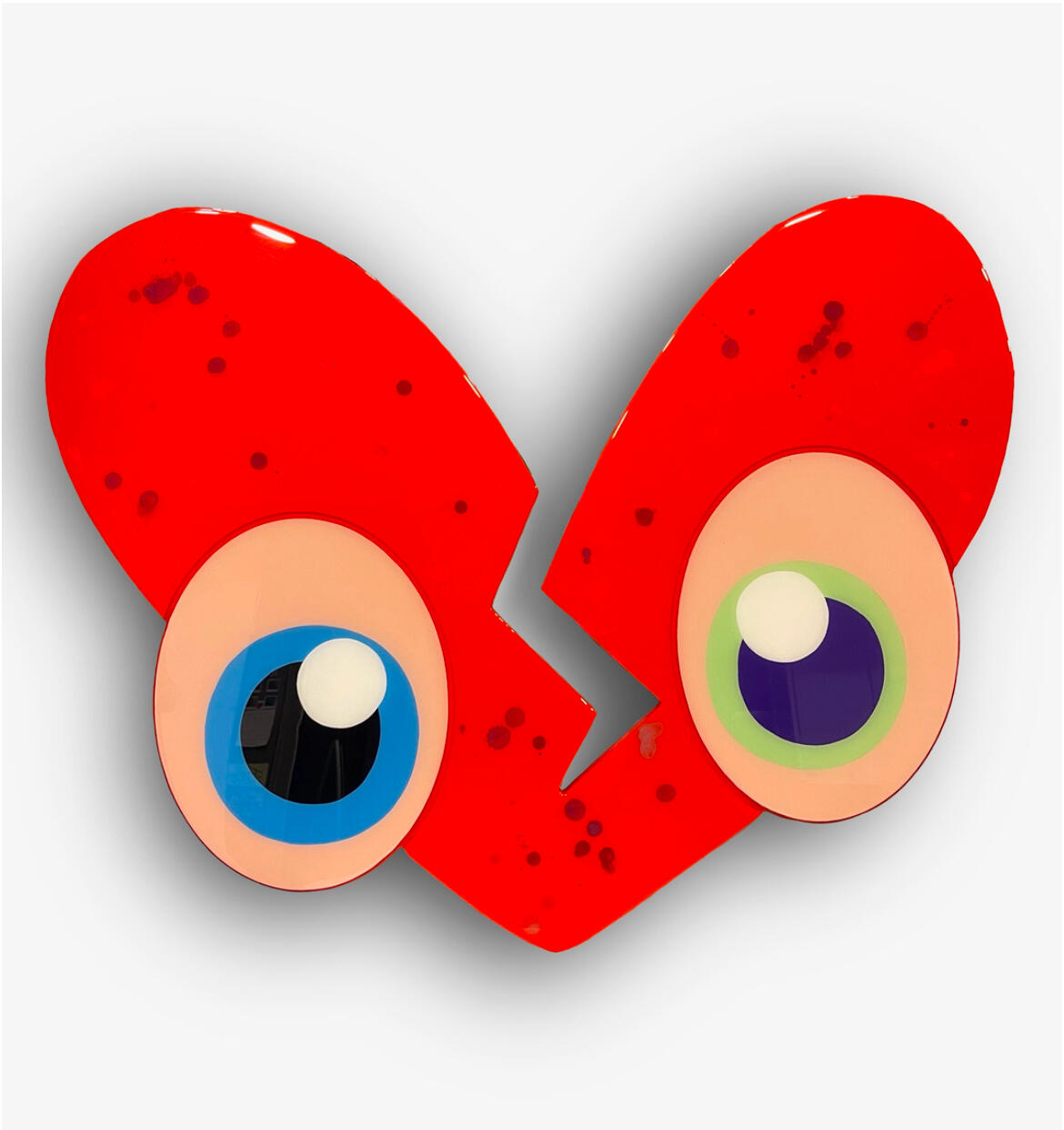
Your art blurs the lines between fine and commercial art. How do you balance the two, and what challenges or opportunities does this present in your work?
Im so happy I’m alive today, because this is possible. Traditionally artists had to choose a lane and then they were stuck in it, commercial, fine art, street art etc. Today, I guess due to social media and the “direct to consumer” ability that artists have to stay connected with and build their
audience across “lanes”, the walls creating those lanes have come down. Thanks to guys like Kaws, Shepard Fairey, Banksy, they have completely blurred any line that was still remaining of those walls and I love it. I can do a gallery show, paint a mural, and then sell a T shirt, all in the same month, promoted in the same place.

In addition to painting, you've ventured into streetwear. How does designing clothing differ from creating your visual art, and what inspired you to explore this medium?
Im a painter, I fell in love with painting the moment I started. But really what I fell in love with was the freedom. Freedom to create anything you want, and this has led me to explore different mediums, and streetwear is definitely one of them. Also as an artist there’s always going to be a large portion of your audience that just isn’t in the market for a piece on canvas but everyone where’s a T-shirt or a hoodie.
I think its important to once in a while offer something to that wider audience.
Light, shadow, color, and contrast are highlighted as elements you're fascinated by in your work. Can you discuss how you use these elements to evoke emotions and provoke thoughts in your photographs?
Light, shadow, color, and contrast are powerful tools for evoking mood and atmosphere in photography.
I often seek out scenes where these elements are particularly dramatic or dynamic, as they can add depth and visual interest to an image.
Your work has been showcased in galleries and collections across the globe. How does it feel to see your art resonating with people from diverse cultures and backgrounds?
Really amazing. I don’t stop and think about it so much because my head is always thinking about the next thing, working on the next project. But when I do, it really does make me so happy. All I want to do is continue exactly this, more shows, more cities, more countries, more love.

You aim to perpetuate positivity, inspiration, and love through your art. What impact do you hope your work has on viewers, and how do you see your art evolving in the future to continue spreading these messages?
Yeah those things are definitely important to me. Again, I think its kind of trendy for art to be “dark’’ and make people feel weird, I want to be the light! I want people to see my work and feel good. I want them to see my story and feel inspired to be the best version of themselves. To find something they’re passionate about and really go for it. To have a vision, discipline, courage, persistence, and the self awareness to learn and adjust. I truly feel like this is still just the beginning for me, I’m certainly still learning and adjusting. I will continue to grow as an artist, I will be working on bigger projects, in more places in front of a wider audience and just hope to continue having as much fun as I’ve been.
Sign up with your email address to receive news and updates.
Abstract State© 2023 - All rights served
Interview with
Gis Mari
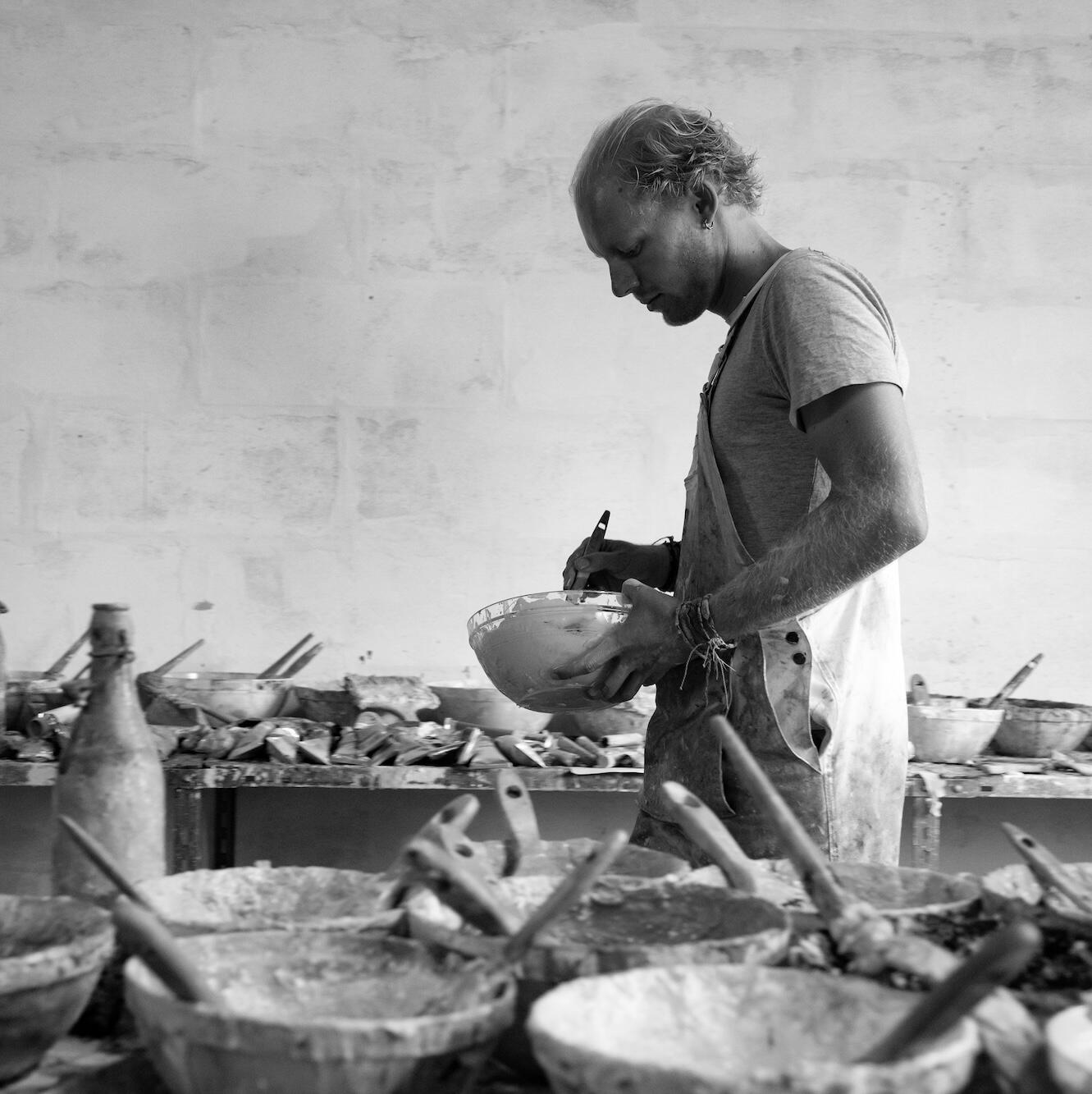
Born in the Netherlands and based in Portugal, Gís Marí [born Gijs Maris in Haarlem, 1991] paints large-scale, abstract, expressionistic oil paintings. He was drawn into the world of painting during his study of psychology in Leiden. His apartment and its white walls increasingly served as an atelier, and instead of preparing for his exams, he was occupied with art.
In his early 20s, he quit university to devote his life entirely to painting. Gís Marí rented his first atelier in Amsterdam [NDSM Wharf], where he worked for 2 years. His increasing discomfort with the gentrifying, speedy and money-driven Amsterdam saw him move to southern Europe, where he fell in love with the city of Porto.He rented an abandoned industrial store in central Porto, which served as an atelier and house, and he worked here for four intense years. In 2019, he moved to an old rice warehouse in the port town of Figueira da Foz, where he currently lives and works. In modern times, where quantity and efficiency prevail over quality, Gís Marí believes in old-world values.
You initially studied psychology in Leiden before transitioning to painting, and we know that psychology plays a crucial role in art. What drew you to become an artist, and how does your background in psychology influence your work?
From early on in life, I had a certain reluctance to unthinkingly accept the things that were taught to me at school. I found myself dreaming, zooming out, and abstracting the knowledge, but I never had a voice to express my inner world. After graduating from high school, when I began studying, I experienced more freedom regarding planning my own time. In Arts, dreaming once seen as a flaw became a strength.Studying psychology made me more aware of empathy and its value. For an artist, being empathetic is crucial; art doesn’t come solely from oneself. It’s valuable to listen to others whether directly or through books and media consider their thoughts, and then form your own. Still, I was attending fewer classes.I started buying paint and spent long nights in my student apartment, experimenting with the paint’s structure, its interaction with the canvas, and exploring strong shapes and color combinations. This was a world with no one to dictate what to do or think endless possibilities. Since my early 20s, I have dedicated my life to painting.

What influences your decision to spend months or even years on a painting? Is it the mediums you choose or the motivations behind the work?
First of all, I am bound by the rules of chemistry. I use oil paint, which is quite thick and not so diluted, so the paint needs some time to dry before being able to apply the next layer.For me, the use of different layers contributes to the profundity and personality of the painting. I like the fact that this process takes time. It allows me to make contact with the painting and develop a relationship. When working on a painting, I am a perfectionist.Every inch of the canvas needs to contribute to the whole. In order to achieve this, I look, paint, erase, and repaint infinitely. This takes a lot of time.
Your art aims to convey energy and evoke deep emotions, much like a messenger traveling between your inner world and the common world. How does this idea influence your creative process?
For me, the essence of art is to stimulate the beholder, in whatever way that may be. If the observer is, after encountering my work, a bit different than what they were before, I am satisfied. In order to produce this stimulation, I put as much energy into my paintings as I can.To generate that energy as an artist, I see myself as a messenger traveling between two worlds: I travel from my own ‘inner’ world to the ‘common’ world and back, seeing myself as the character from Greek mythology, Hermes. I pick the flowers from my unique inner world and translate them via a comprehensible medium to the outer world.The longer the journey, the more unique the flower and, therefore, the artwork. This is why I work on a painting for a long period, with high concentration, and often in solitude.
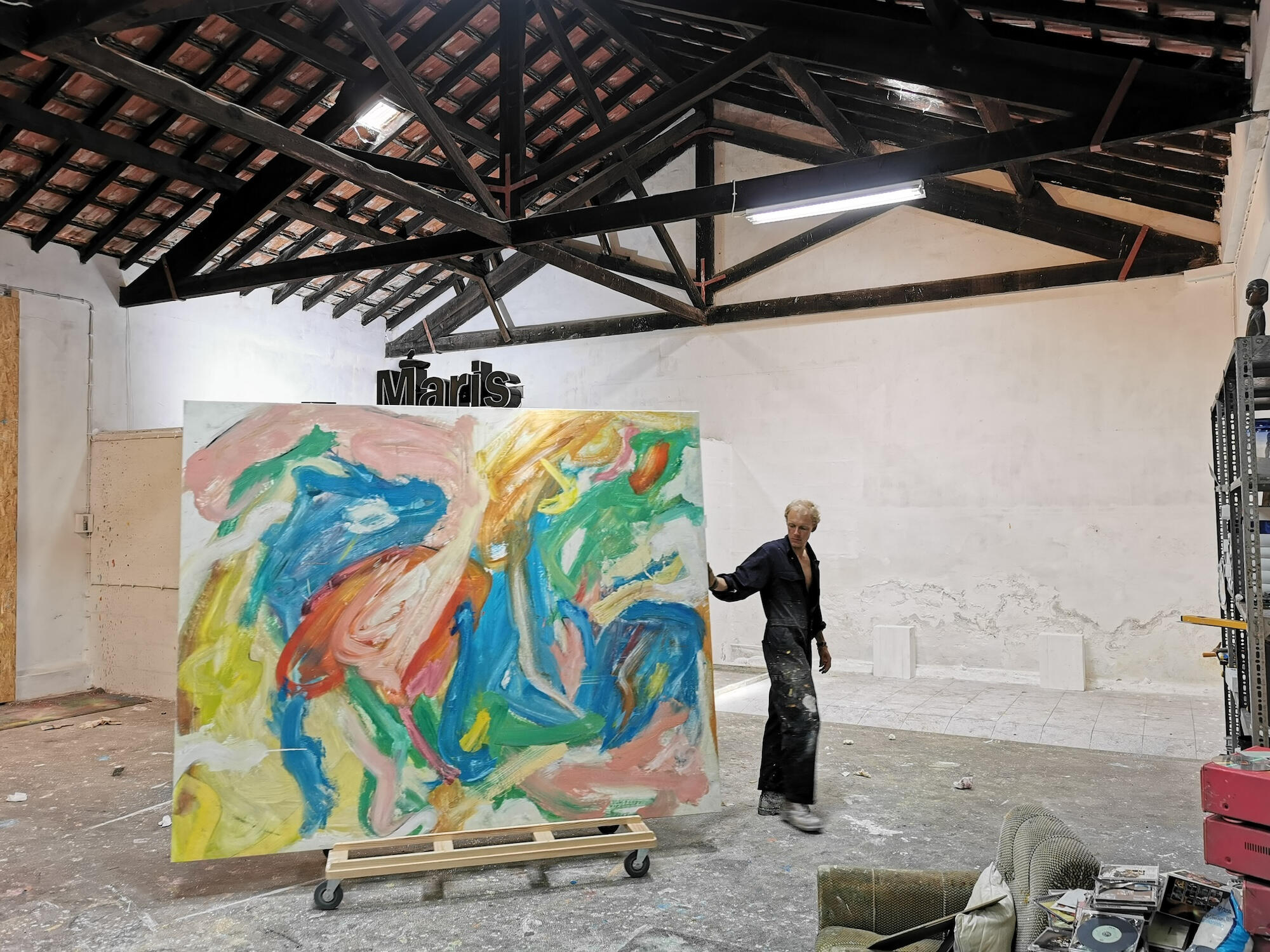
Given the Netherlands’ rich artistic heritage and excellent art institutions, what inspired you to move to a new environment for your artistic practice?
I am extremely grateful to have grown up in the Netherlands. There is so much art to see from Rembrandt in the Rijksmuseum to De Kooning in the Stedelijk Museum, Van Gogh, Mondrian, and many others.I grew up in Haarlem, a place full of history. The historic Grote Markt square, famously painted by Gerrit Adriaenszoon Berckheyde, was a 5-minute walk from my house, as was the Frans Hals Museum, which for me was the Alex Katz of the 16th century.But alongside my sense of gratitude, I have always felt a certain restlessness. When living in The Netherlands, I switched environments several times a year, moving from anti-squat houses to a boat. The frequent change made me feel alive and lucid.Then, in my early 20's I moved to Portugal, where I also lived in many different places. I have lived in the same apartment for some years now, but when I don't paint, I am still on the move, discovering new places and people.
How has working in studios in Amsterdam, Porto, and Figueira da Foz impacted your artistic approach and creative development?
For me, life in the South is more physical and more real. People are less rushed and more respectful towards each other. I think one should not create in a rush; you should oversee and contemplate your work. Also, I like to be an outsider. It feeds my curiosity and
drive to explore.
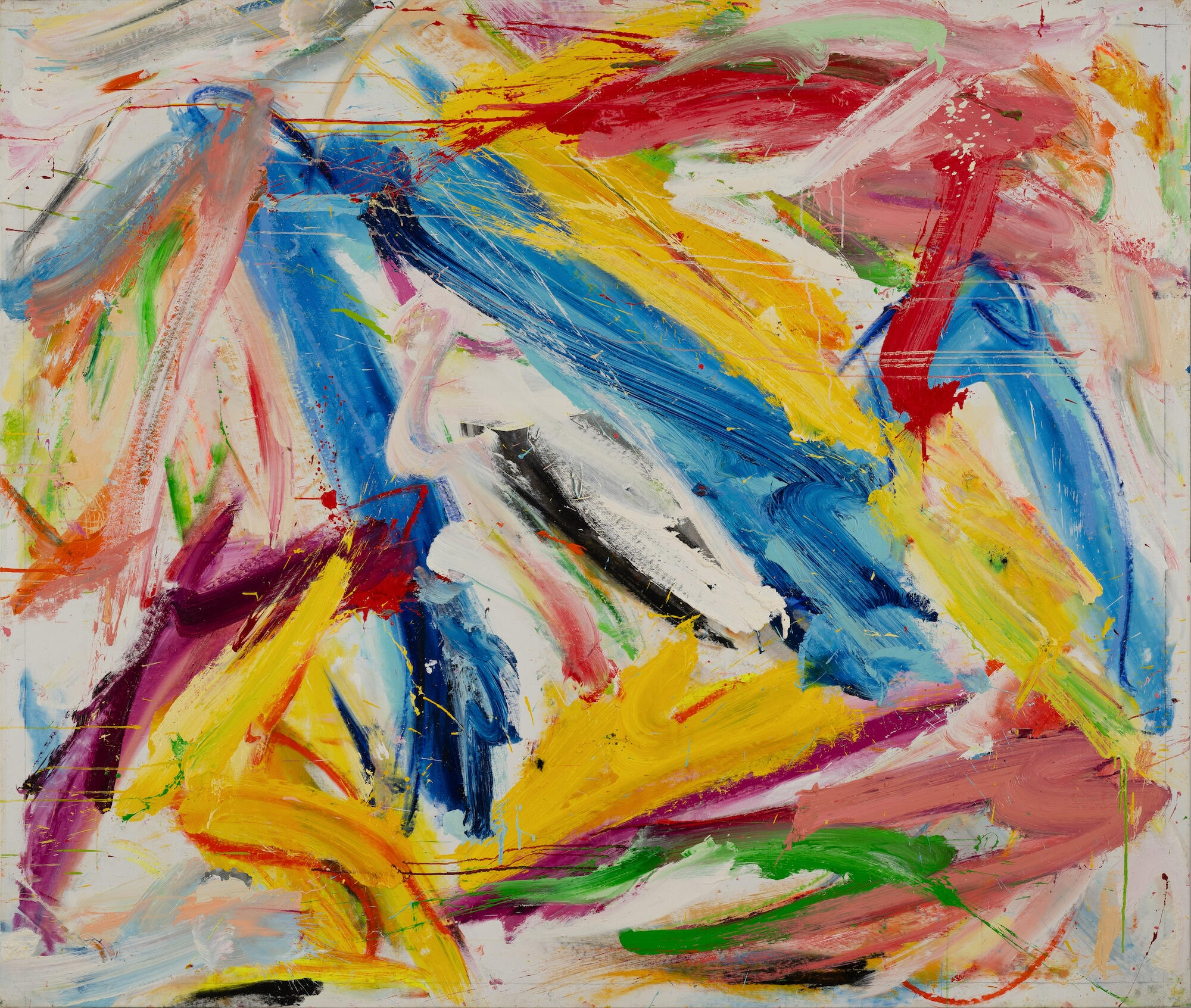
What are your future aspirations for your art? Are there any new themes or techniques you’re
excited to explore?
At the moment, I am working on an exhibition in an 11th-century chapel. From the moment I saw the space, I was captivated by its ambience and soul. I am currently working on a new series of paintings that respect the personality of the chapel and forge a symbiotic relationship with the space.I have also been experimenting with painting on a somewhat smaller scale lately.Whereas my work is usually around two meters at the minimum, I am now limiting myself to half of this size.The limited surface space makes a single brushstroke more impactful; I need more time to distance myself, observe the painting, and think through the next step.
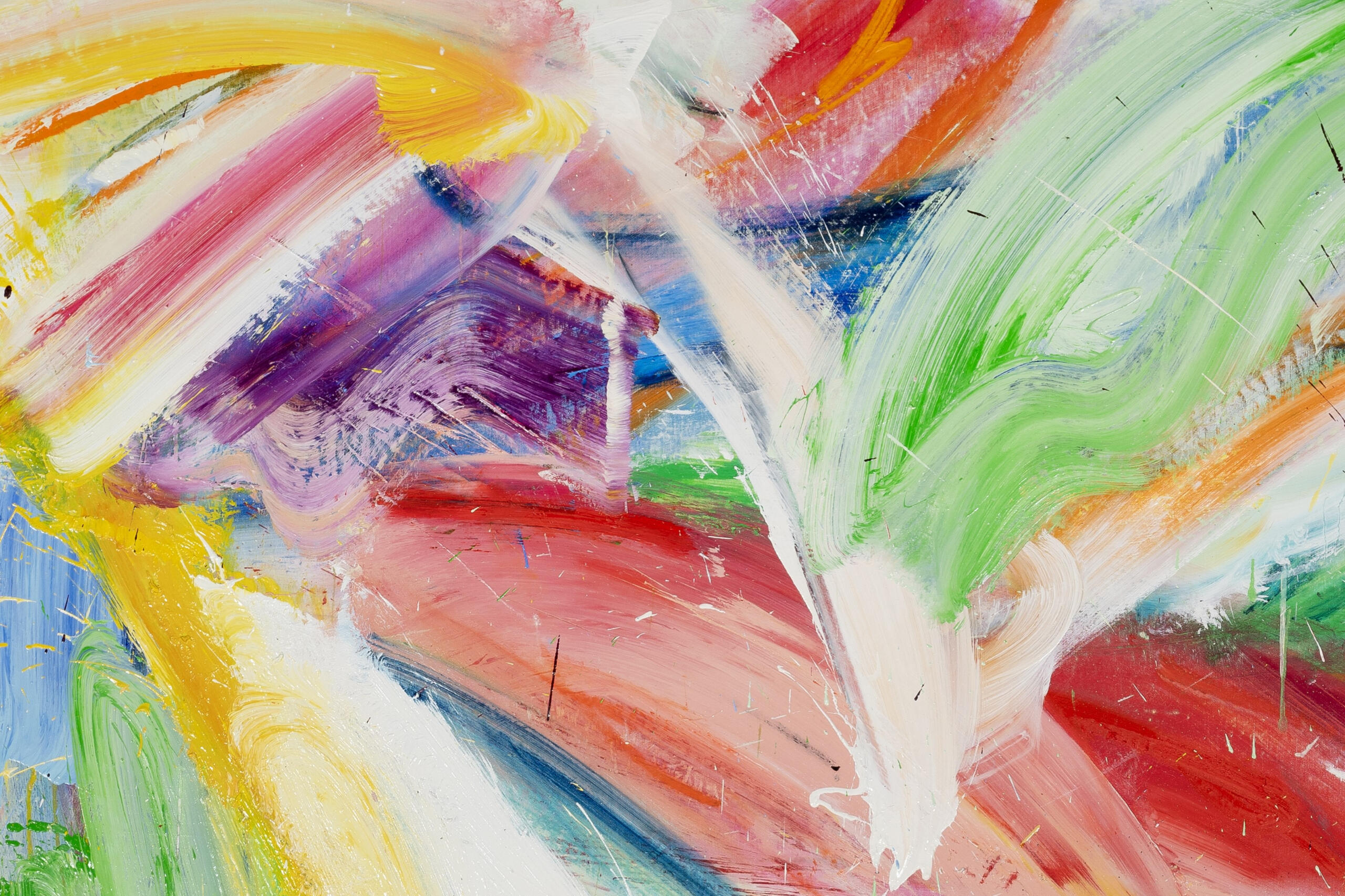
What do you consider to be the most significant achievement or turning point in your artistic journey?
The process of putting my signature on every single painting is significant to me. When working on a painting, especially in its final phase, I am captivated by it. I constantly think of it and dream of it. In the final phase, finishing the painting properly is the most important and significant thing there is.The trajectory of the painter I was 10 years ago to the one I am now has evolved organically and through constant transformation. The struggle, confusion and ecstasy have all contributed to the painter I am now.A year ago, I painted as the painter I was then, and in a year from now, I will paint the way I am then. I don’t see my identity as a painter as a fixed point but as a constantly flowing movement, giving all that I can offer at that moment, ''Panta Rhei''.
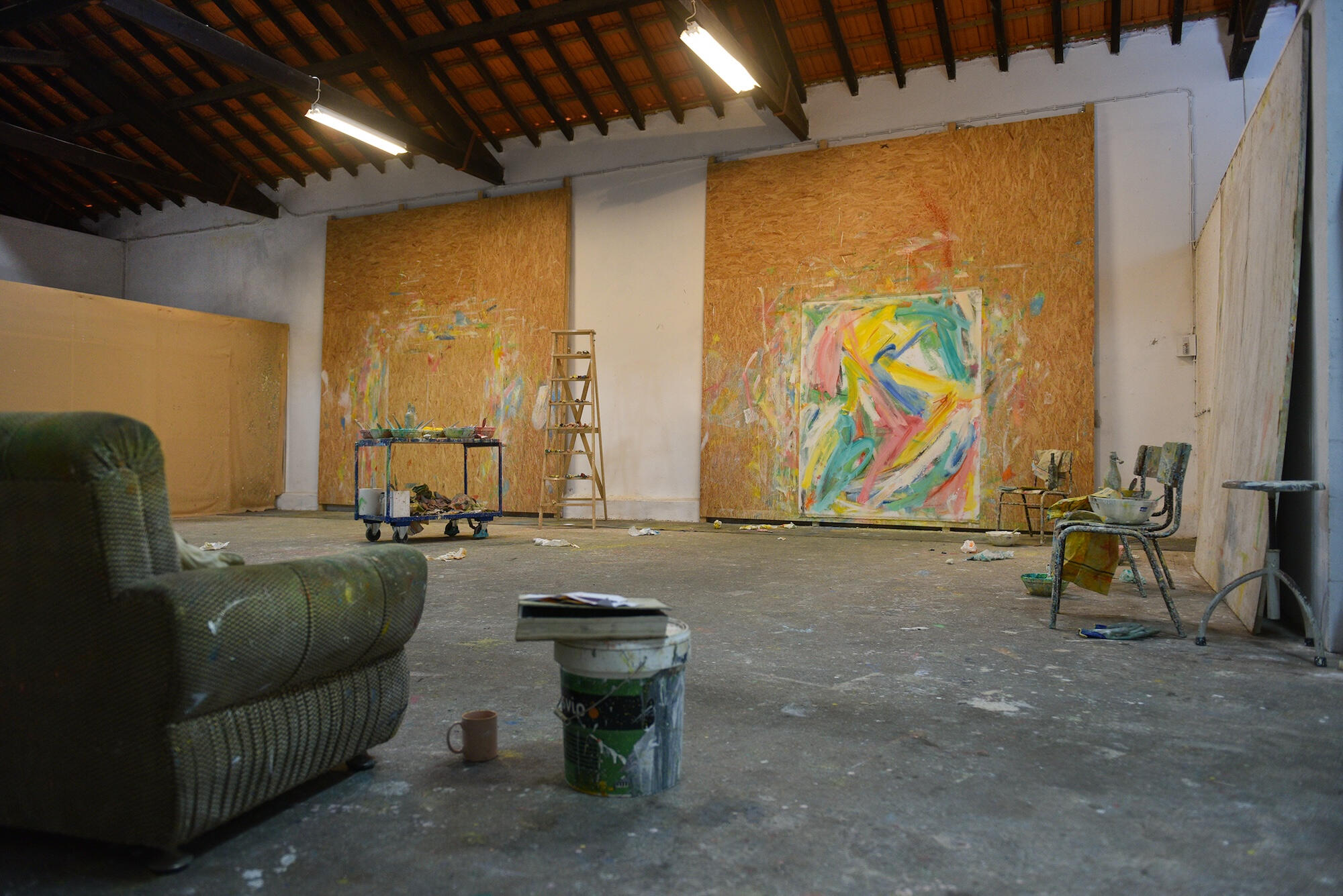
Sign up with your email address to receive news and updates.
Abstract State© 2023 - All rights served
Interview with
Omur Ozkoyuncu
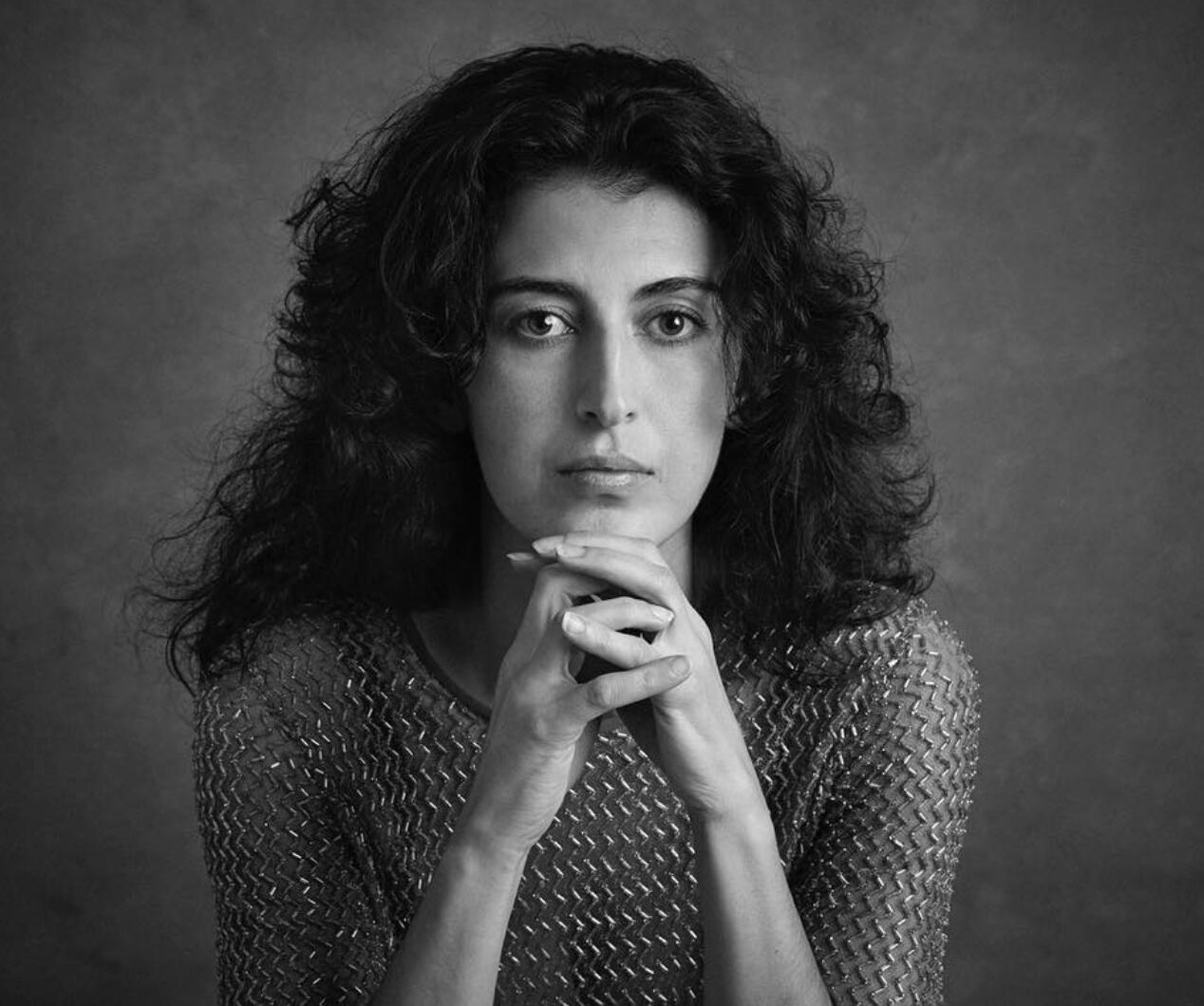
Photo by Olga Gorodilina
Omur is a professional photographer based in the United Kingdom, with a global reach in providing editorial and editorial-style photography services to diverse media industries.Her work encompasses features, portraits, case studies, and documentary-style work. With academic credentials including a Master of Science (MSc) in Physician Associate Studies, as well as earlier degrees such as a Bachelor of Arts (BA) and a Master of Arts (MA).She brings a wealth of knowledge and a commitment to continuous learning to both healthcare and multimedia endeavors.
As a photographer, I strive to capture the world's essence, revealing hidden beauty and stories. Photography is my language, transcending boundaries and connecting deeply with people. I'm fascinated by light, shadow, color, and contrast, seeking moments that stir emotions and thoughts.My visual stories transport viewers into scenes, inviting them to share emotions, experiences, and narratives frozen in time. I embrace both technical and creative aspects of photography, translating my artistic vision into reality. My work is an invitation to explore and appreciate the world anew. I hope you not only see images but also feel emotions, hear stories, and find yourself within the frame. Thank you for joining me on this visual journey, celebrating the beauty that surrounds us.
You mention that photography is your language, transcending boundaries and connecting deeply with people. How do you ensure your photographs effectively communicate your message and connect with viewers on a profound level?
For me, effective communication begins with a clear understanding of the emotions and stories I want to convey through my photographs. Before I even pick up my camera, I spend time reflecting on the themes and messages I want to explore. Once I'm in the field, I approach each scene with intentionality, carefully considering composition, lighting, and perspective to ensure that every element of the image contributes to the overall narrative.By infusing my photographs with authenticity and emotion,I aim to create images that resonate with viewers on a personal level, sparking a sense of connection and empathy.
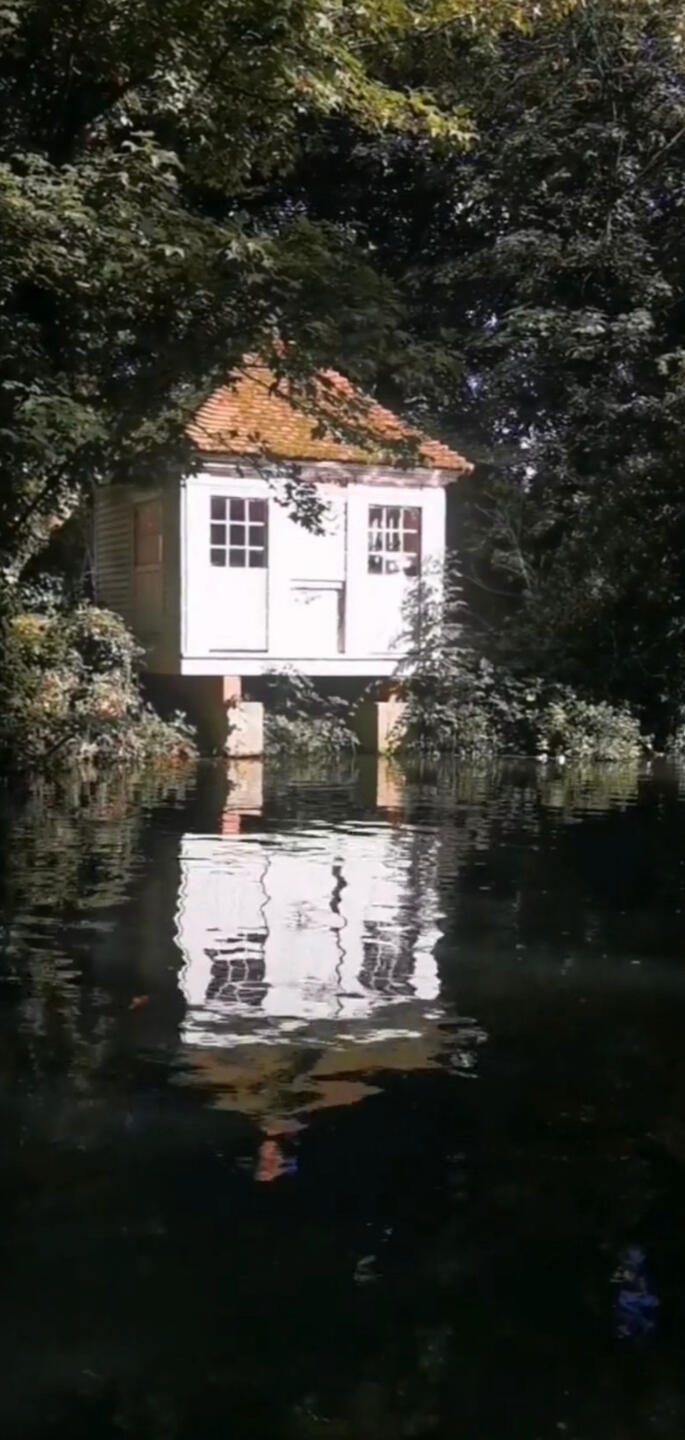
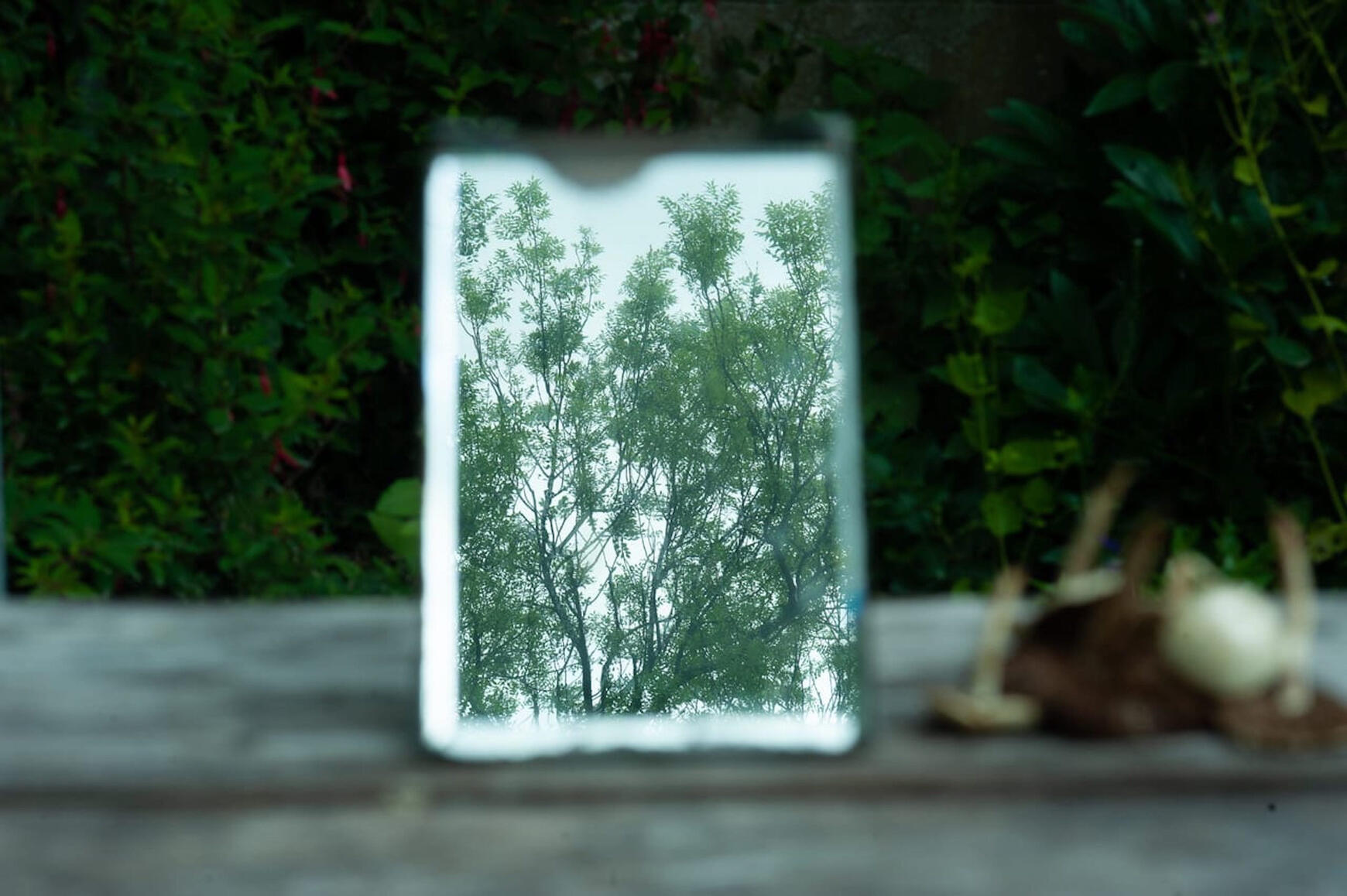
Light, shadow, color, and contrast are highlighted as elements you're fascinated by in your work. Can you discuss how you use these elements to evoke emotions and provoke thoughts in your photographs?
Light, shadow, color, and contrast are powerful tools for evoking mood and atmosphere in photography. I often seek out scenes where these elements are particularly dramatic or dynamic, as they can add depth and visual interest to an image.
For example, I might wait for the golden hour to capture the warm, soft light of sunset casting long shadows across a landscape, or I might use bold color and high contrast to create a sense of drama and intensity. By carefully manipulating these elements, I'm able to imbue my photographs with a sense of emotion and intrigue, inviting viewers to linger and explore the hidden stories within each frame.
Your work spans various genres, including features, portraits, case studies, and documentary-style photography. How do you adapt your approach when working across these different genres?
My approach varies depending on the genre, but the core principles of storytelling and emotional connection remain constant. For features and portraits, I focus on capturing the personality and essence of the subject, often engaging in conversation to put them at ease and reveal their true selves. In case studies and documentary-style work, I immerse myself in the environment and observe closely, allowing the natural flow of events to guide my photography. Each genre requires a unique balance of preparation and spontaneity, ensuring that I can convey the authentic story of the subject or scene.
Given your extensive background in both healthcare and multimedia, how do these fields influence each other in your work?
My background in healthcare has profoundly influenced my photographic practice by heightening my sensitivity to human experiences and stories. The empathy and observational skills developed in healthcare enable me to connect more deeply with my subjects, especially in documentary and portrait work. Conversely, my work in multimedia enriches my approach to healthcare, fostering creativity and innovative thinking in patient care and education. The interplay between these fields allows me to bring a unique perspective to each, enhancing my ability to communicate complex narratives effectively.
Can you share a specific project or photograph that had a significant impact on you and why?
One project that stands out is a documentary series I worked on about the lives of refugees in Europe. This project was emotionally challenging yet incredibly rewarding. I spent time with families, listening to their stories of hardship and resilience, and capturing moments of both sorrow and hope. One particular photograph of a young child playing amidst the ruins of a refugee camp profoundly impacted me. It encapsulated the stark contrast between innocence and the harsh realities of displacement. This project reinforced my belief in the power of photography to raise awareness and evoke empathy, motivating me to continue using my craft for social impact.
What advice would you give to aspiring photographers who are looking to develop their own style and voice in the field?
To aspiring photographers, I would say: immerse yourself in the world around you and remain curious. Developing your style and voice takes time and experimentation. Don’t be afraid to explore different genres and techniques to discover what resonates with you. Study the work of photographers you admire, but also look for inspiration outside of photography in literature, art, nature, and everyday life. Most importantly, practice regularly and be open to feedback. Your unique perspective is your greatest asset, so embrace it and let it shine through your work. Remember, authenticity and passion are key to creating compelling and meaningful photographs.
Sign up with your email address to receive news and updates.
Abstract State© 2023 - All rights served
Interview with
Mathias Kiss
Mathias Kiss is a contemporary French artist known for his work in the fields of sculpture, painting, and installation. He is particularly recognized for his artistic creations that play with notions of space, perspective, and trompe-l'œil. His often monumental works frequently incorporate architectural and decorative elements, exploring the boundaries between art and architecture. Kiss is also famous for his interventions in historical places, transforming spaces with a bold and innovative approach.
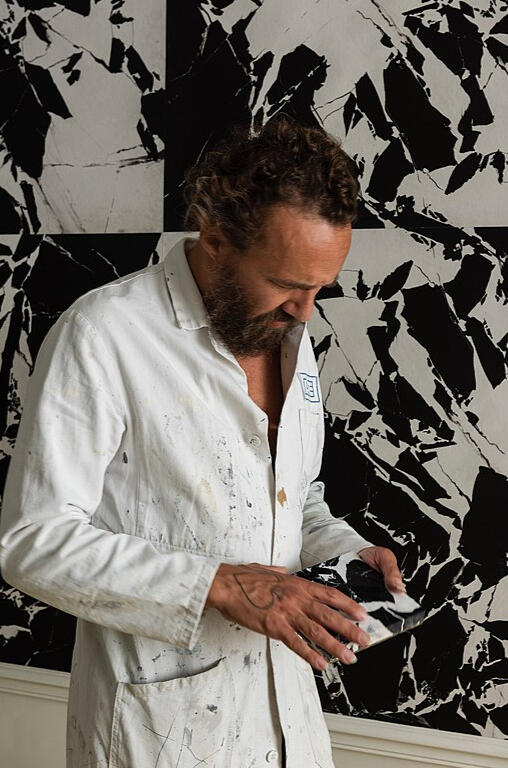
Mathias Kiss has a very unique approach to the sky in his artistic work. He often explores the representation of the sky through installations, paintings, and sculptures that defy traditional expectations and perceptions. Here are some aspects of his approach to the sky:
Perspective and trompe-l'œil: Kiss frequently uses perspective and trompe-l'œil techniques to create the illusion of an infinite or expanding sky. He plays with dimensions and angles to give the impression that the sky unfolds beyond its physical limits.Unusual materials and mediums: He experiments with a variety of materials and mediums to represent the sky in unexpected ways. For example, he might use mirrors, transparent fabrics, threads, or other reflective materials to capture the brightness and depth of the sky.
Integration into architecture: Kiss is also known for his artistic interventions in architectural spaces, where he transforms ceilings or existing structures to evoke the sky. These installations can create an immersive experience where viewers feel enveloped by the sky.
Can you define us your artistic style and influences?
My artistic style is a bold fusion of classical and contemporary, where the boundaries between the two blur to create something new and captivating. My main influences come from classical architecture, modern and contemporary art, as well as nature itself. I draw inspiration from the elegant symmetry of ancient palaces as much as from the organic complexity of natural forms.
Can you provide examples of innovative uses for gold leaf?
Gold leaf is a fascinating material that offers a unique visual and symbolic richness. My choice to use it in my works stems from my fascination with its brightness and its ability to transform the most ordinary surfaces into something truly extraordinary. My creative process with gold leaf involves a combination of traditional techniques and contemporary concepts, thus creating pieces that capture both the light and the viewer's imagination.
How can traditional and contemporary art be fused together innovatively?
Integrating traditional and contemporary art into my works is essential to me because it allows me to explore the links between the past and the present, between familiarity and innovation. I believe that it is at this intersection that the most powerful and inspiring ideas are born. By merging these two aspects, I aim to create works that transcend the boundaries of time and aesthetics.
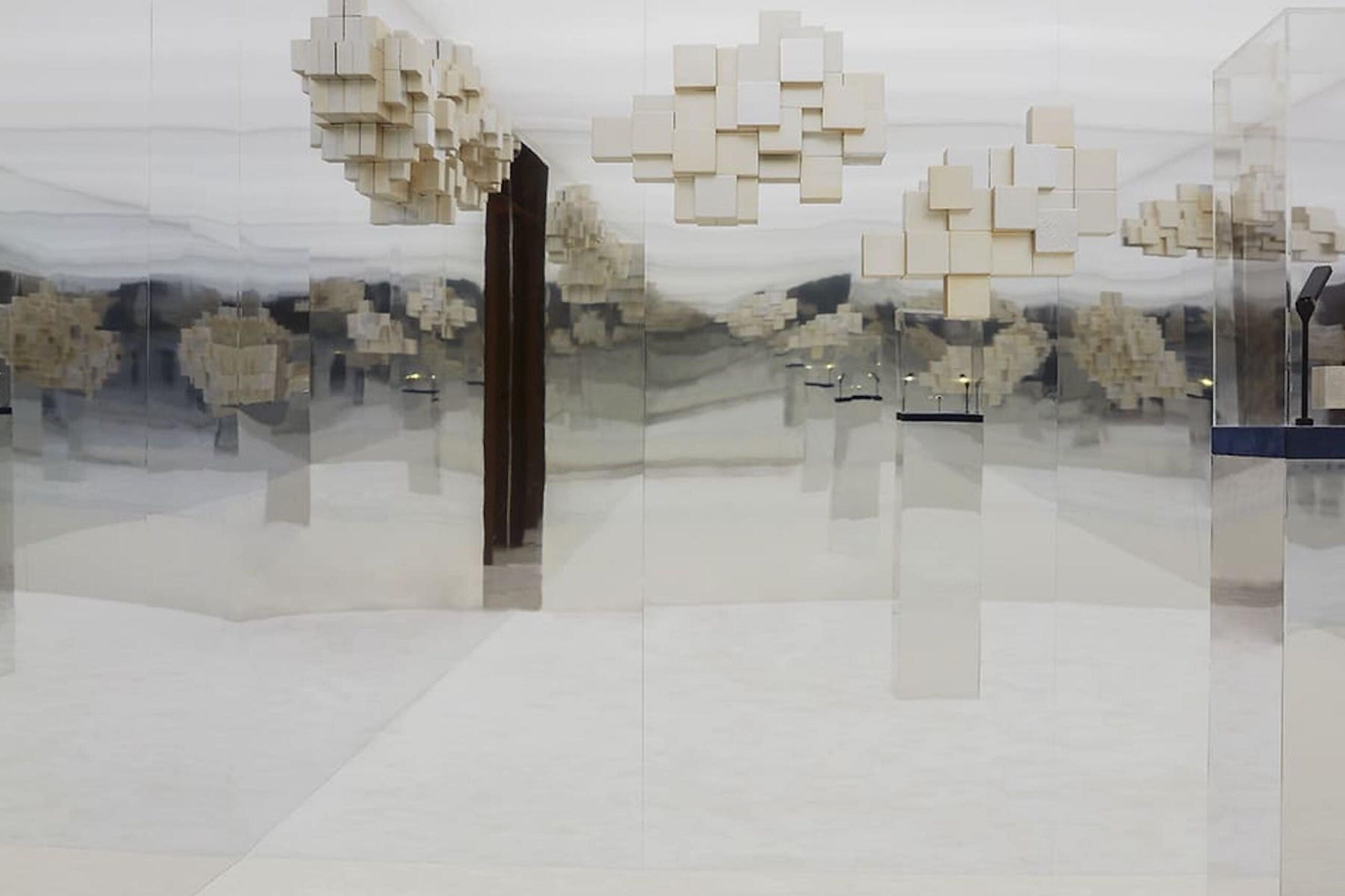
What impact has the training with the companions had on you?
My training with the companions has deeply influenced my artistic approach by providing me with a solid foundation in craftsmanship and tradition while encouraging me to push the boundaries of creativity. The emphasis on meticulous work and mastery of artisanal techniques has allowed me to approach my art with a level of attention to detail and precision that characterizes my work today.
How does your art interact with the environment?
My installations in public spaces aim to create an emotional connection between art and its environment. I firmly believe that art has the power to transform spaces and evoke reactions and reflections in those who encounter it. By integrating my works into various contexts, I seek to create immersive experiences that invite the public to interact with their environment in new and meaningful ways.
What roles do aesthetics and the messages behind your works play?
Aesthetics play a central role in my work, but they also carry emotional and conceptual depth. My works are not only beautiful to look at; they tell stories, evoke emotions, and invite reflection. Through my artistic provocations, I seek to challenge expectations and conventions, prompting the audience to question their perceptions and explore new perspectives on the world around us.
Could you tell us about your most recent project and how you foresee the evolution of your work in the future?
A recent project that is particularly close to my heart is a series of installations exploring the theme of duality and balance. Inspired by the concepts of light and shadow, tradition and innovation, these works explore the tensions between opposites and the possibilities of harmonizing them. Looking to the future, I am excited about exploring new techniques and mediums, as well as the opportunity to collaborate with other artists and designers to create even bolder and more immersive artistic experiences.
Sign up with your email address to receive news and updates.
Abstract State© 2023 - All rights served
Interview with
Mide Placido
Mide Placido, born in 1957, is a visual artist based in Coimbra, Portugal. She works in the conceptual field, primarily through photography. She holds a degree in Painting from EUAC (Escola Universitária das Artes de Coimbra) and has studied as part of the Master's program in Contemporary Artistic Creation at the University of Aveiro.The body and its understanding are central themes in her work. Her most recent practice explores issues of the body in relation to changes over time, such as aging.Through her work, Mide Plácido aims to ignite discussions on the needs of all people and build visions that contribute to a fairer and more coherent society. She believes that artistic practice can create awareness. The experience of freedom intertwined with symbolic absurdity is the core of her scenarios and the starting point for her works.Since 1998, she has exhibited regularly in Portugal and abroad, participating in both individual and group shows.
Can you tell us about your journey as a visual artist and how you got to photography?
Until 2012, I painted in my studio and worked as an art teacher at a school for pre-teens. For years, I explored freedom through the plastic effect of pictorial materials, chance, and the body in fluid gestures. It was an elixir for my happiness. However, in 2012, my personal life changed, and I decided to change everything that could be changed. I stopped working and started dedicating myself to art full-time. I returned to university to update and expand my knowledge and to get involved in new experiences, though photography wasn't yet part of my journey.One day, I came across a collective mentoring program in photography entitled “She.” I felt simultaneously attracted to the title and uneasy about the photography aspect due to some preconceived notions. Nevertheless, I embraced the experience. Why not paint with light instead of paint? Today, my work has evolved. While the element of freedom remains, it has expanded in its purpose.
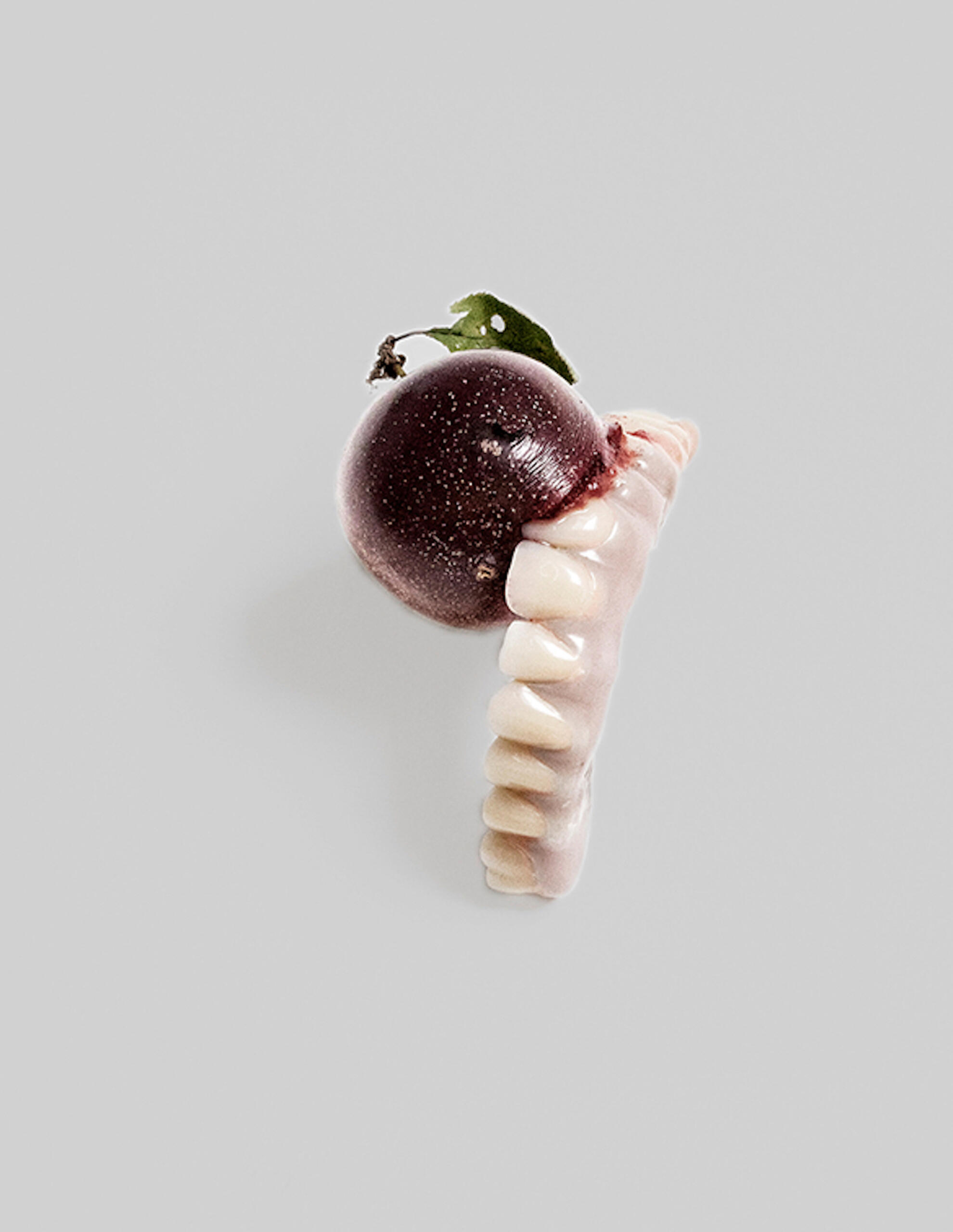
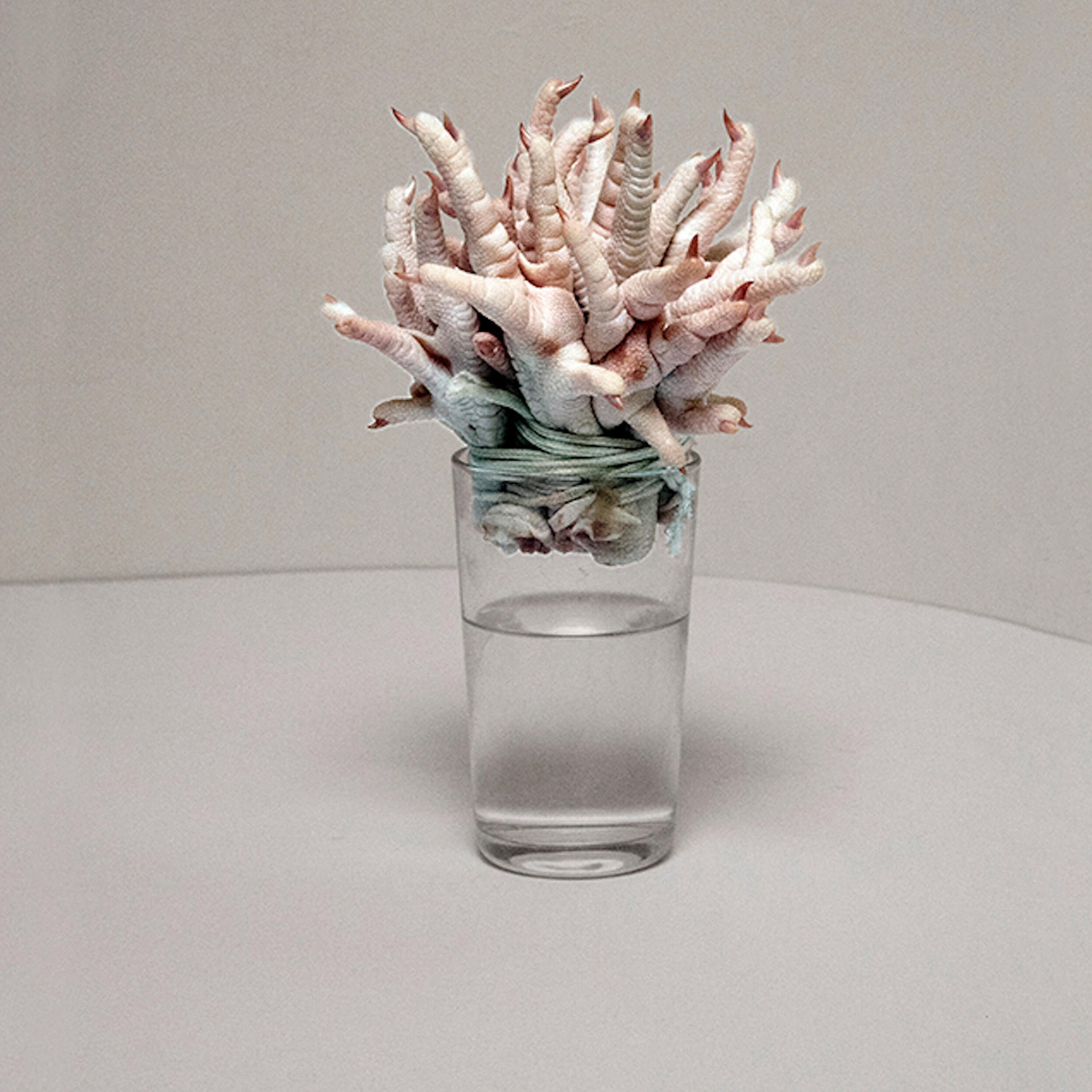
Does your background in painting influence your photography?
My background in painting is deeply influenced by my knowledge of art history. Regardless of the technology I use, I draw inspiration from it. For example, Pablo Picasso used his work to highlight the realities of his time and draw attention to existing problems. Similarly, I aim for my research to be committed to today's social realities, evoking what affects me and others within it.
What inspired you to address the marginalization of older people through your art?
As I am experiencing the aging process myself, I realize what it means to grow older. I see that a woman's aging process is different from a man's. Society often views aging as unacceptable, leading many older people, especially women, to become slaves to a forced youth in order to fit into the always-young pattern. This fear of aging stems from society's perception of older people as being incapacitated. We must be able to choose, without coercion, how to react and continue with the natural process of aging. After all, with luck, we will all grow old one day, right?
How do body, heat, ice, and time symbolize aging in your work?
Initially, I thought of these elements as natural signs of transformation, as basic as the thirst we all feel within ourselves. These elements are metaphorically strong for my work. I transitioned from depicting the mouth to depicting the hand, as signs of waiting. The title "Warming the Ice with the Body" remained, but the project is still ongoing.
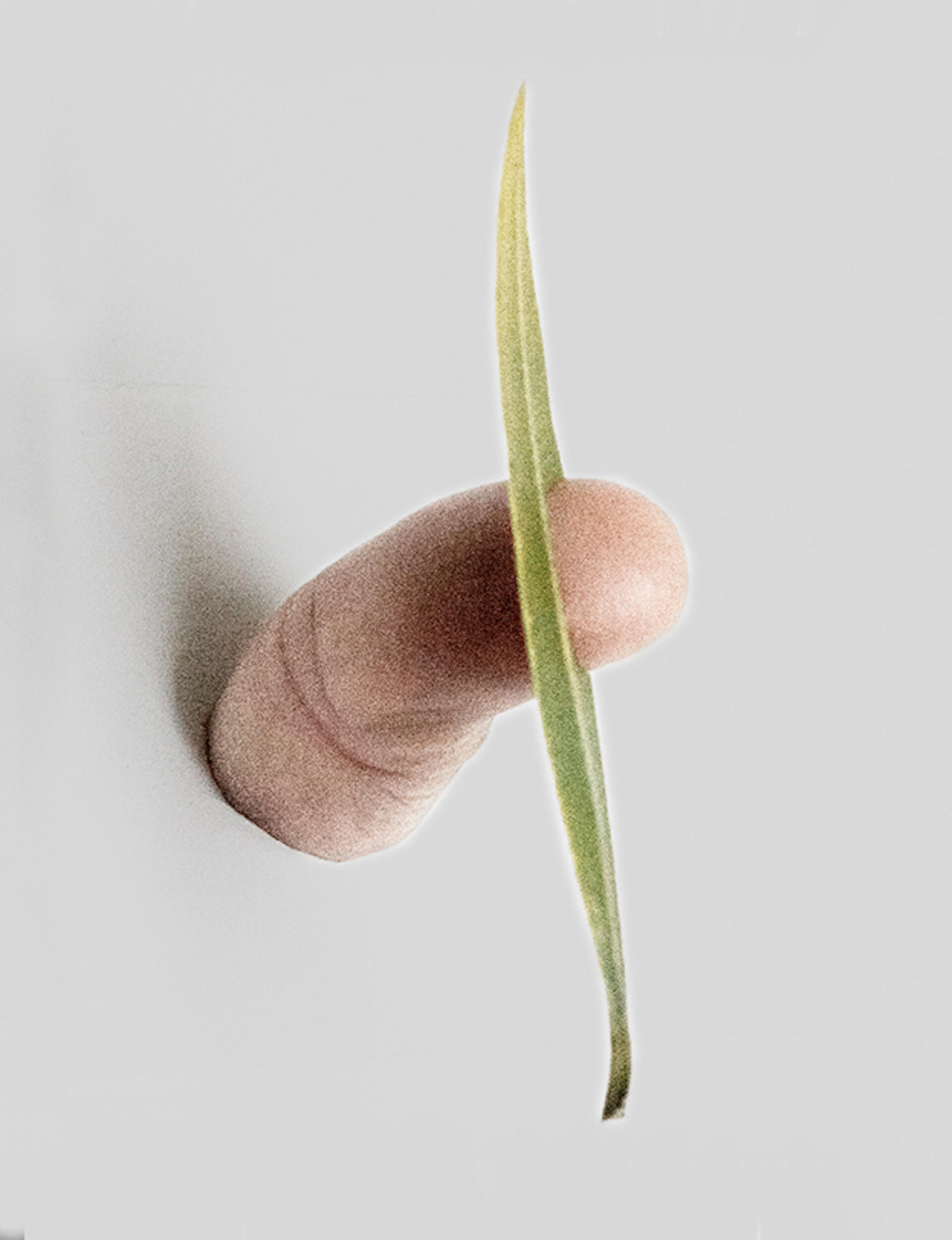
How can art influence societal views on aging?
Art can play a crucial role as an agent of awareness and transformation in society. The artist's unique perspective can influence and change deep-rooted perceptions about our elders and other issues affecting us. People often feel distant from problems that don't directly impact their lives, such as the marginalization of older people. However, when these issues are highlighted artistically, they become more tangible and impactful, leading to reflection on the importance of combating this reality. This is my hope.
What role do freedom and symbolic absurdity play in 'Warming the Ice with the Body?
My work stems from a desire to investigate the lack of meaning in today's society. It is my small, free, and revolutionary act against the incongruous world we live in. Society, in my view, is a well of bizarre artistic works waiting to be created. Therefore, I invent alternative narratives and absurd constructions as an antidote to the absurdity contained within. Dadaism, for example, questioned traditional societal values through absurd artistic manifestations.
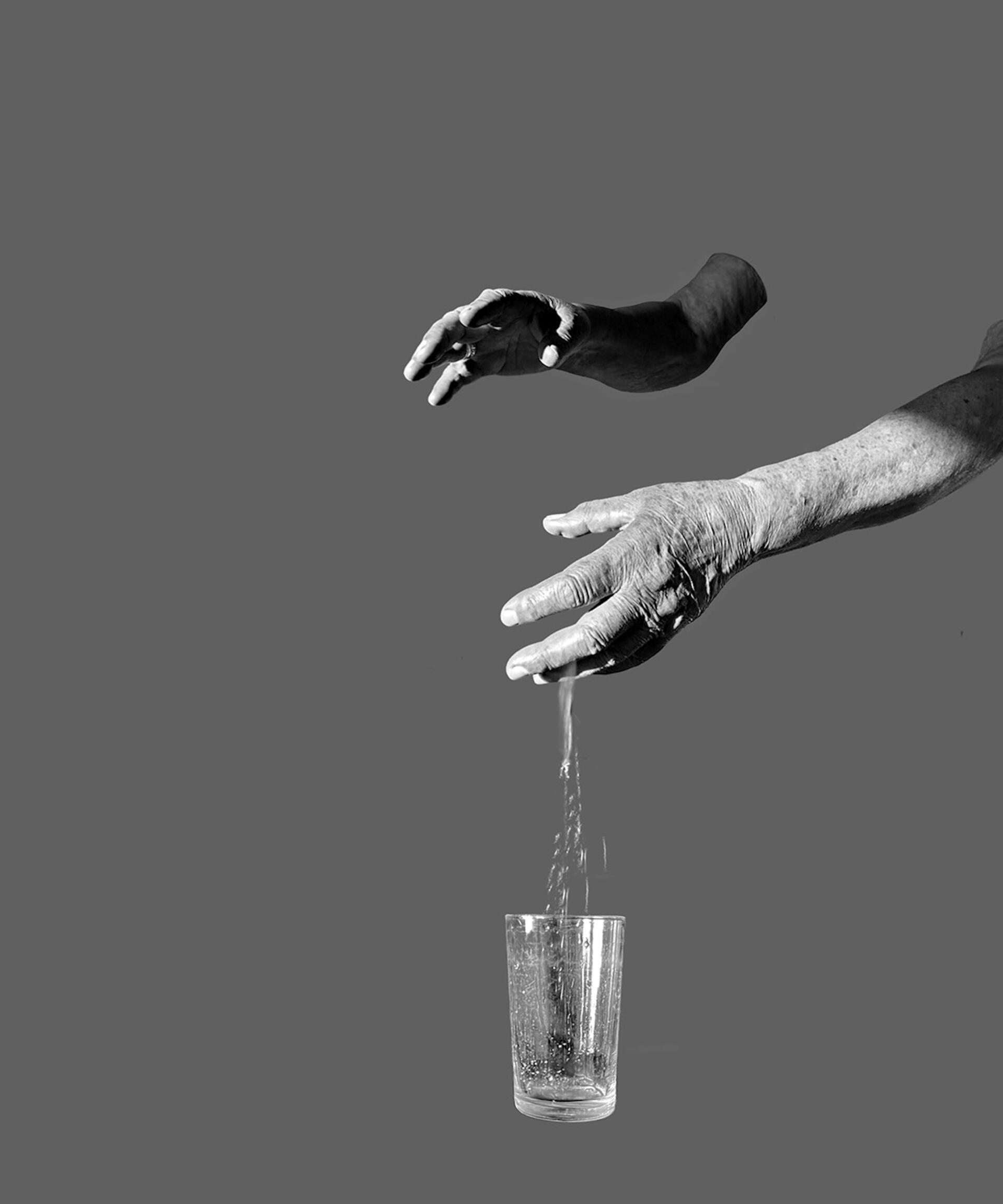
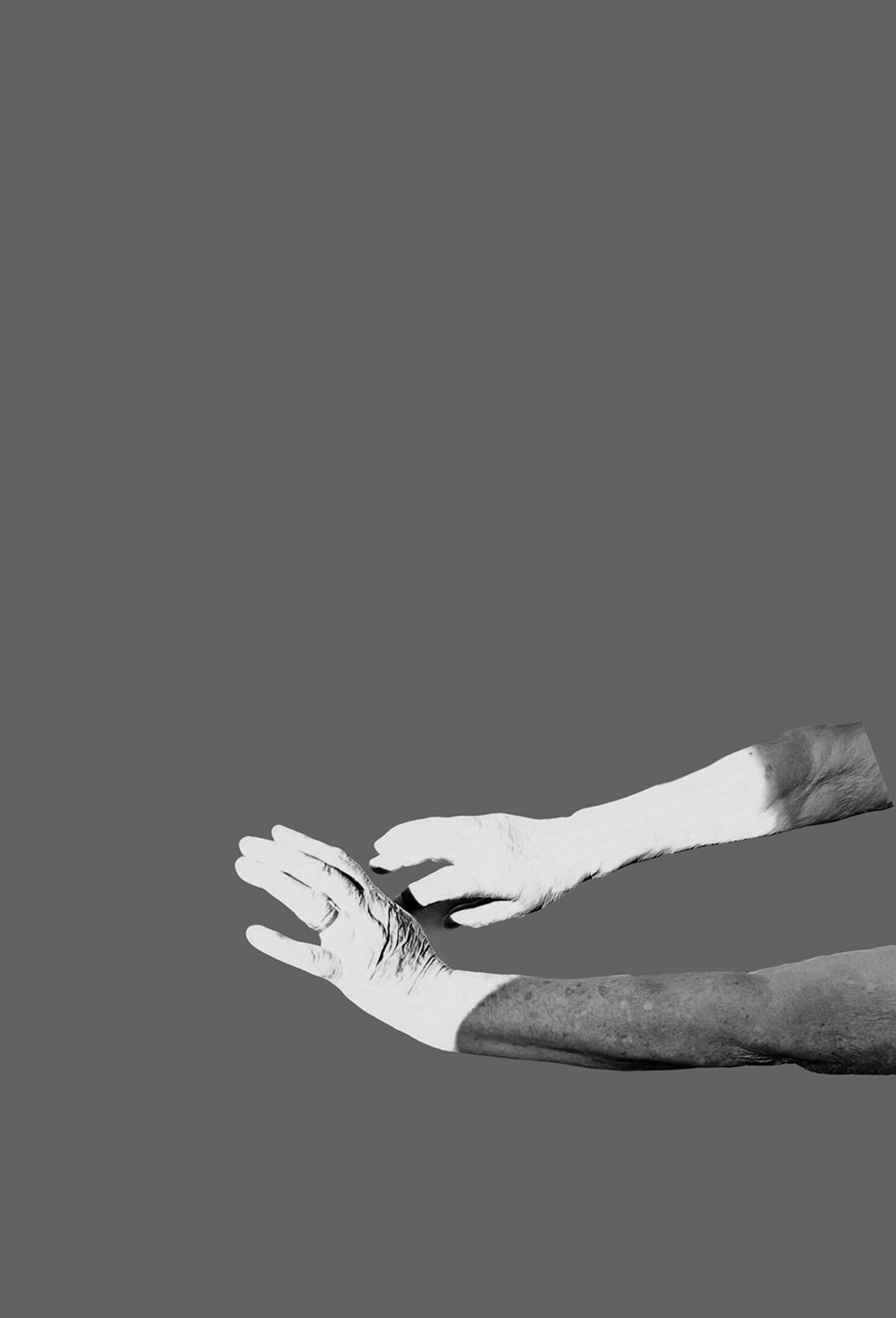
What has been the most memorable response to your work, either from an exhibition or an individual viewer?
In 2018, I exhibited a set of photographs from a project entitled "Grab Them by the Pussy" in two countries with very different cultural characteristics. These images of fetishized bodies, reminiscent of the feminine, showed reactions to the veiled violence implicit in double-meaning words that circulate around women's bodies. On the opening days of both exhibitions, I noticed that my work seemed to stop men in their tracks. Most women glanced at the images sideways and moved on. I haven't forgotten this because I am still trying to understand why.
Sign up with your email address to receive news and updates.
Abstract State© 2023 - All rights served
Interview with
Jemima Charrett-Dykes
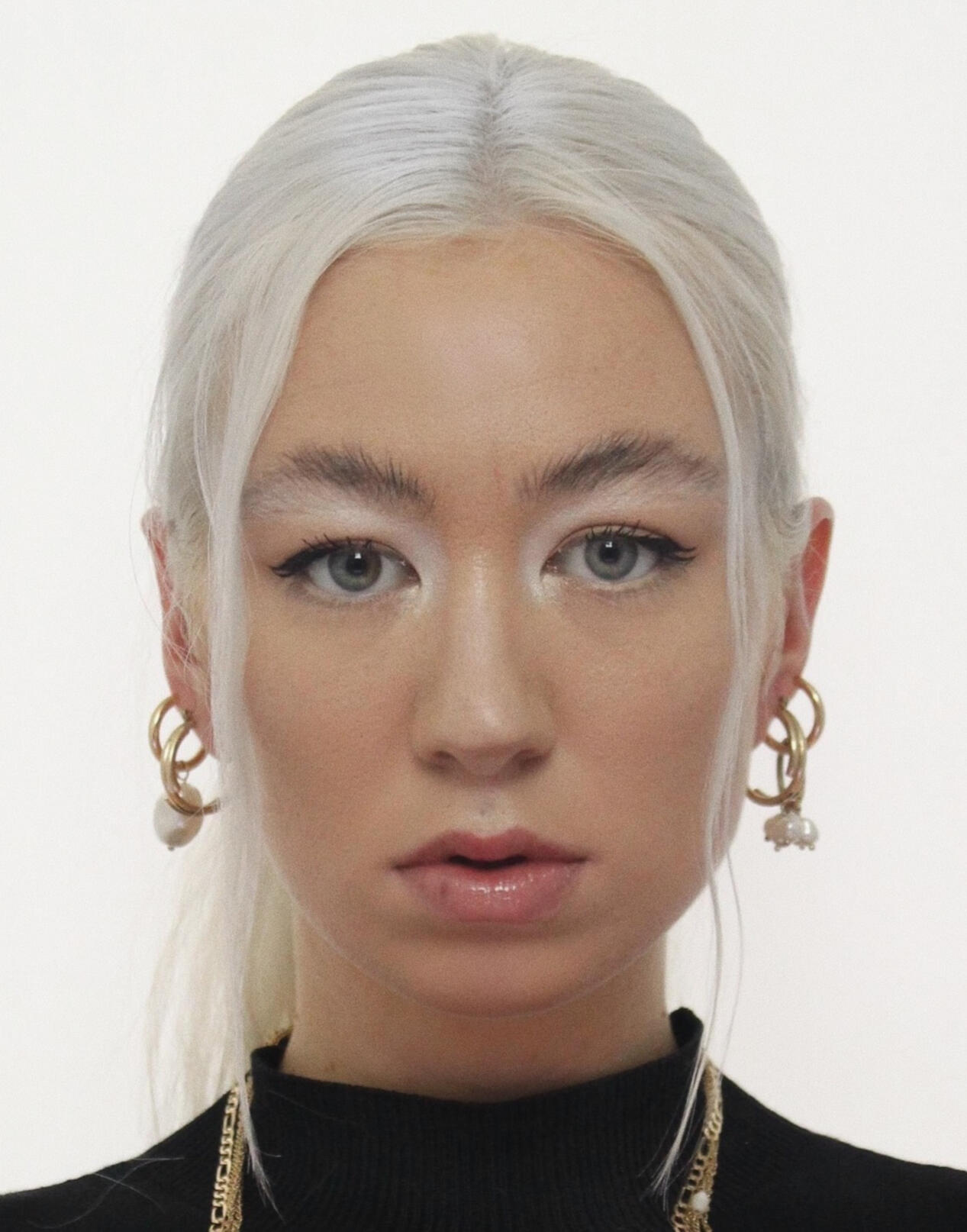
Jemima Charrett-Dykes is an artist whose output is primarily autobiographical, drawing from experiences in childhood and the aftermaths of psychosis as a result of Complex Post-Traumatic Stress Disorder. Using art-making as a therapeutic outlet, Jemima’s work often references her past and the traumas linked to her body both physically and mentally.
Jemima Charrett-Dykes is an artist whose output is primarily autobiographical, drawing from experiences in childhood and the aftermaths of psychosis as a result of Complex Post-Traumatic Stress Disorder. Using art-making as a therapeutic outlet, Jemima’s work often references her past and the traumas linked to her body both physically and mentally.
She operates across multiple mediums, all of which are thematically linked through visions of childhood, the female body an exploration of “the self” and psyche as the main subject. It might also be interesting to talk about my work that is being launched as part of a book collection at MACBA, Barcelona this winter. Jemima has exhibited and sold paintings, photographs and books in a range of galleries across Europe, including London, Glasgow and Paris.
In what ways has your experience with CPTSD shaped your artwork?
Naturally, sometimes I wonder what my life would be like if I didn’t have Complex Post-traumatic Stress Disorder. My experiences in childhood that led to my diagnosis have certainly shaped a lot of how I see and experience the world around me. Similarly, I don’t know what my art would look like had I not experienced such things. My observation of trauma thematically links everything I make and influences my artwork so directly that I think my output would be completely different if I did not have those experiences. At first, I didn’t consciously realize that I was creating work about my conversance with C-PTSD and psychosis. Rather, I was just making art as a way of expressing emotions that I couldn’t put into words. As I became more acquainted with my diagnosis and have been in therapy, I’ve realized that it really is my trauma that is influencing all of my decisions when art-making. It is what shapes every idea and series that I create, as my output is an autobiographical narrative on my experience in childhood and post-adolescence, where I began to deal with the repercussions of being traumatized. As I initially began making art simply by way of therapy and not for the purposes of becoming an artist, I don’t know that I would have ever picked up a paintbrush had I not been unwell, which is very strange to think about.
What is your process for transforming personal and painful experiences into art?
When I am creating work, I am dialed into my unconscious mind and less focused on linear thought. I find that I best create when there is a memory or feeling that I find is taking up a lot of space in my head. When I allow space for this particular emotion or experience whilst art-making, I have a springboard that forms the central theme for the piece I am starting. From here, tangents and connotations form and more memories or emotions come to light. This is helpful especially when I’m painting, as the different emotions that emerge from my unconscious blend together to form one piece, which is why my work is so abstract—it’s basically the coming together of a handful of ideas and emotions relating to one overarching theme. I’m quite a private person, but I find that when I’m painting or taking photographs it becomes very easy to address topics that are very personal to me. I think this has a lot to do with the fact that I am creating imagery out of more metaphysical, conceptual ideas that I would struggle to put into cohesive words in normal conversation. Creating a vision from painful experiences is a process I find really helpful. It can be a lot less intimidating to be focused both on what I’m creating as well as these distressing emotions, rather than to simply sit with difficult thoughts and memories.

How do you decide which medium best suits your creative vision?
Typically, the two mediums I use the most are mixed media painting or photography.
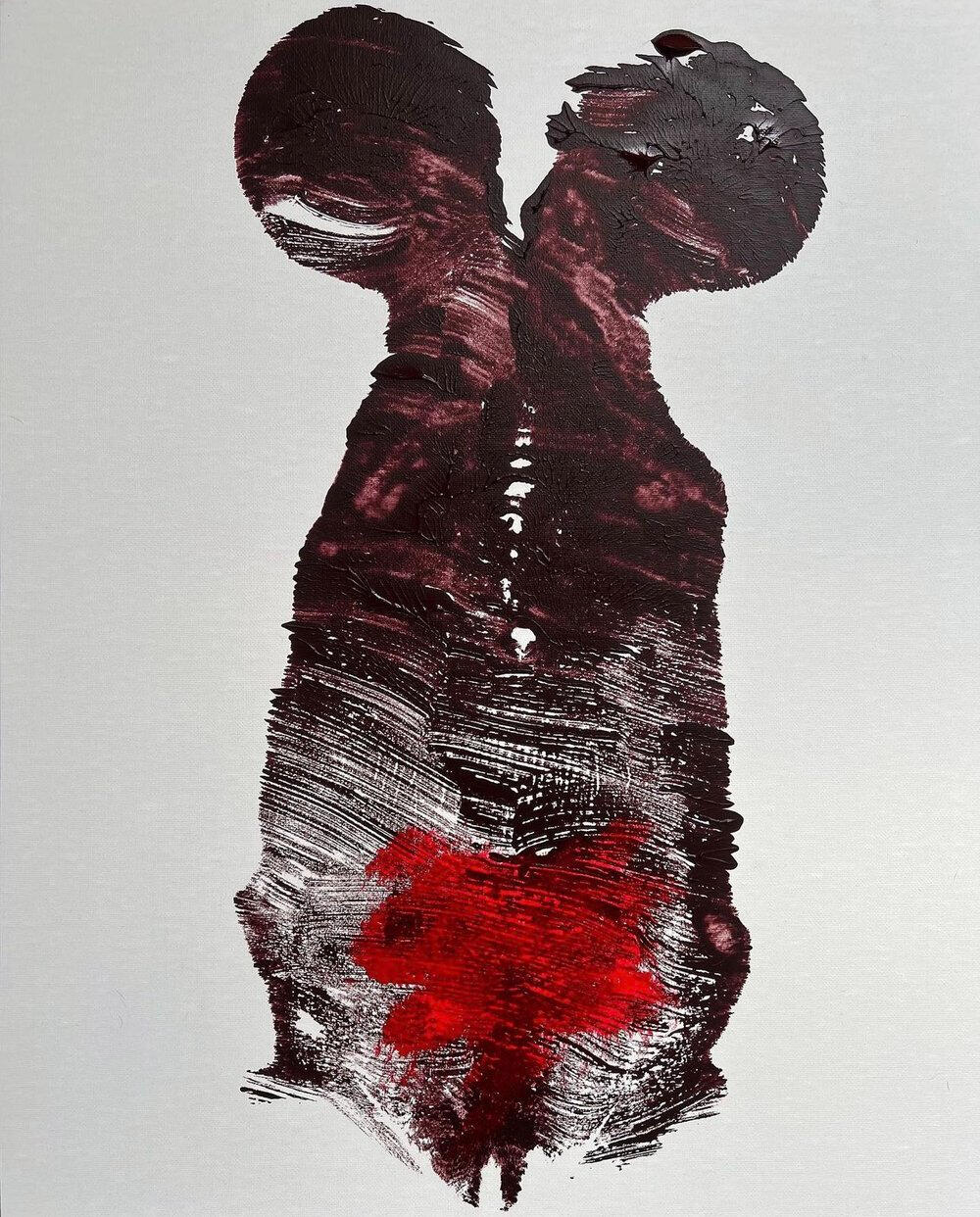
I think I’m drawn to photography when I have a more specific idea that I’m considering; painting is a medium I turn to when I’m expressing more fluid, less elusive chains of emotions. Often, the ideas for my mixed media images are born from archival imagery, like when I look at old photographs or letters that evoke certain feelings. I’m currently creating a book that includes a bit of everything self-portraiture, poetry, and found imagery and it’s proving useful to combine different mediums in order to tell different parts of my story. Photography and found imagery can be harnessed to illustrate particular memories and moments in my life, whereas, when the vision is leaning toward the metaphysical, concepts are more easily explored through poetry and painting.
What inspires your focus on themes of childhood and the female body?
When I first started art-making, I was focused solely on my childhood and was harnessing art as a form of therapy. Whilst I was studying my undergrad in photography I was really interested in artists like Jenny Saville and Louise Bourgeois, whose work follows similar narratives to my own. When I studied art psychotherapy in Edinburgh, I read a book called ‘The Body Keeps the Score’ by Bessel van der Kolk, where the central themes are surrounding how the physical body contains and is affected by trauma. I think that, in relating to this, it was a combination of taking inspiration from feminist artists and my personal interest in “The Self” that led to my exploring the female body in my output. Although I had previously explored nudity within self-portraiture, the first painting I ever made was actually created in response to a long time spent waiting for a diagnosis in regards to my own reproductive organs, so this was the first time I really explicitly explored that theme. Since then, both the ideas of childhood, trauma, and the female body have started to merge and become more fluid topics within my work.
Can you discuss the role of the self and psyche in your work?
The self is a central theme across my whole output, and something I am continuously working on addressing and improving. I’m very invested in Carl Jung’s theory regarding the self, how it is an archetype embedded in all of us where the conscious and unconscious come together in unison. Since being in therapy myself, I’ve definitely become a lot more aware of my own individuation and the importance of addressing every aspect of my personality and experiences, however difficult. Exploring the self within my artwork aids me in constantly remaining conscious of my ever-changing psyche, and the role of this when art-making proves essential to how I reflect on certain memories, especially when I am faced with trauma.
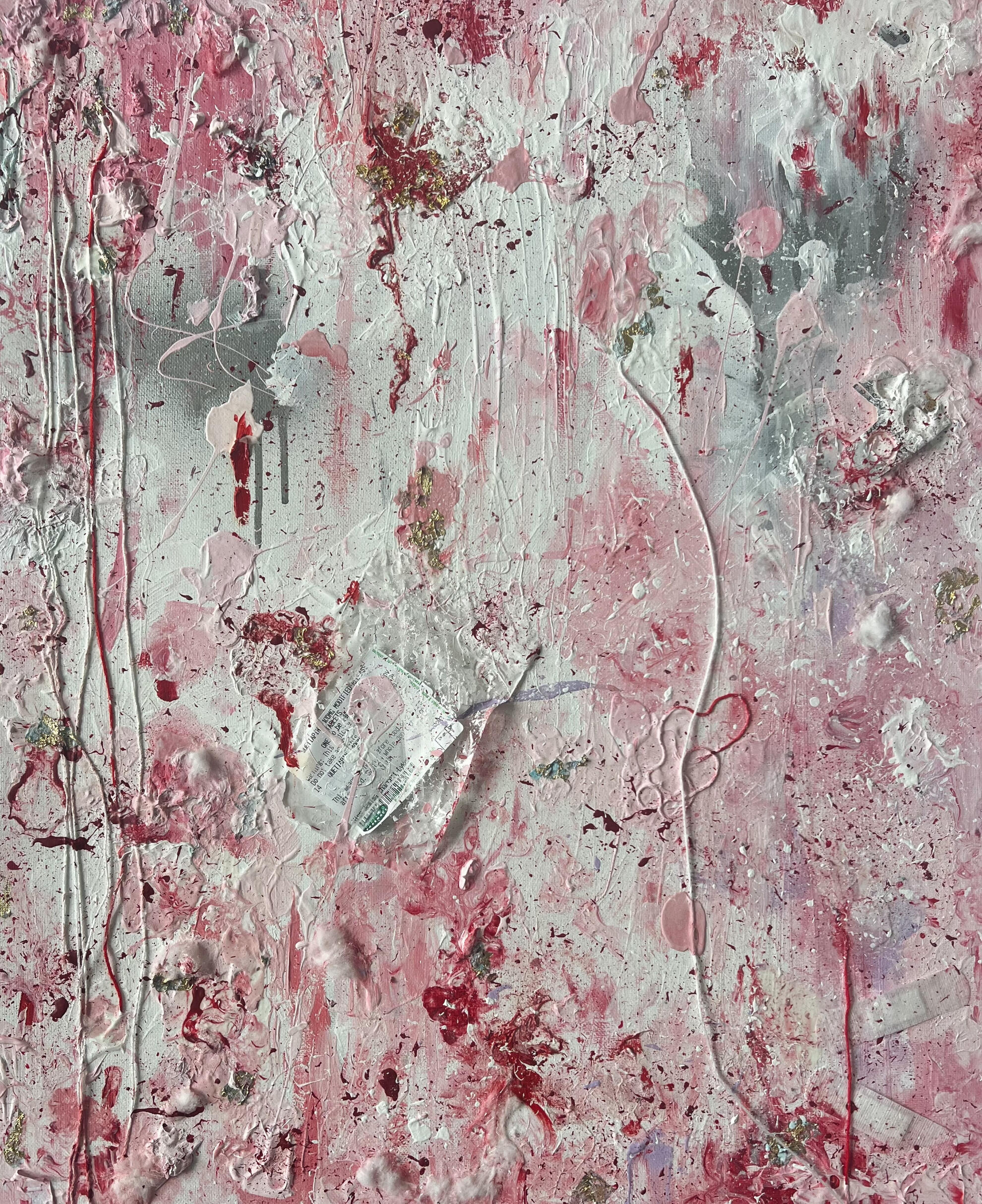
How have audiences in different European cities responded to your work?
I’ve been quite lucky in that I feel my work is transferable between different types of audiences from varying walks of life. I think the fact that my artwork lends itself to the abstract plays an essential part in this translation. I think my work resonates most with an English-speaking viewer, as a lot of the narrative within my work is referred to within the poetry and words harnessed alongside the imagery. In saying that, I think it is my paintings that don’t include locution that are most consistently appreciated throughout Europe, which is something that has certainly boosted my confidence in my ability to paint over time.
What role has art played in your healing process, and what advice do you have for artists using art as therapy?
I can’t honestly say that I know I would be as healed from past traumas as I am today had I not begun to create work about my experiences and mental health. I feel that, no matter your ability as an artist, channelling your creativity and unconsciousness can play a vital role in healing from both physical and mental trauma.
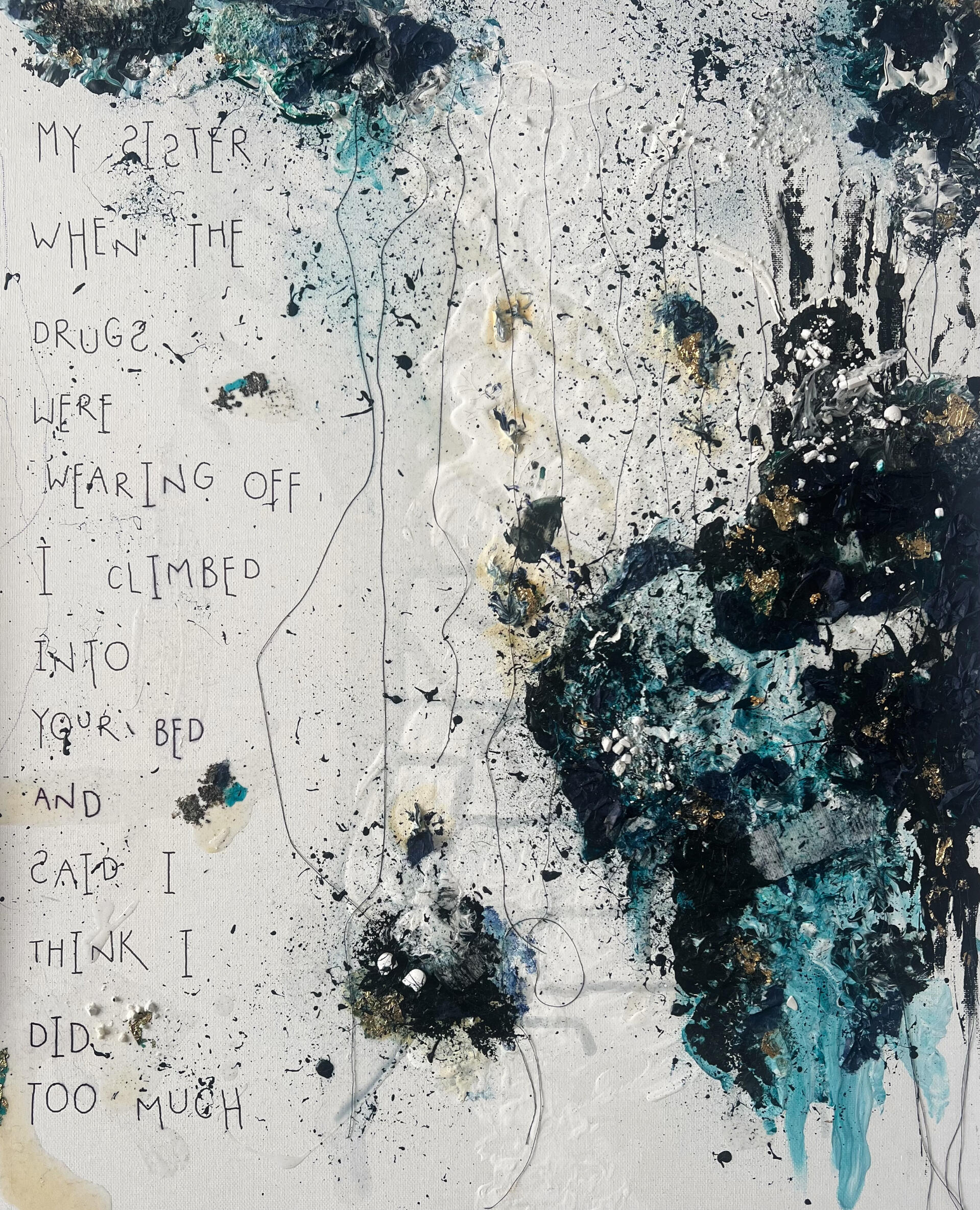
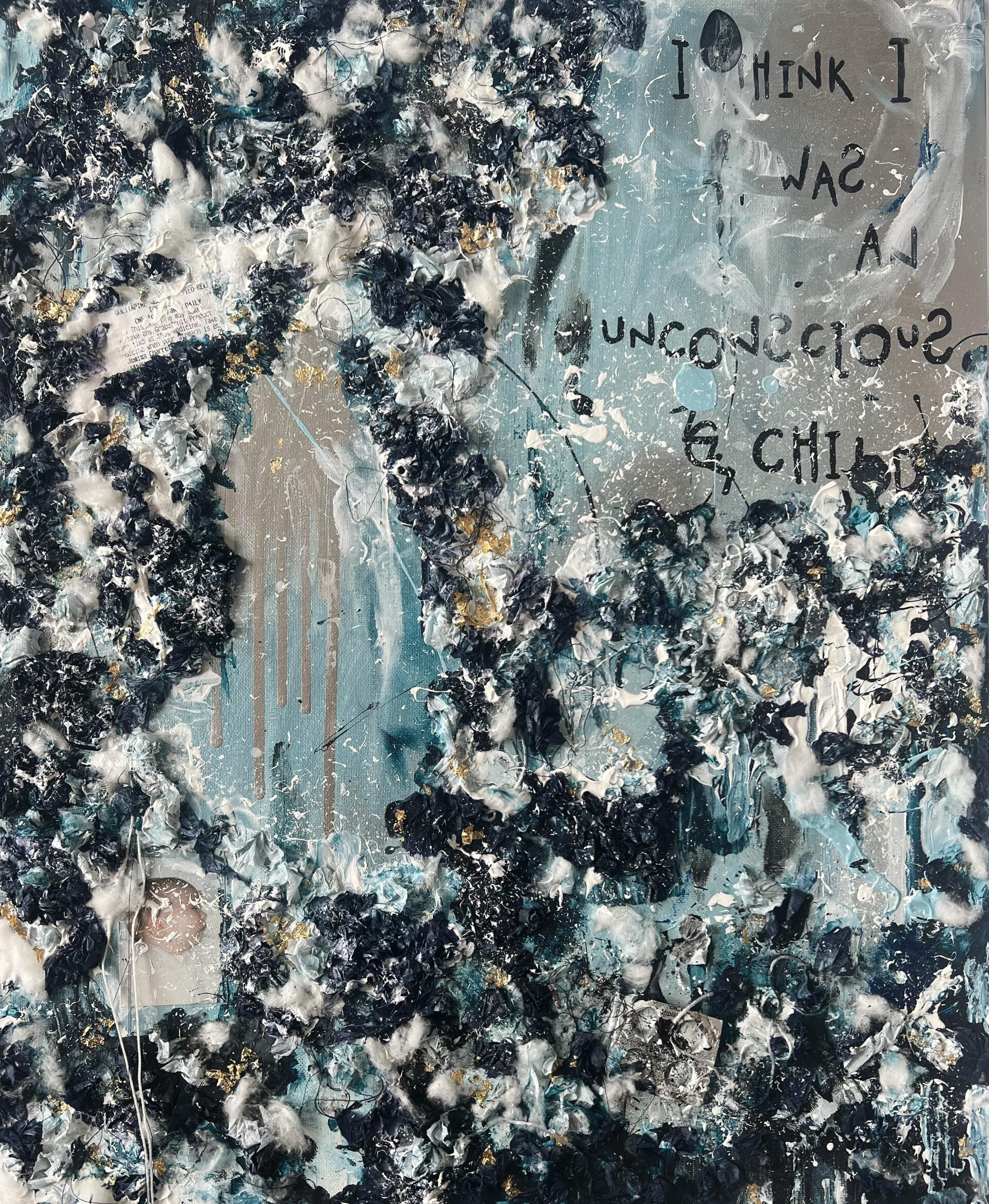
I would advise anyone interested in using art as a form of therapy to become acquainted with the core ideas that are weaved through the subject. I first familiarized myself with art psychotherapy by reading books from writers like Alain de Botton (his book "Art as Therapy" is beautiful and one of my favourite comfort reads) and looking at work by pioneers of the Art Brut and Naïve Art movement like Jean Dubuffet. Interacting with art that isn’t necessarily created by artists with formal training is something I found really helpful as someone with no official education in painting as I found both the imagery and themes being discussed relatable, and it definitely provided me with some reassurance, feeling less alone and less fearful of judgment in my endeavour to create.
Sign up with your email address to receive news and updates.
Abstract State© 2023 - All rights served
Interview with
Dotan Negrin
Dotan Negrin is an experiential designer and multimedia artist based in NYC. He is the Founder/CEO of LUME Studios, a leading experiential agency with a multi-level venue in TriBeCa.Founded in 2016, LUME Studios serves as a hub for international brands, celebrities, and artists to create unforgettable experiences and video productions. Through the use of high-end visual software, projection mapping, and spatial audio, the venue and creative services are tailored to enable his clients to tell visually dynamic and engaging stories that resonate with audiences.Over the past few years, LUME has also become the premier destination for new media art exhibitions through its SUBJECTIVE programming, which connects the digital and physical realms by providing a platform for artists, collectors, and communities to celebrate art and internet culture in NYC.
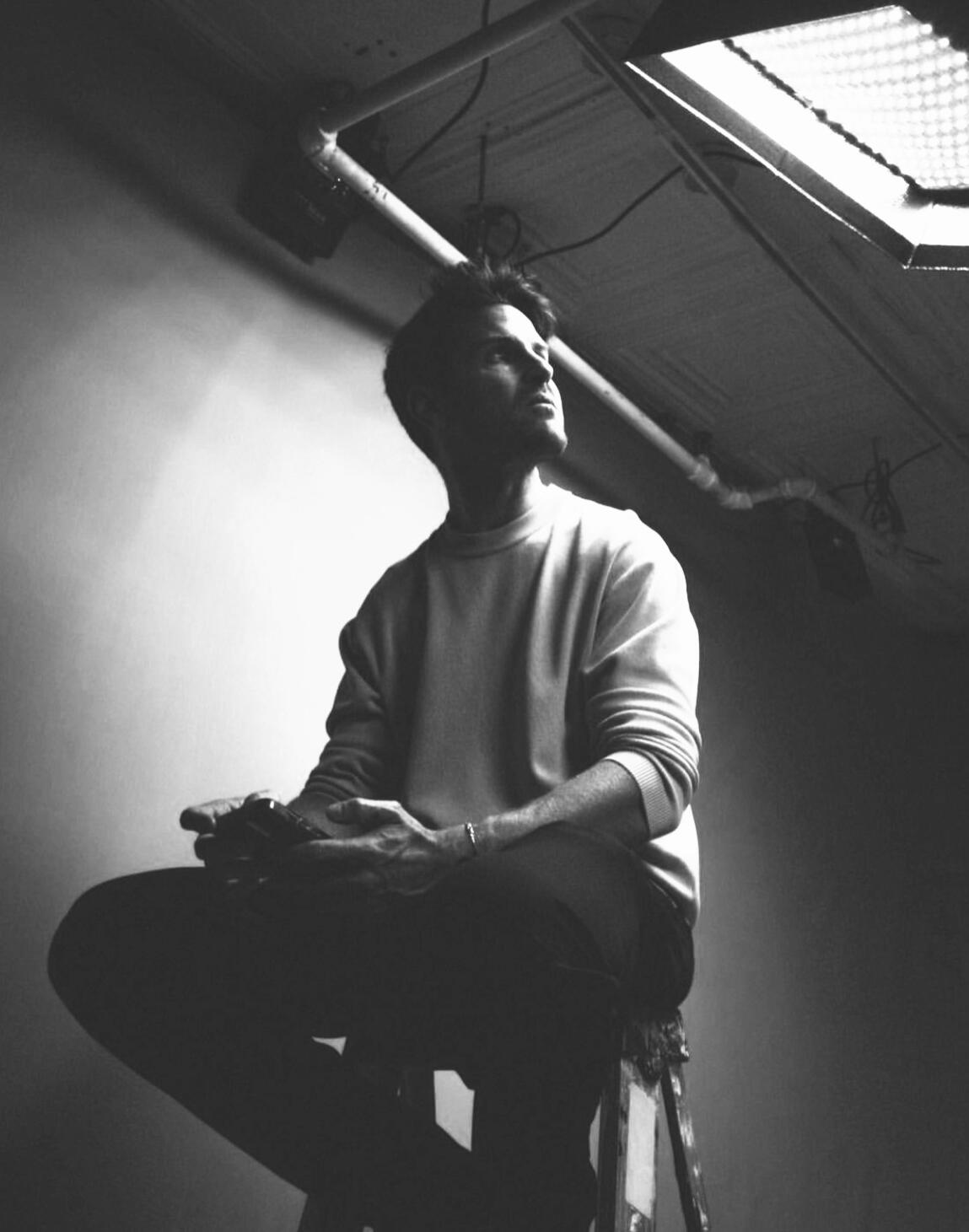
Dotan is also known for his global travels around the world with a full-size piano, playing music in more than 24 countries and 500 cities between 2010-2016. His travels took him on an adventure of living in a van, meeting thousands of people who joined him in public jam sessions in the streets. Dotan documented his travels on his YouTube channel, Piano Around the World.
Dotan, if I were to sum up your roles, you're a musician, a CEO, and a curator who brings digital and physical art together in unique ways at LUME Studios. But, who do you feel you are the most: musician, CEO, or curator?
Ten years ago, I was a full-time musician doing gigs and making YouTube videos. Now, after launching LUME, I've evolved into a founder/producer. I spend a lot more time managing the team, designing new installations, and maintaining the space. I really enjoy producing our own experiences, events, and art shows. As of now, because so much of my time is spent developing LUME Studios, I would consider myself more of a founder/CEO.
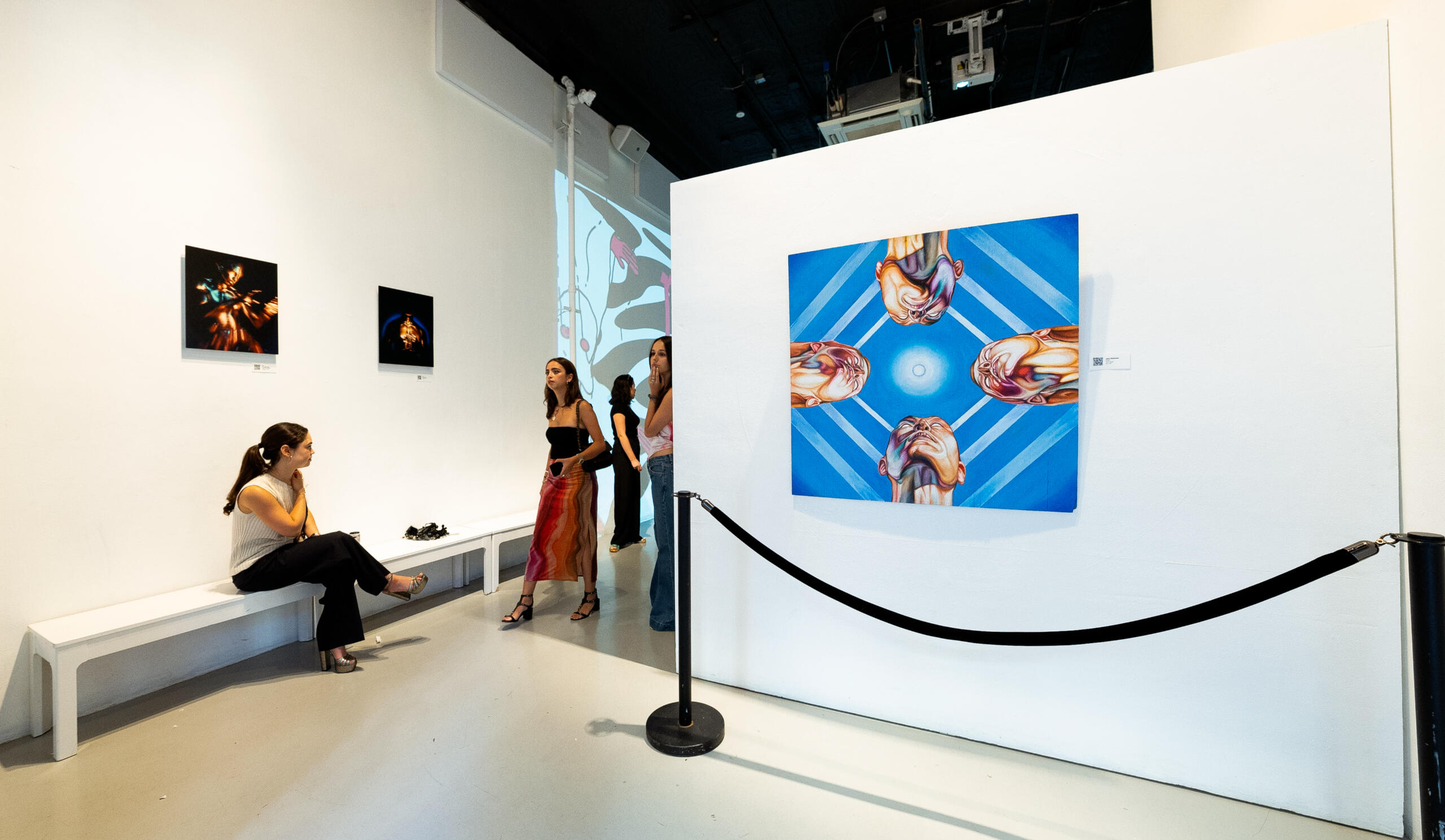
Based on your choice, how does that primary identity shape your approach to your other responsibilities?"
Being a founder, I am forced to wear a lot of hats, and I find myself shifting, using my brain in a variety of ways throughout the workdays. My management style is creative and experimental, constantly trying new things to see what works. This makes my approach more freestyle and less organized compared to others. I’m more of a "let's try this, let's try that, let's see what works" kind of person. As an artist, I was not always the most organized, but my work as a founder has forced me to spend more time planning and organizing before I take actions
Can you share a memorable experience from your global travels with the piano that had a significant impact on you?
Sure. After over five years of traveling around the world and living out of my van, I learned that we all have friends we haven't met yet. Everywhere I went, people wanted to connect, live in peace, and be happy. I saw that there are more good people in the world than bad people. In Zurich, I met a guy who introduced me to local artists and musicians. The next day, I played on the streets, and had 50 strangers join in to participate in co-creating live music and fun.Another time in 2011, I posted on Couchsurfing.com that I was going to Madison, WI but didn't have anyone to celebrate my birthday with. One of the people on the platform saw my message and invited me to join him and 8 friends for a birthday dinner. I spent my birthday eating dinner with complete strangers who celebrated with me and even got me a cake. These experiences showed me the universal desire for connection.
What do you enjoy most about hosting new media art exhibitions at LUME Studios, and how do you select the artists and projects featured in the SUBJECTIVE programming?
I love people. I enjoy meeting interesting people from around the world and discovering how they use technology and art in unique ways. My goal is to create exhibitions that encourage connections and collaborations. I want to inspire people to create, I want to give them the ability to do so, and I want them to walk out in awe of their experience. We select artists and projects by seeking out innovative and unique work, often tapping into various communities and galleries to find fresh talent.
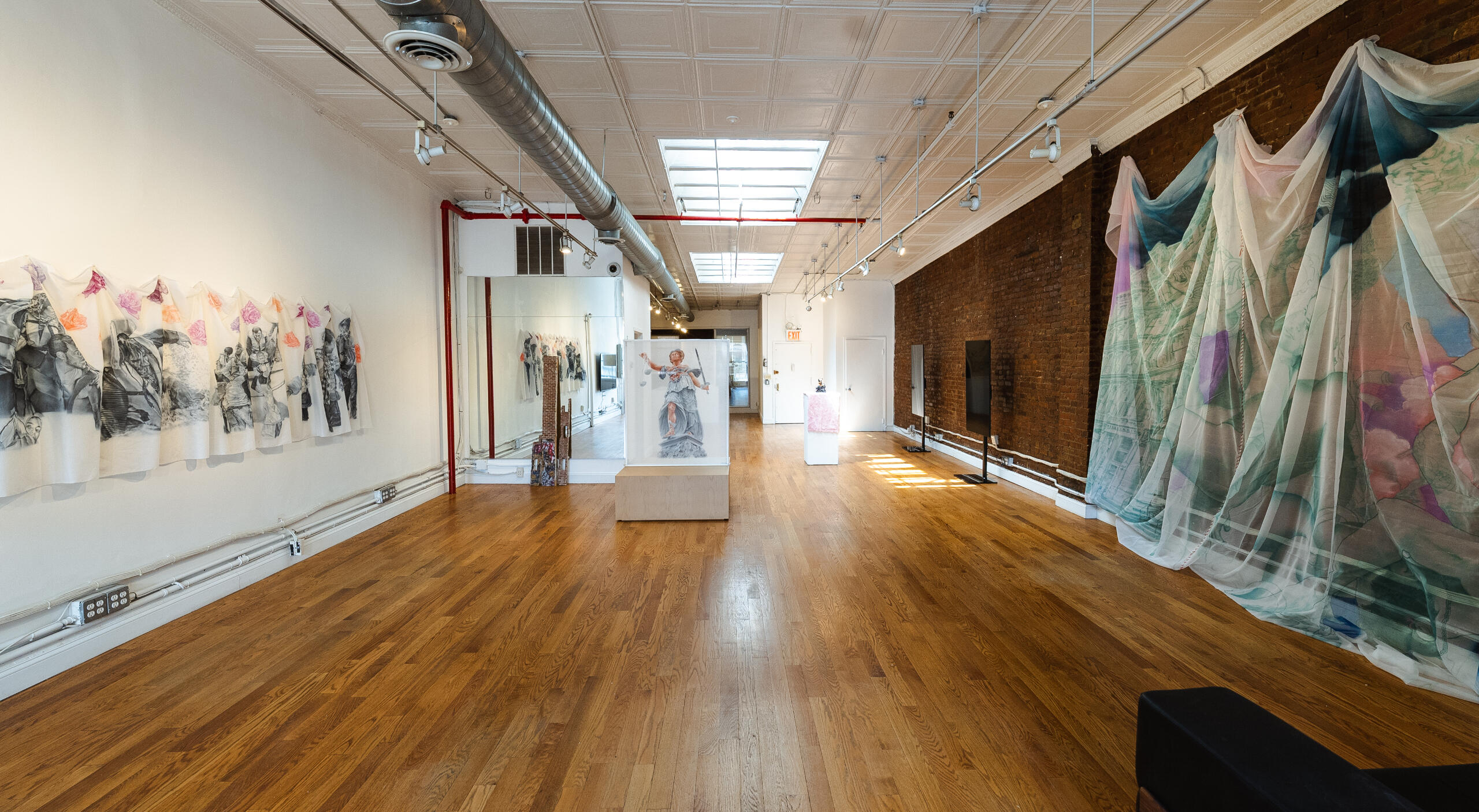
What inspired you to start LUME Studios, and how has it evolved since its founding in 2016?
LUME Studios, originally called 393 NYC, was rebranded in 2019. The inspiration behind it stems from my lifelong journey of creativity and exploration. From playing with Legos as a child to pursuing acting, music, and various forms of art throughout my life, each experience contributed to the foundation of LUME Studios. After college, I delved into video production and traveled the world with my piano, merging different skills and passions along the way into a YouTube channel called Piano Around the World.

LUME Studios represents the culmination of these experiences—years of learning and practicing lighting, sound, video, projection mapping, curation, and business management. In 2016, I saw an opportunity to take over a space previously occupied by another business. With low rent and a vision for hosting events, particularly for brands, I seized the opportunity and embarked on the journey of building LUME Studios.
What has been the most challenging project you've worked on at LUME Studios, and how did you overcome those challenges?
The most challenging period was in the beginning when I was handling everything solo, working 16-hour days consistently. While there wasn't one specific project that stood out as the most difficult, there was a stretch in 2017 where I worked 20 consecutive days, 12 to 16 hours each day, which was incredibly demanding. Dealing with the impact of COVID-19 was also extremely challenging, particularly having to let go of staff and taking on the responsibility of managing the entire space by myself. While I can't pinpoint one specific event, there were definitely moments of being overworked and exhausted. Each challenge required perseverance and determination to overcome.
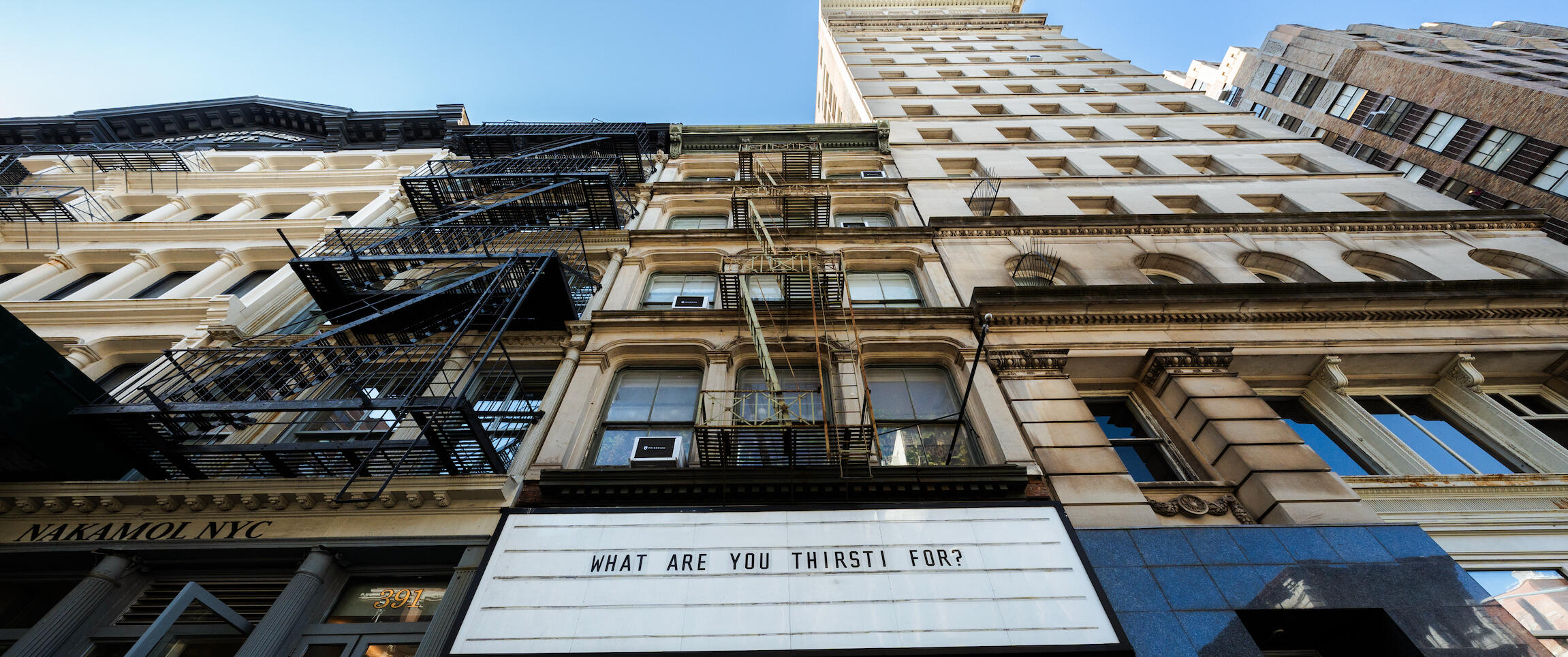
If you could collaborate with any artist, living or deceased, on a project at LUME Studios, who would it be and why?
If I could collaborate with one artist, it would be Bobby McFerrin. I’ve always been excited by his work as a musician and his ability to bring the entire audience together in song. I have seen him perform many times and even met him. He has the ability to use his body and voice as the instrument itself. He is also famous for bringing musicians on stage from the audience, and it's such a good time. I would love to do an audio-reactive experience with him, combining sound, light, and color together in the space.
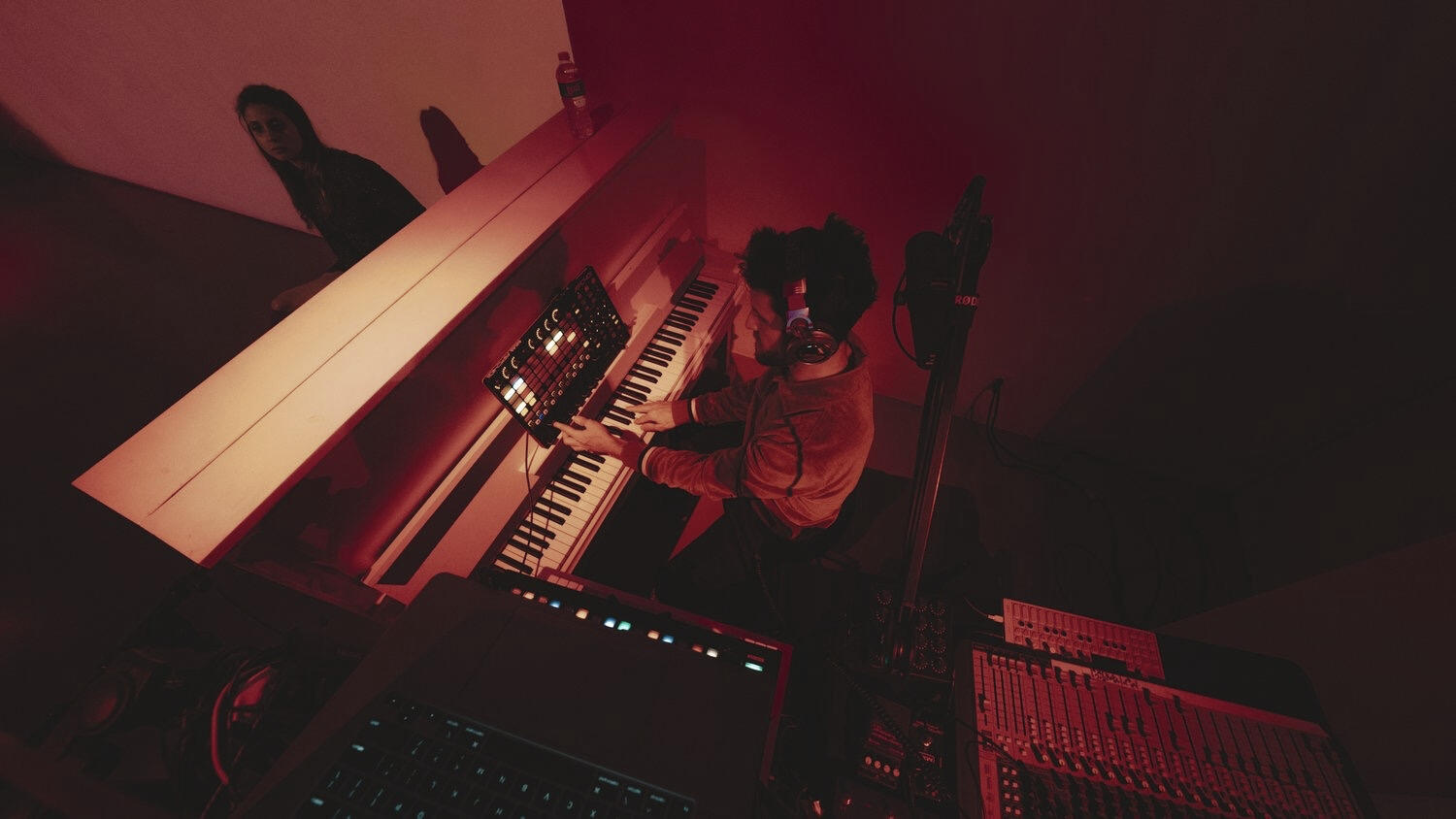
Sign up with your email address to receive news and updates.
Abstract State© 2023 - All rights served
Oliviero Leonardi

Oliviero Leonardi (1921 - 2019) was an Italian painter and sculptor based in Rome. He was largely recognized in the 1970/80s as one of the leader in painting with experimental materials on steel plates baked in oven at high fire (at 900 degrees Celsius). His artistic research focused, among others, on the subject of cosmogony. He was partially influenced by futurism, surrealism, cubism and art informel.
In the 1970/80s, he had more than 25 collective and solo exhibitions in major art galleries in Italy, France, Spain, Monaco, Germany and Luxembourg. He exhibited with a collective of artists including Giorgio De Chirico, Salvador Dalí and Joan Miró during the 1975 Contemporary Art Exhibition in Fiuggi, Italy. His work was also exhibited at the Maschio Angioino, the Centro di Cultura Italiana, the Saarland Museum, the Van Gogh House Museum and the Limoges Biennale, and commissioned for public spaces including the metro in the city of Rome and the Pan-American headquarters in New York.

Following two decades of successful exhibitions, Oliviero Leonardi detached from the world of art on his own, and slowly started creating art for himself from the 1990s until his passing few years ago. His efforts, art, beliefs, innovative art techniques, numerous exhibitions, ideas, friends, and critics, namely his work and art as a whole, were almost completely forgotten.

During his exploration phase on the island of Capri, Oliviero Leonardi discovered the potential of steel as an artistic medium. After Capri, he travelled to Florence, Venice, Palermo, Rovereto and Ravenna to perfect his knowledge of the artistic forms.In a post-WWII context, he became passionate about studying the origin of our universe and, in the broader sense, human existence and condition.
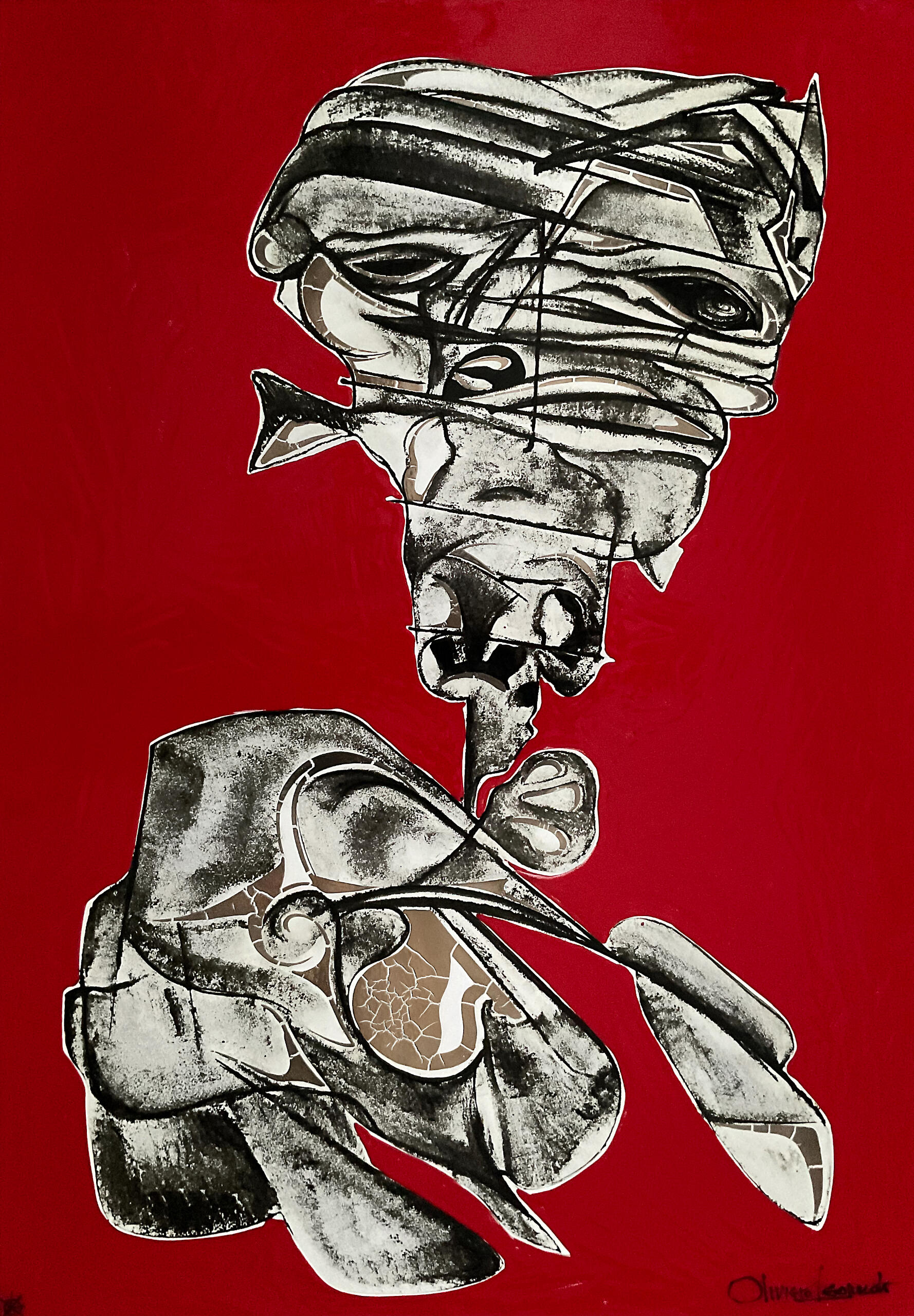
Oliviero Leonardi became one of the leader in paintings with experimental materials on steel baked in oven at high fire. He believed that art and its message should not be limited by the degrading physical attributes of its medium. He wanted to crystallize his artistic message ad vitam aeternam.

His work captures the great scene of the world where the artist’s vision evolves to the heart of known and unknown spaces. The art of Oliviero Leonardi tells a sacred story, the origin, a primordial event that is created by the colors and the letters in baked ovens at high temperature.
Time is not a continuous concept in Oliviero Leonardi’s art.

Sign up with your email address to receive news and updates.
Abstract State© 2023 - All rights served
PRIVACY NOTICE
Abstract State, a Contemporary Art Magazine ("we," "us," or "our") is committed to protecting the privacy of our users. This Privacy Policy outlines how we collect, use, and disclose information when you use our website or interact with our services. By accessing our website or using our services, you consent to the collection and use of your information in accordance with this Privacy Policy.Information We Collect
Personal Information: When you interact with our website or services, we may collect personal information such as your name, email address, postal address, and phone number. This information is collected when you subscribe to our magazine, sign up for newsletters, participate in surveys or promotions, place pre-orders, or make a donation.Usage Information: We may collect information about your usage of our website, including your IP address, browser type, operating system, and pages visited. This information helps us improve our website and provide a better user experience.Cookies: Like many websites, we use cookies to collect information and enhance your browsing experience. Cookies are small files stored on your device that track your interactions with our website. You can choose to disable cookies in your browser settings, but this may affect certain features of our website.How We Use Your Information
To Provide Services: We use the information we collect to fulfill your requests for our magazine, newsletters, and other services. This includes processing subscriptions, pre-orders, donations, advertisements, sponsorship agreements, delivering content, and responding to inquiries.To Improve Our Services: We analyze usage data to understand how visitors interact with our website and services, helping us identify areas for improvement and develop new features.To Communicate with You: We may use your contact information to send you updates about our magazine, promotions, donations, pre-orders, sponsorships, and other relevant news. You can opt out of these communications at any time by following the unsubscribe instructions included in our emails.To Manage Advertisements and Sponsorships: When you make a donation, advertise with us, or participate as a sponsor, we may display your name or business name, subject to any agreements in place. We ensure that information shared complies with applicable regulations.To Protect Our Rights: We may use your information to investigate and prevent fraud, unauthorized access, or other illegal activities.Disclosure of Information
We do not sell, trade, or rent your personal information to third parties without your consent. However, we may share your information with trusted service providers who assist us in operating our website, conducting business, processing donations, pre-orders, advertising, or servicing you, as long as those parties agree to keep this information confidential.We may also disclose your information when we believe it is necessary to comply with the law, enforce our site policies, or protect our or others' rights, property, or safety.Artist and Photographer Rights
We publish artwork and photography with permission from the artists and photographers. If a published work is licensed or used elsewhere by other publications, we are not responsible for additional usage, rights, or royalties associated with that work, provided we have received initial permission from the artist or photographer to publish it on our platform.Data Security
We take reasonable measures to protect your personal information from unauthorized access, disclosure, alteration, or destruction. However, no method of transmission over the internet or electronic storage is 100% secure, and we cannot guarantee absolute security.Children's Privacy
Our website and services are not directed at children under the age of 13. We do not knowingly collect personal information from children. If you are a parent or guardian and believe that your child has provided us with personal information, please contact us, and we will take steps to remove that information from our systems.Changes to this Privacy Policy
We may update this Privacy Policy from time to time. Any changes will be posted on this page, and the effective date will be updated accordingly. We encourage you to review this Privacy Policy periodically for any changes.Contact Us
If you have any questions or concerns about this Privacy Policy or our practices, please contact us at info@abstractstate.us.This Privacy Policy was last updated on October 29th, 2024.
Sign up with your email address to receive news and updates.
Abstract State© 2023 - All rights served
Sign up with your email address to receive news and updates.
Reach an exclusive, art-focused audience through Abstract State Magazine. We offer premium ad spaces like the back cover, inside full page and sponsor recognition options to showcase your brand.Ad OptionsBack Cover & Inside Options: Ideal for brands seeking high-impact exposure.
Sponsor Recognition on the Cover: Subtle “Presented by [Brand Name]” for tasteful brand visibility.Interested in Advertising with Us?
Contact us today at info@abstractstate.us to explore advertising opportunities.














